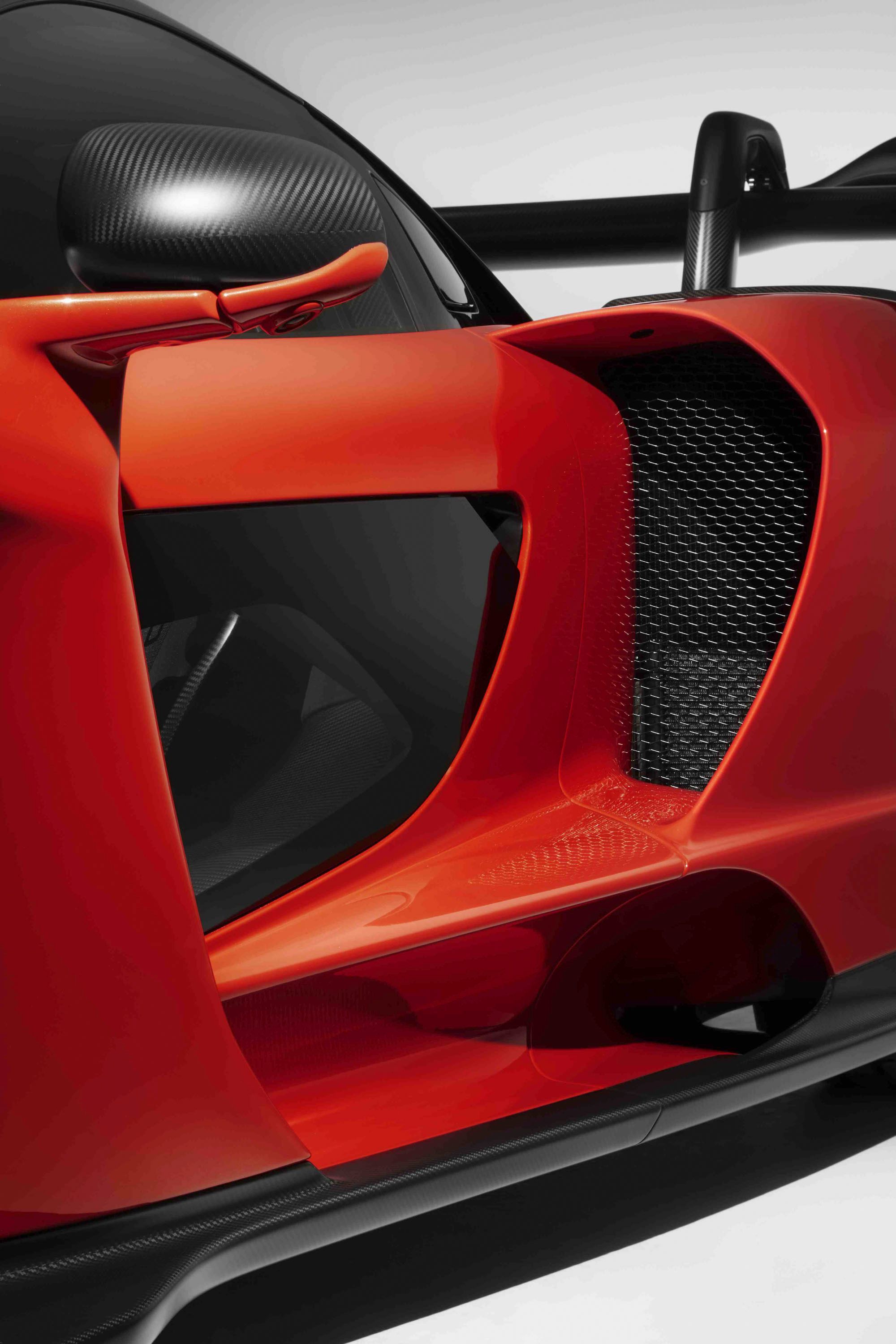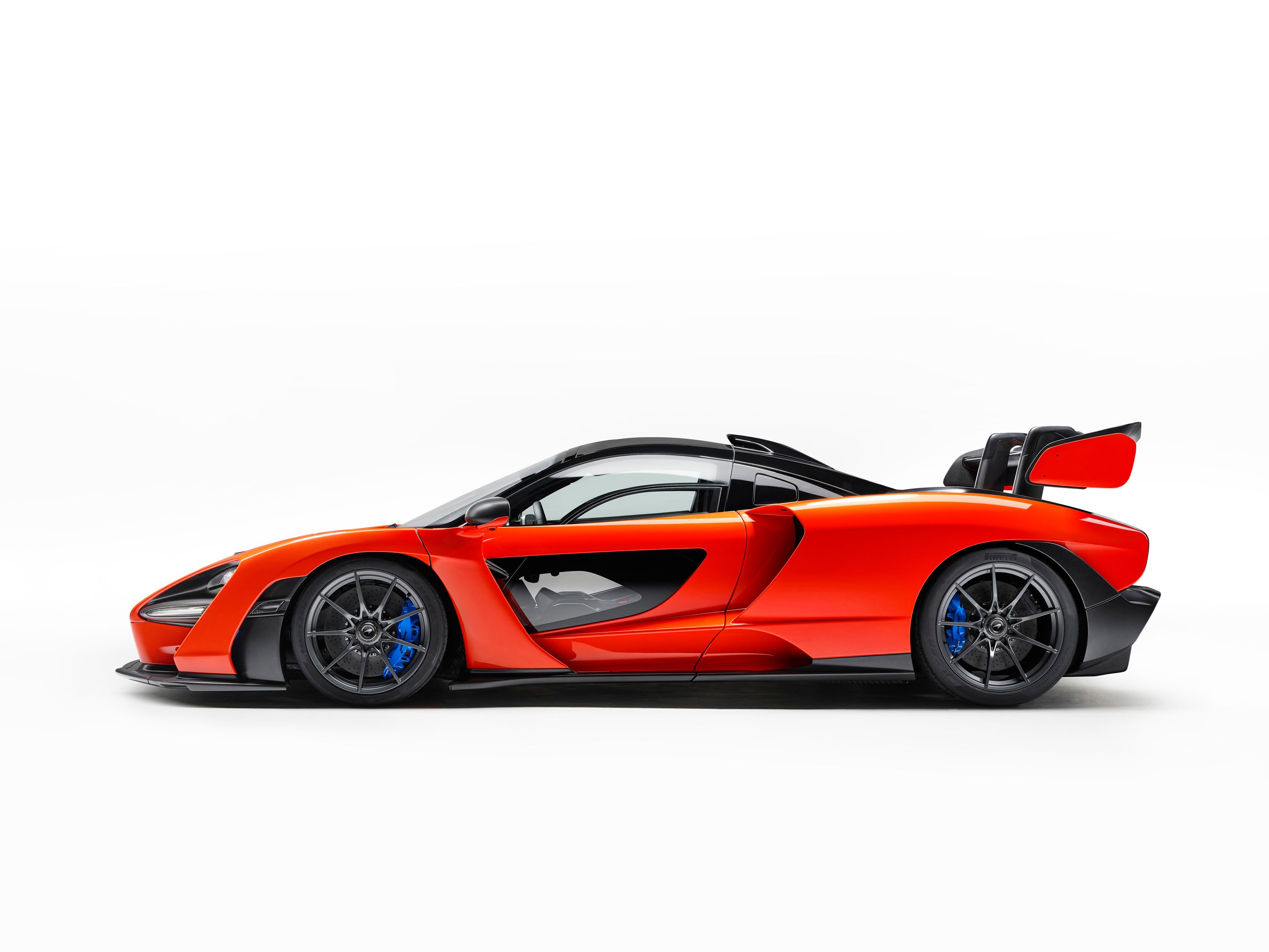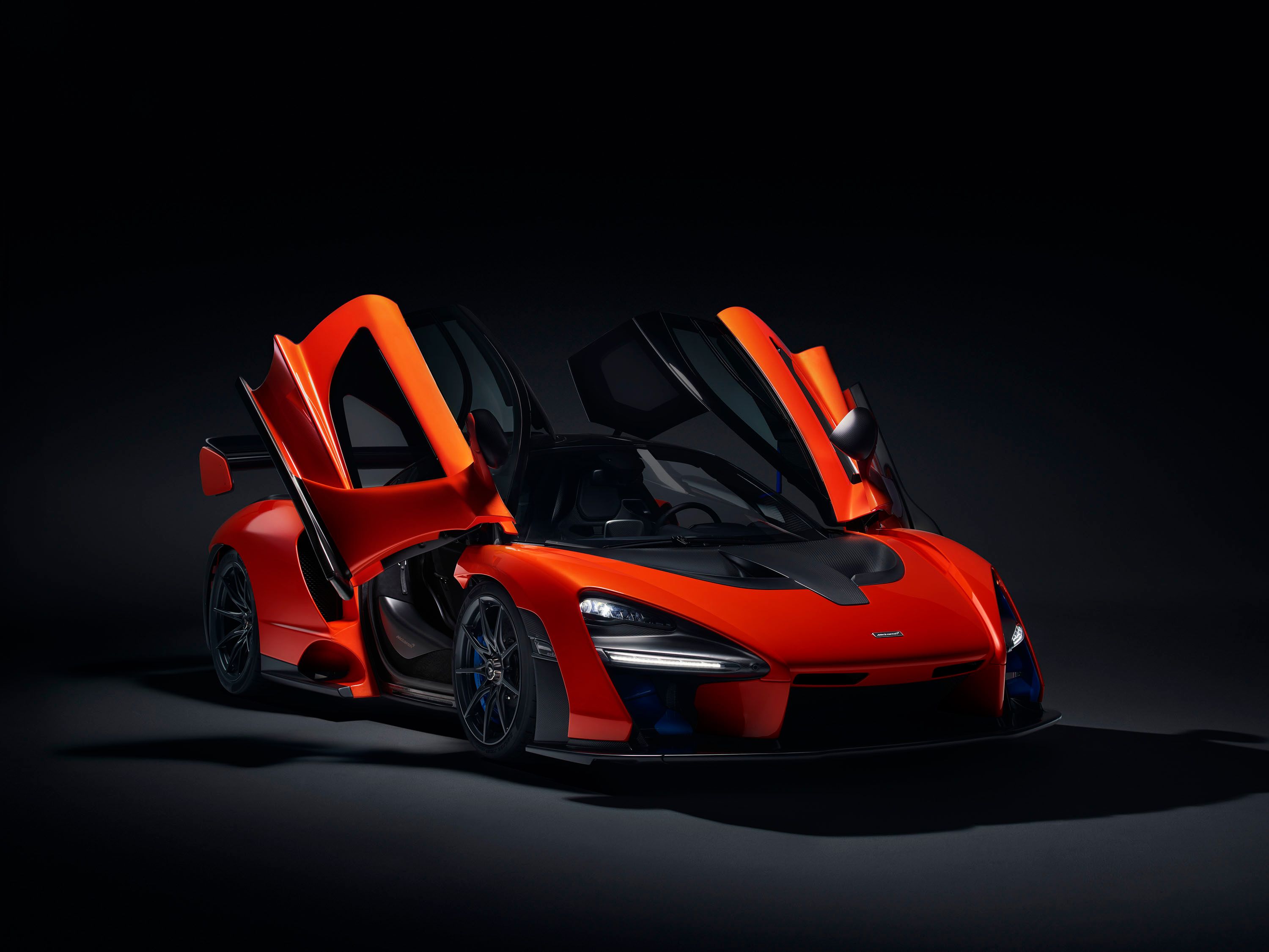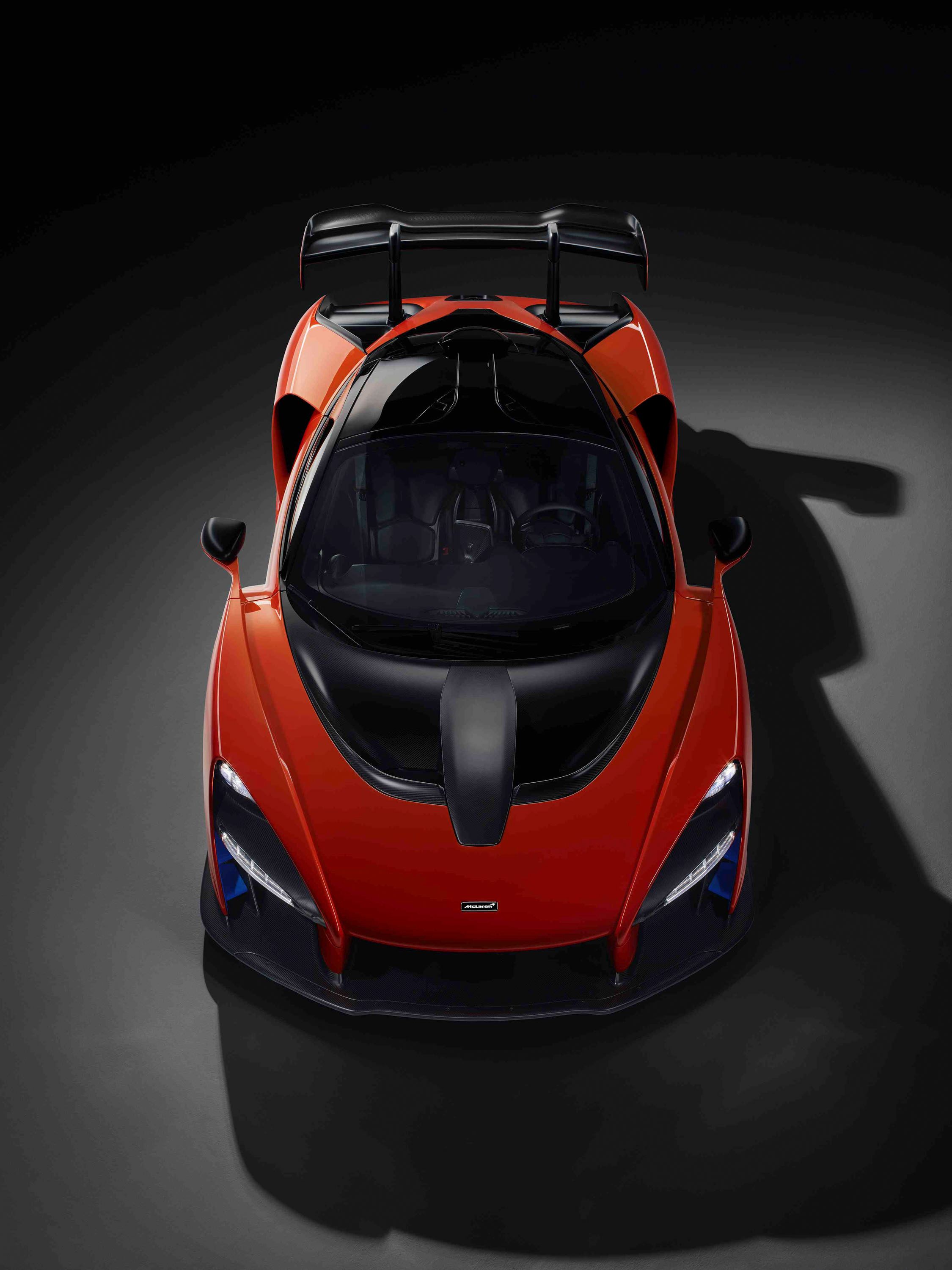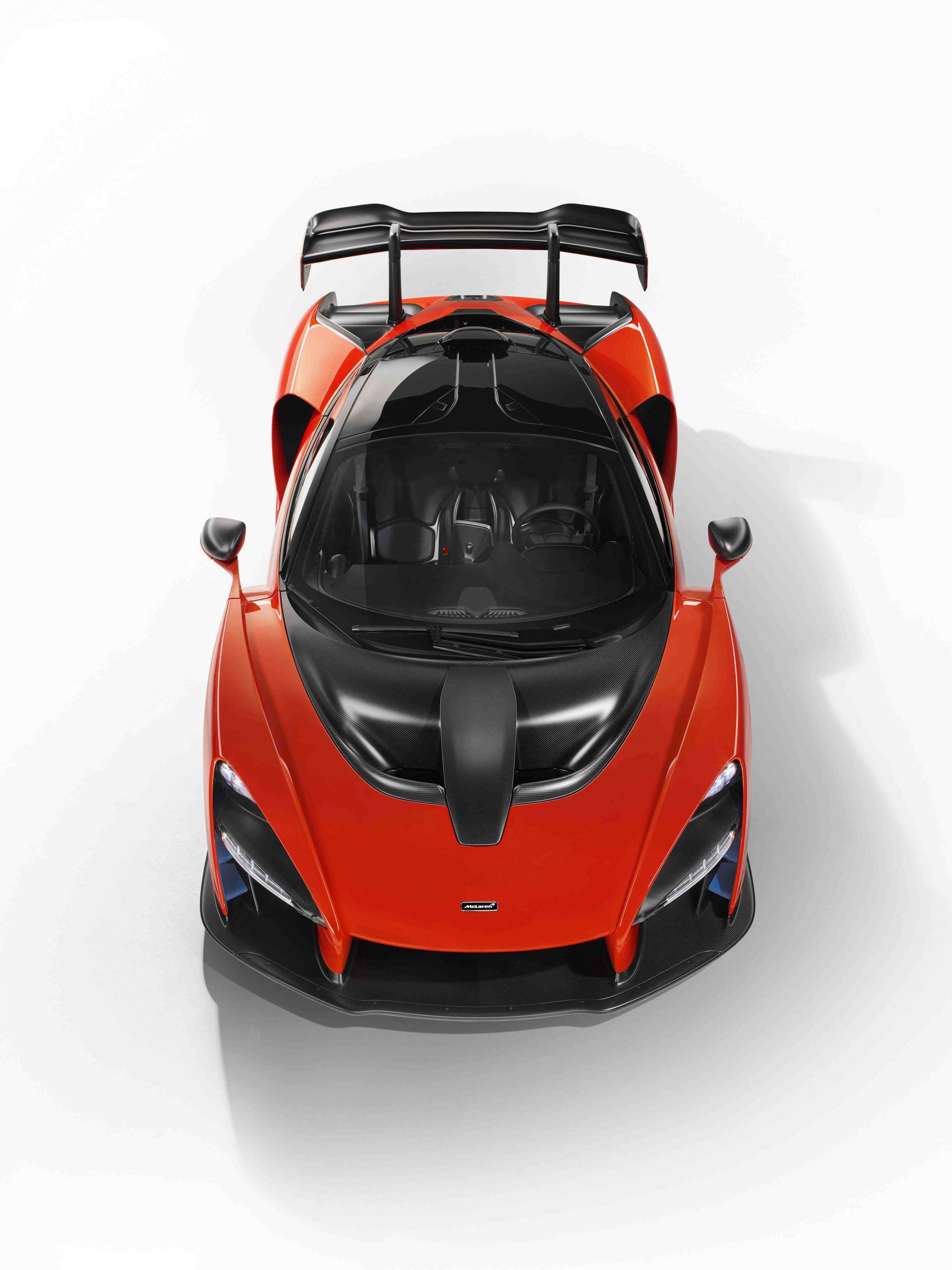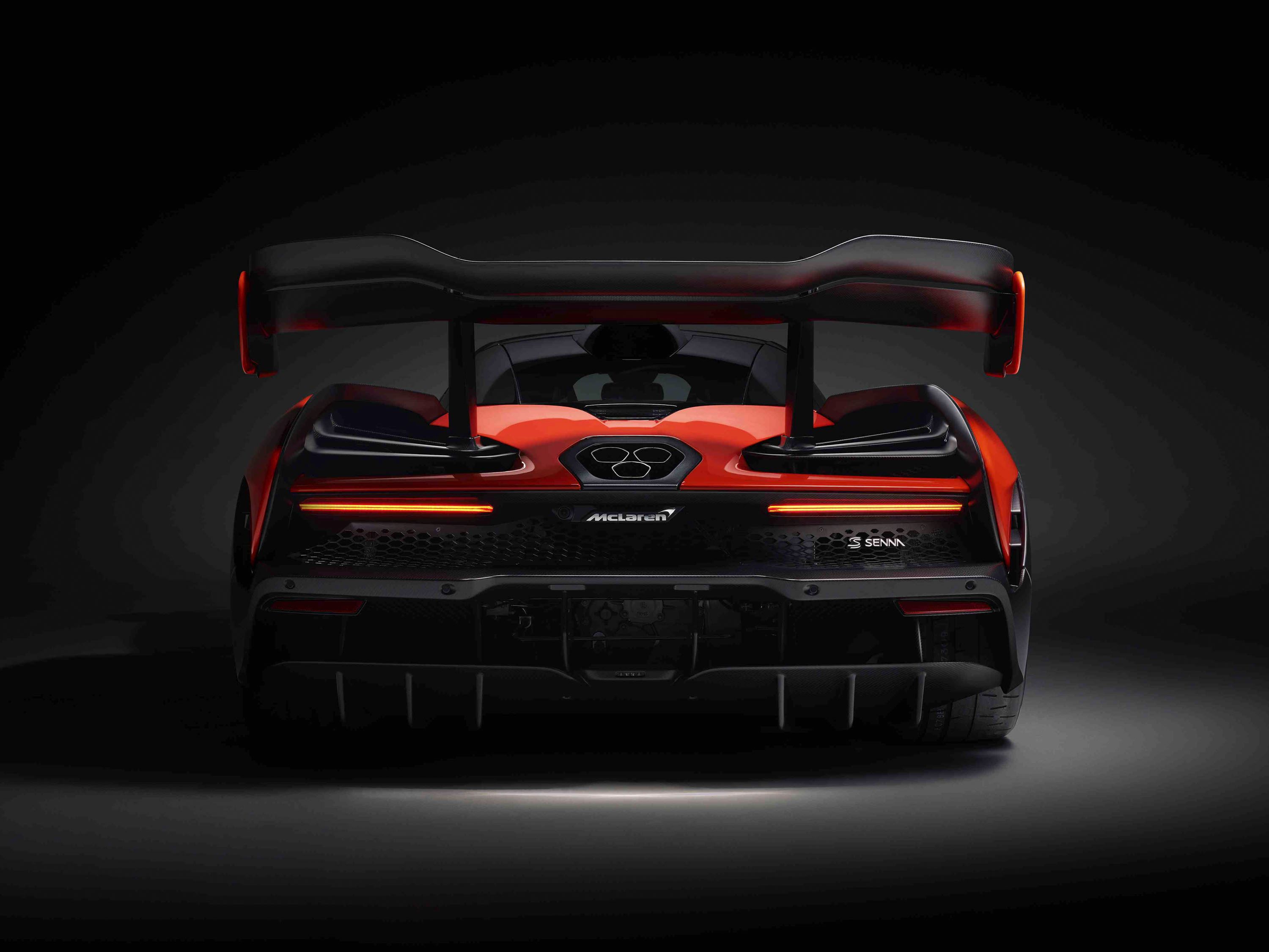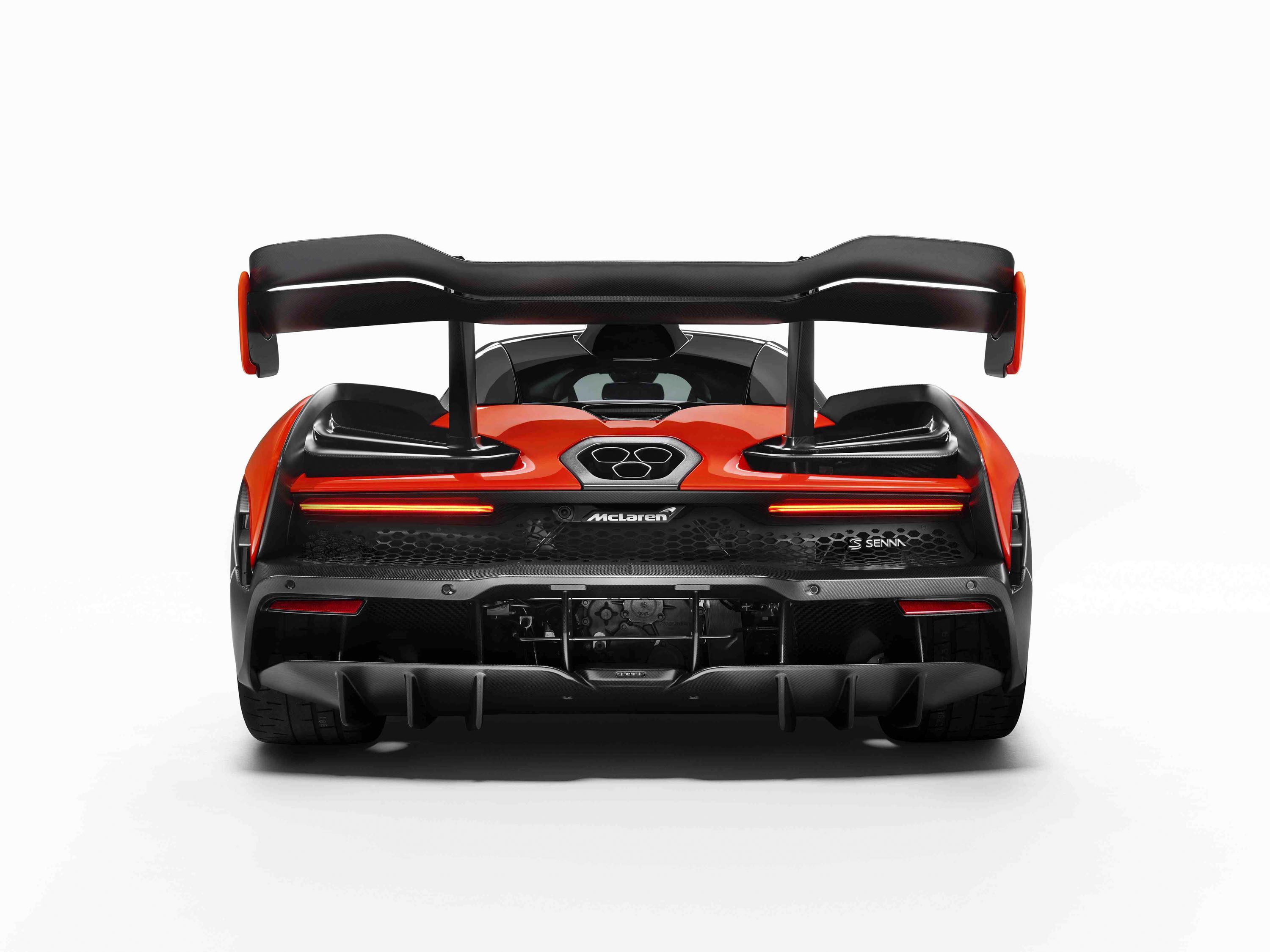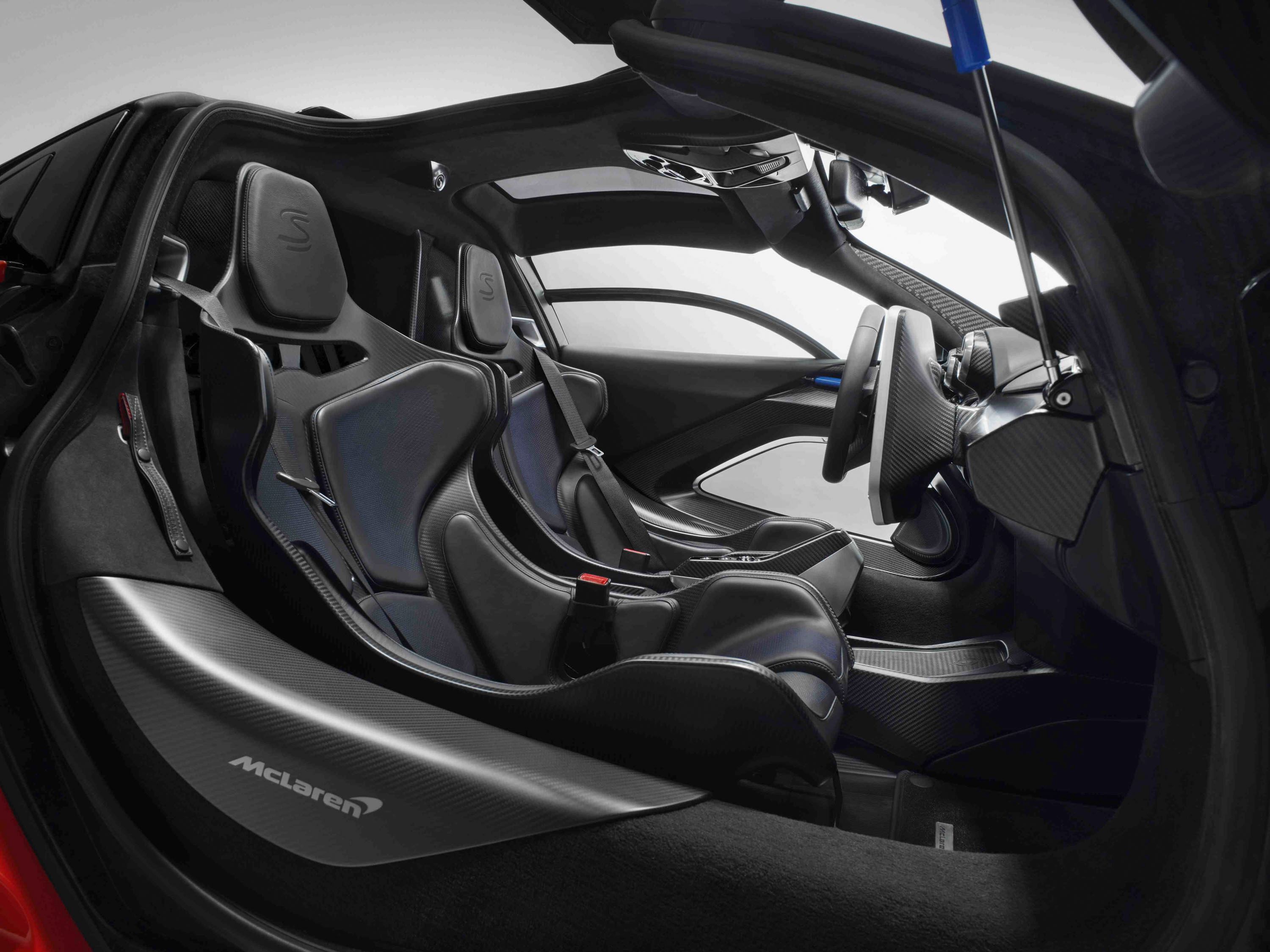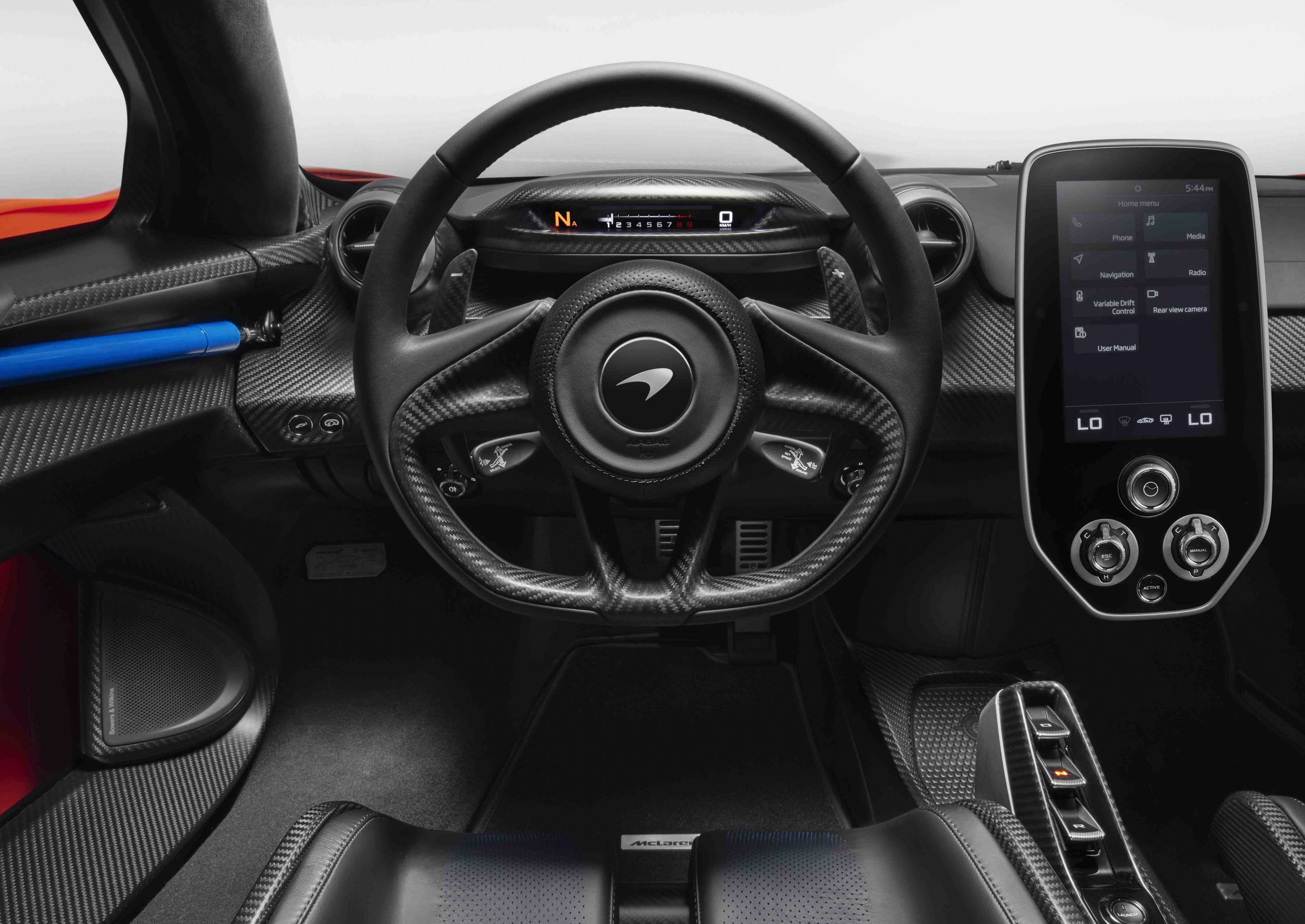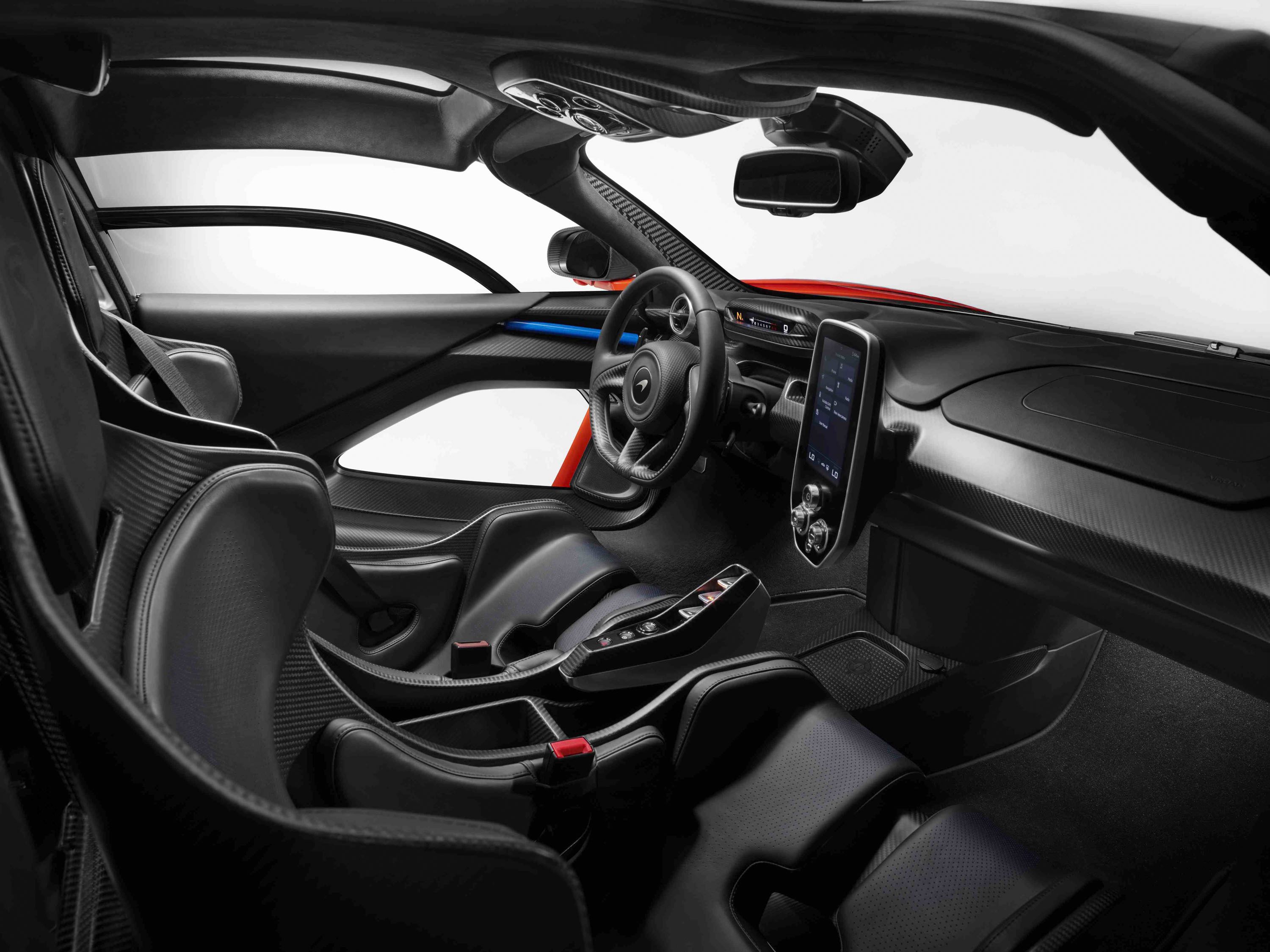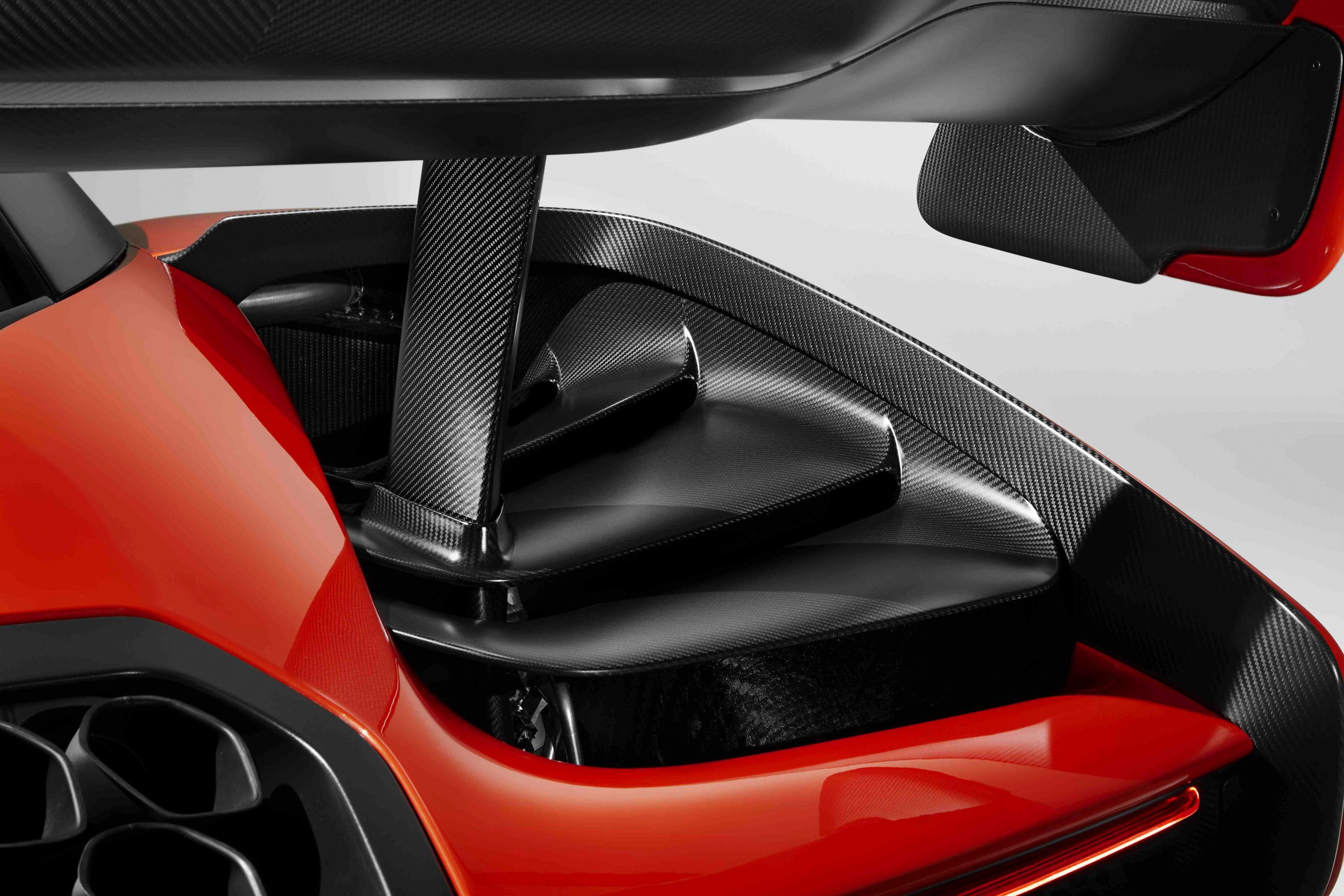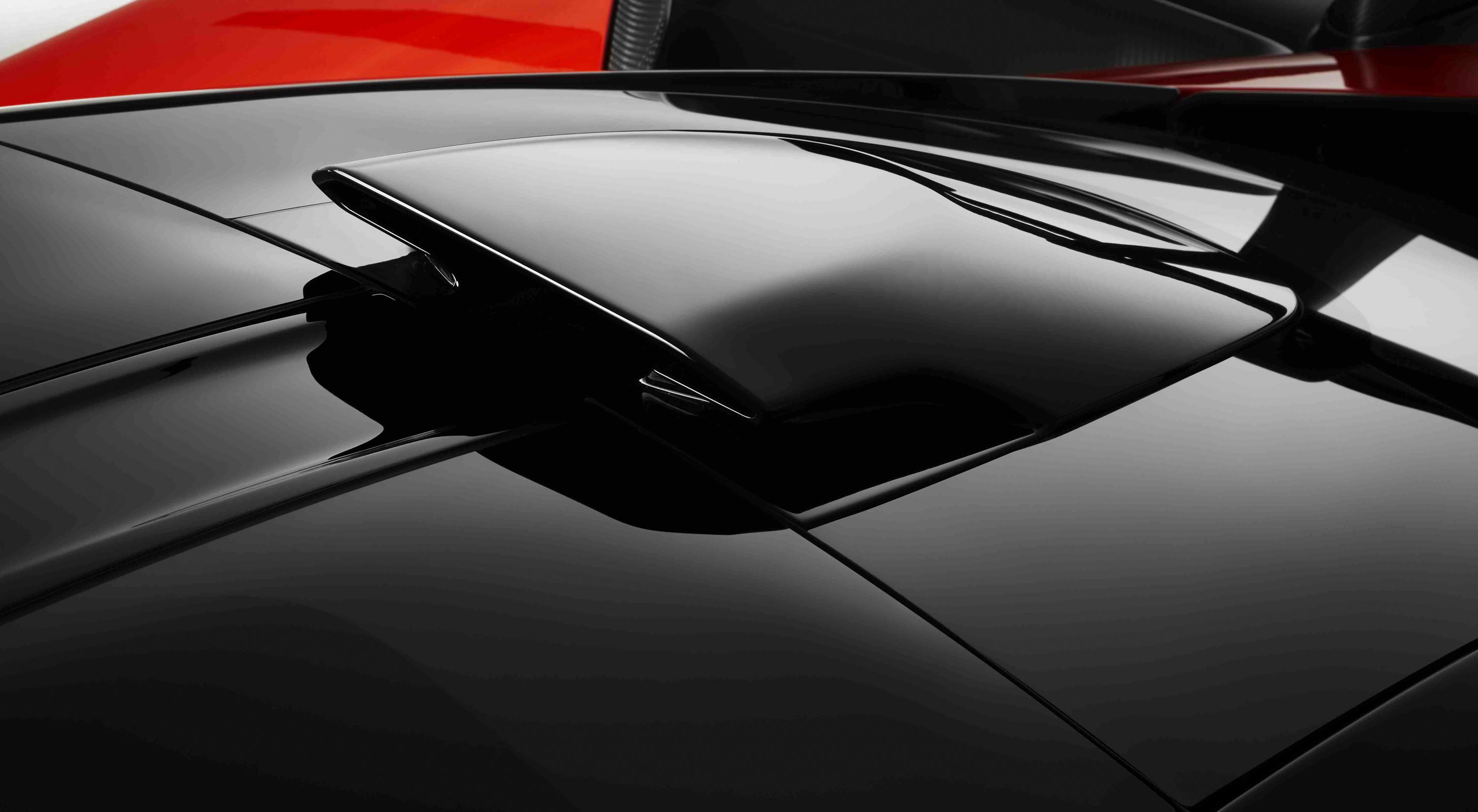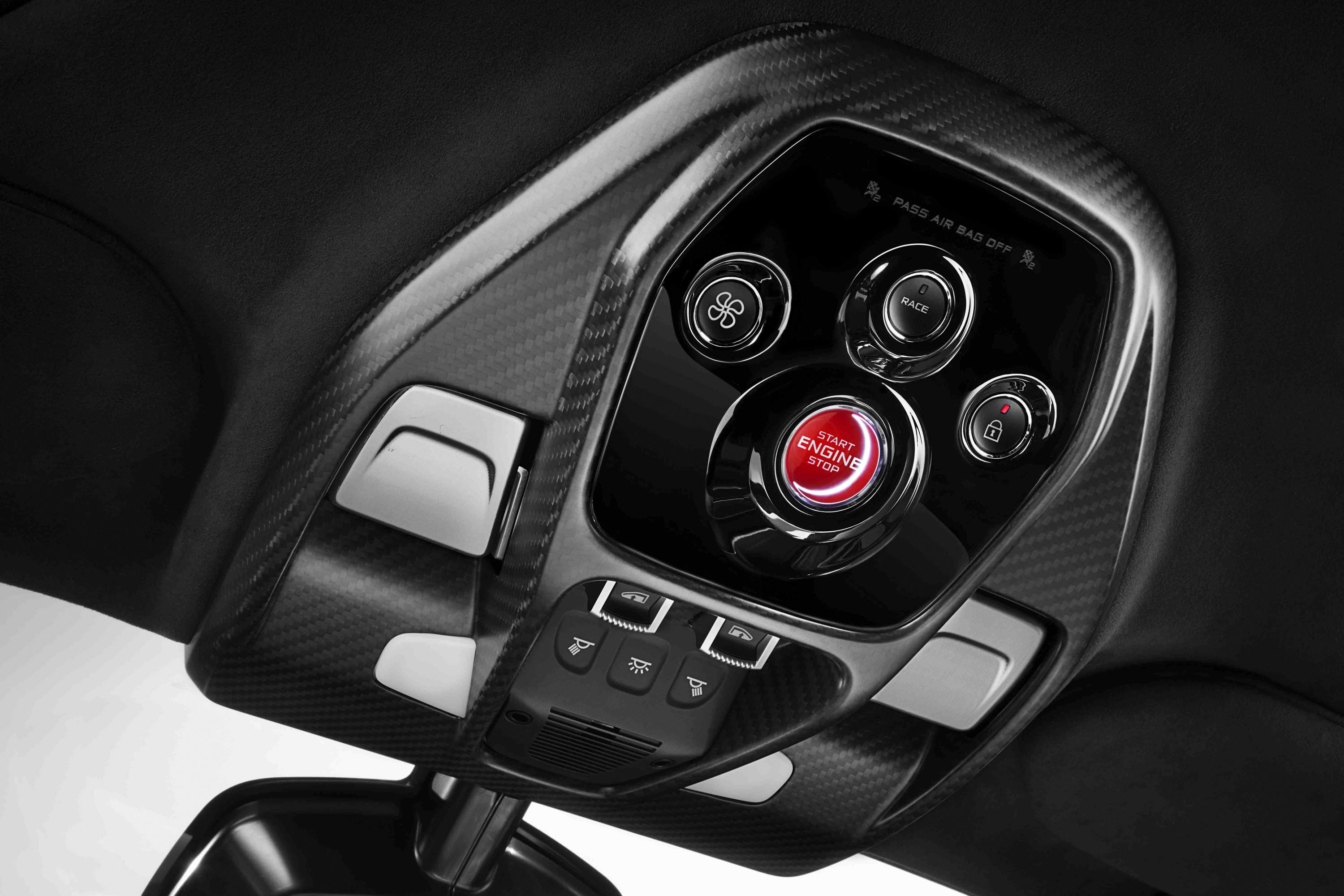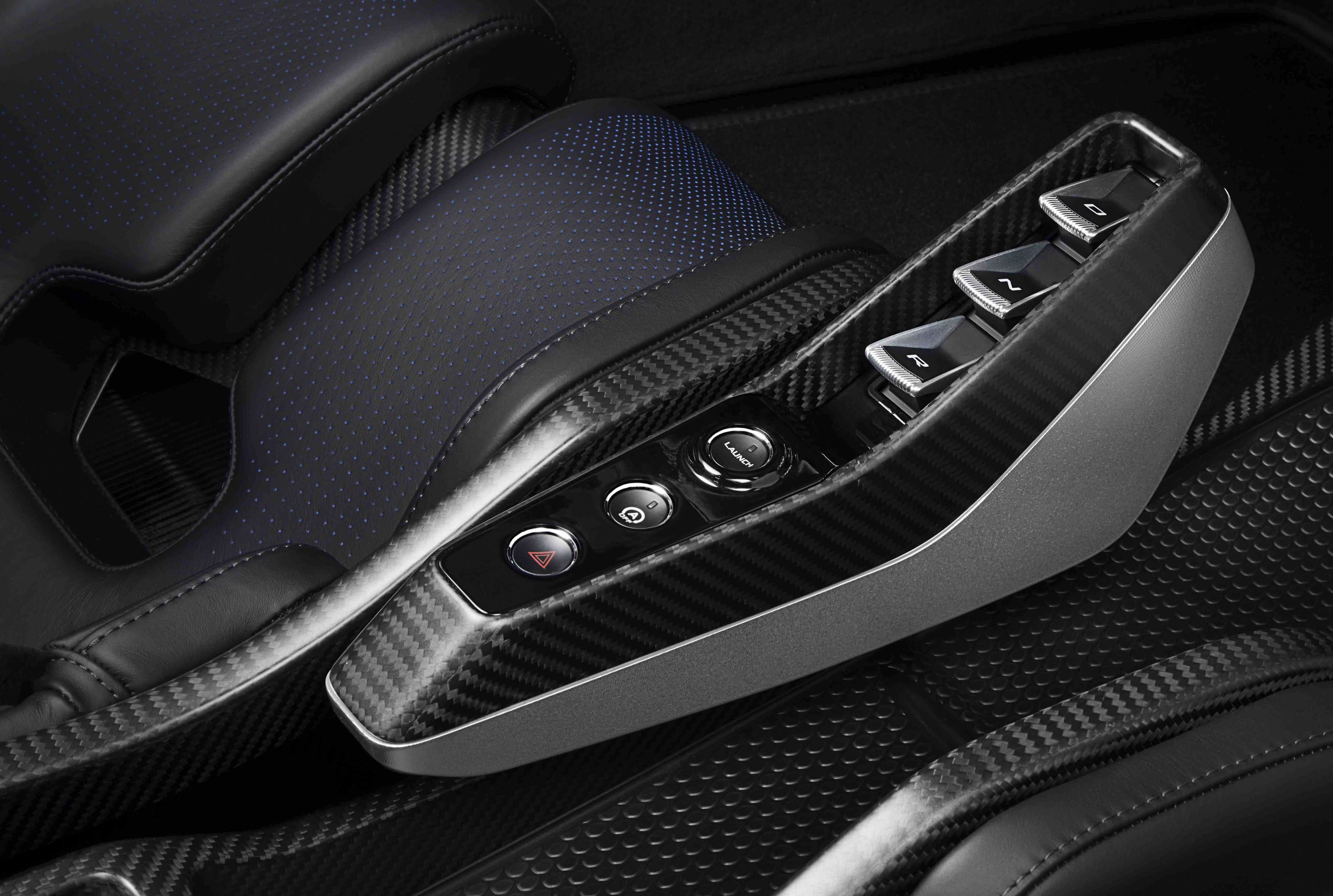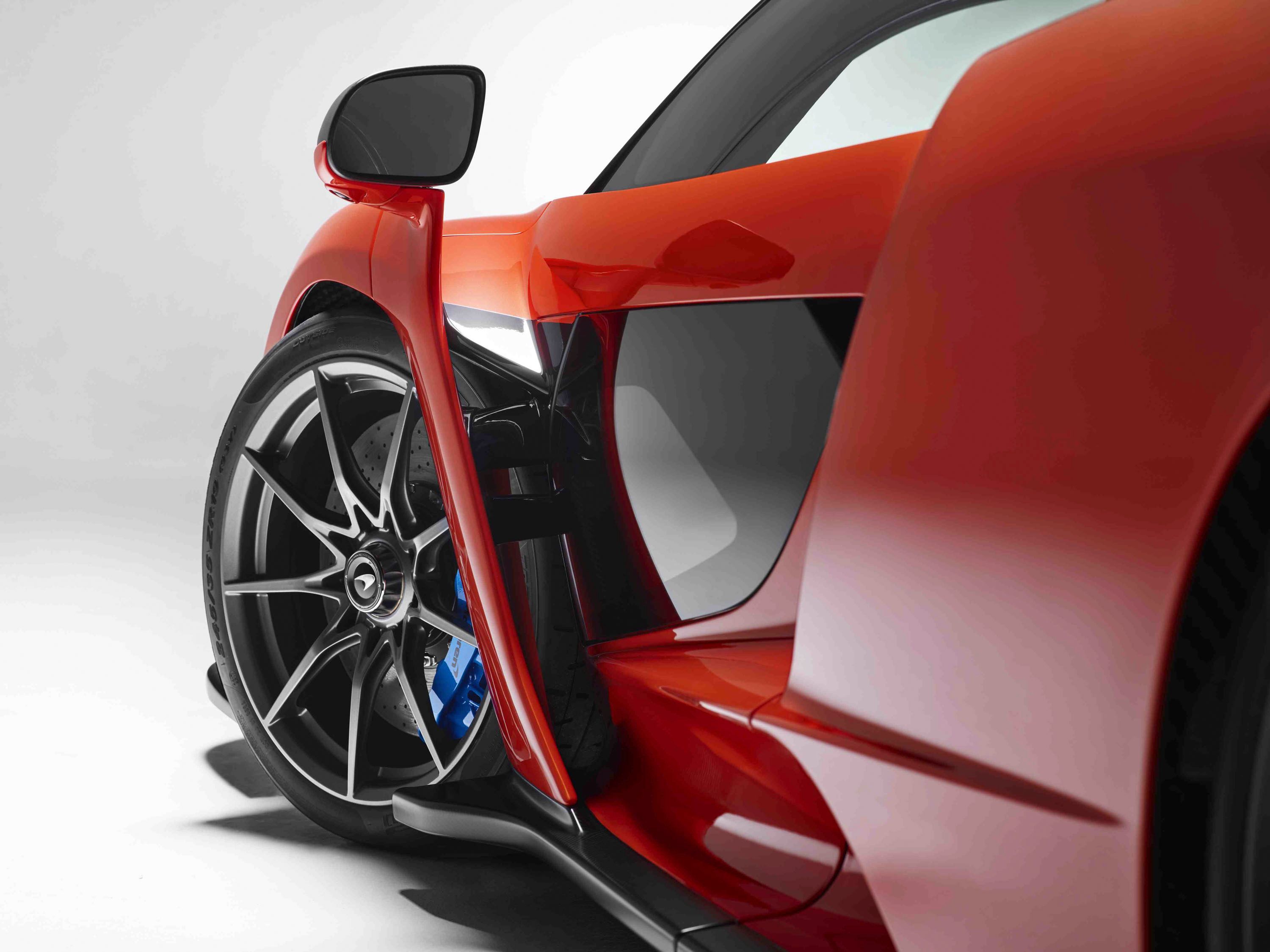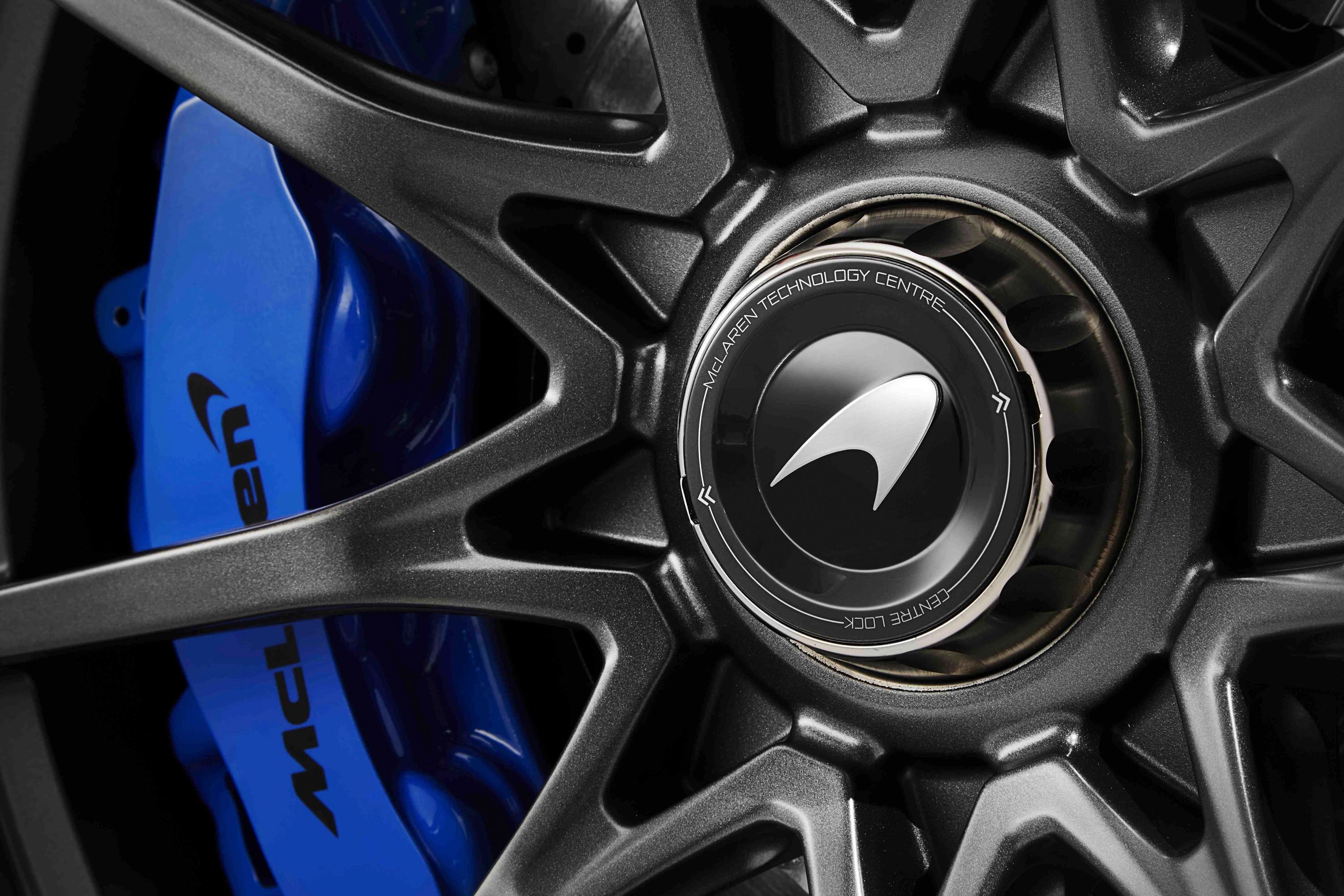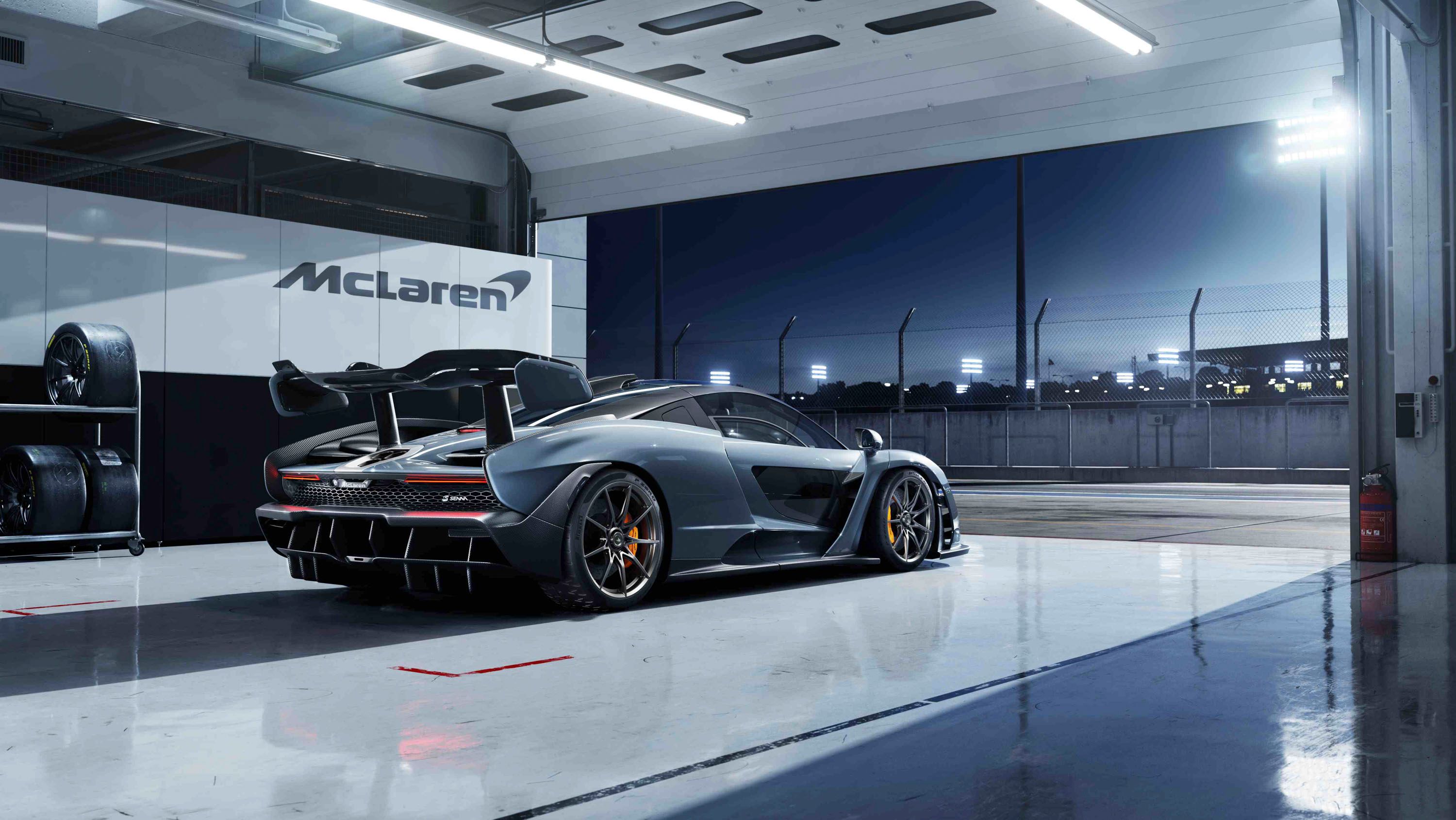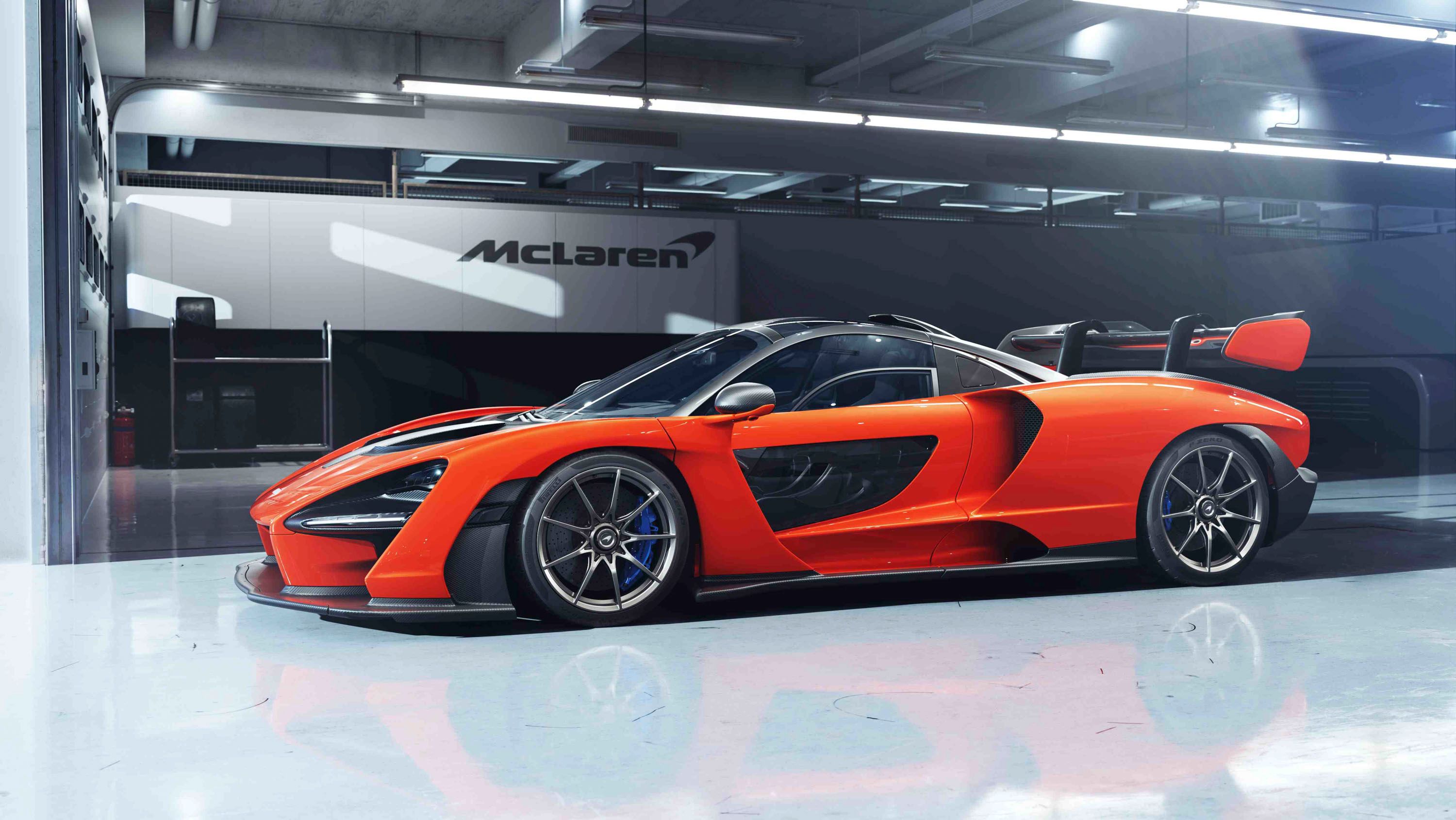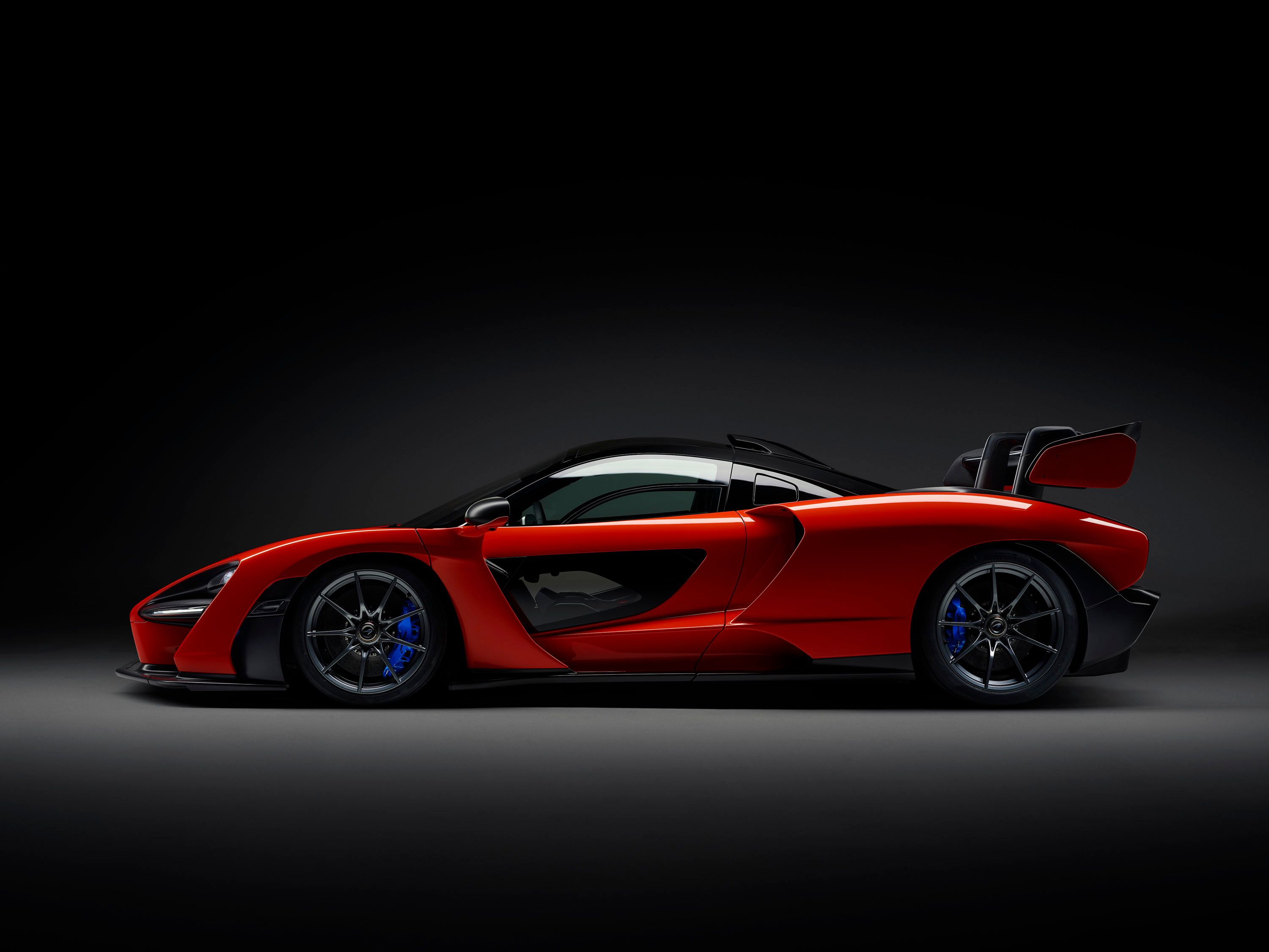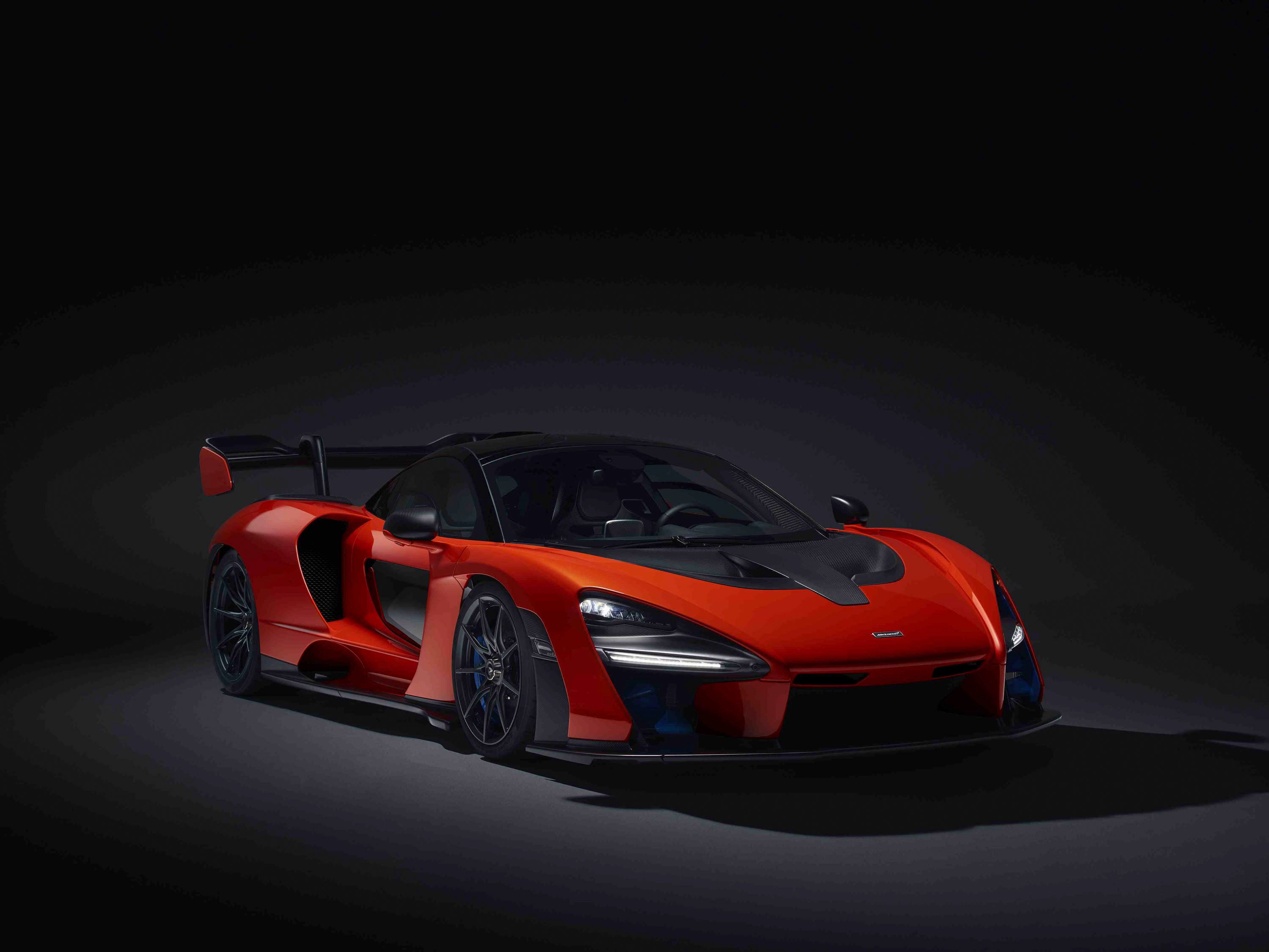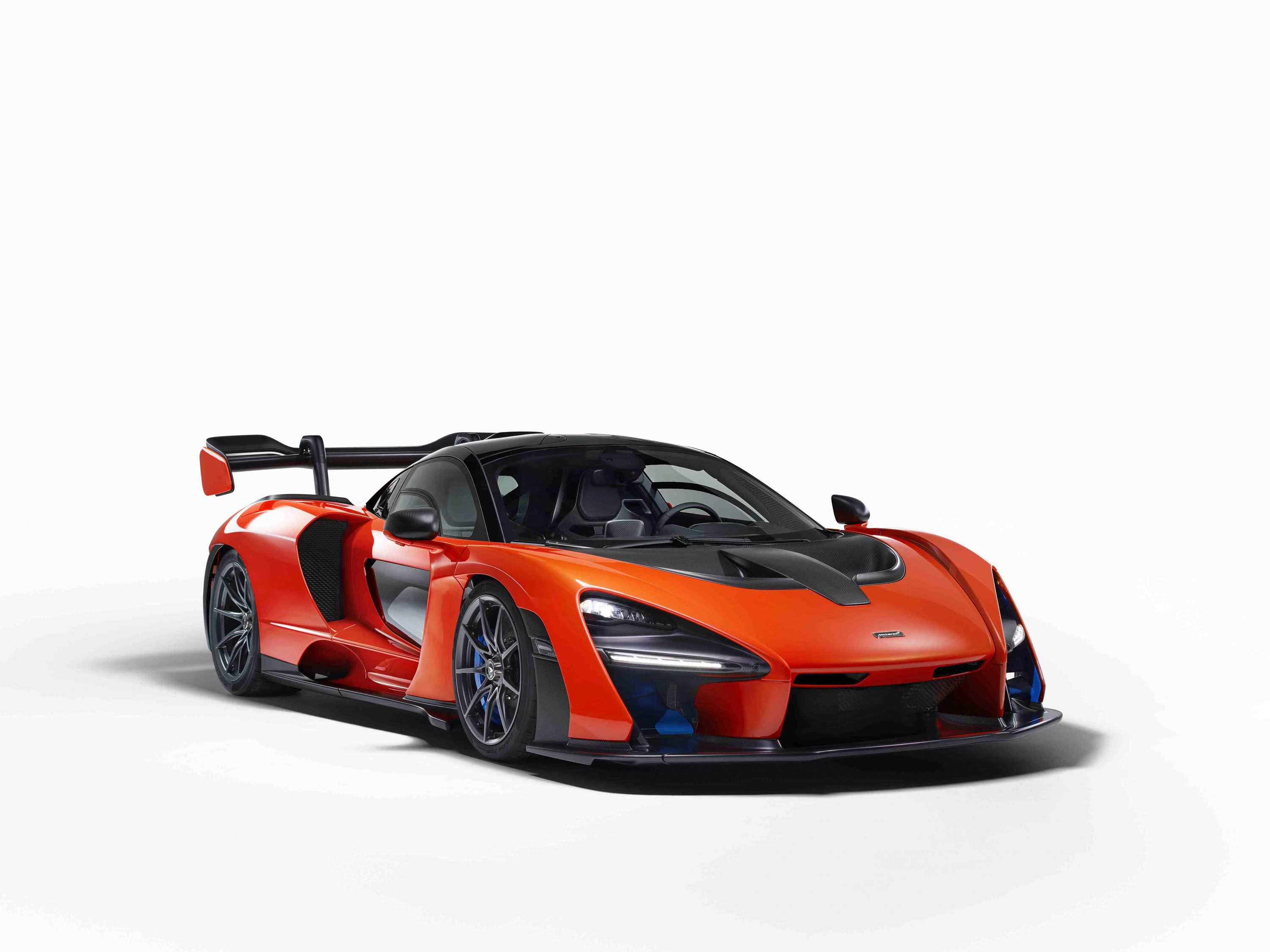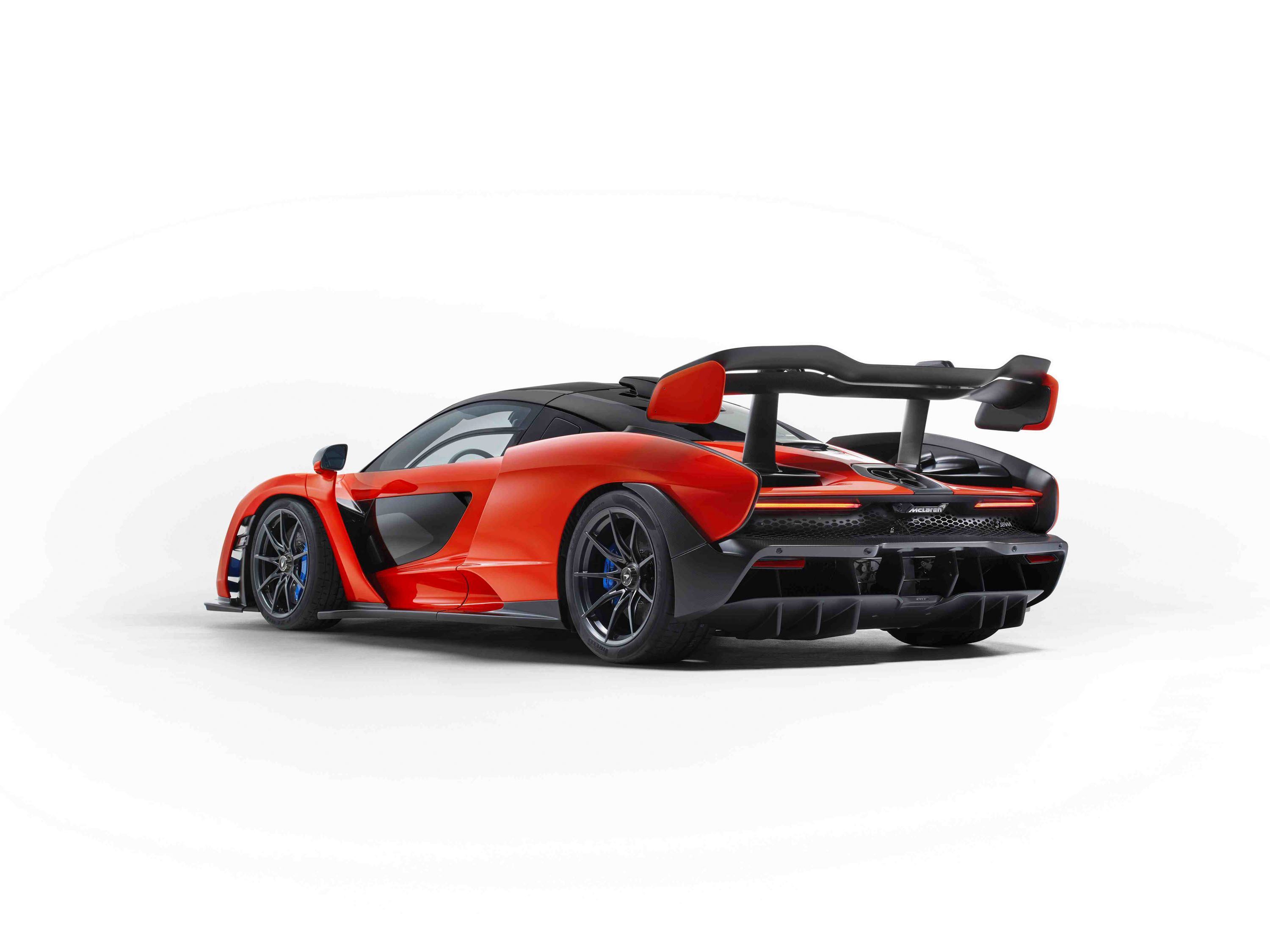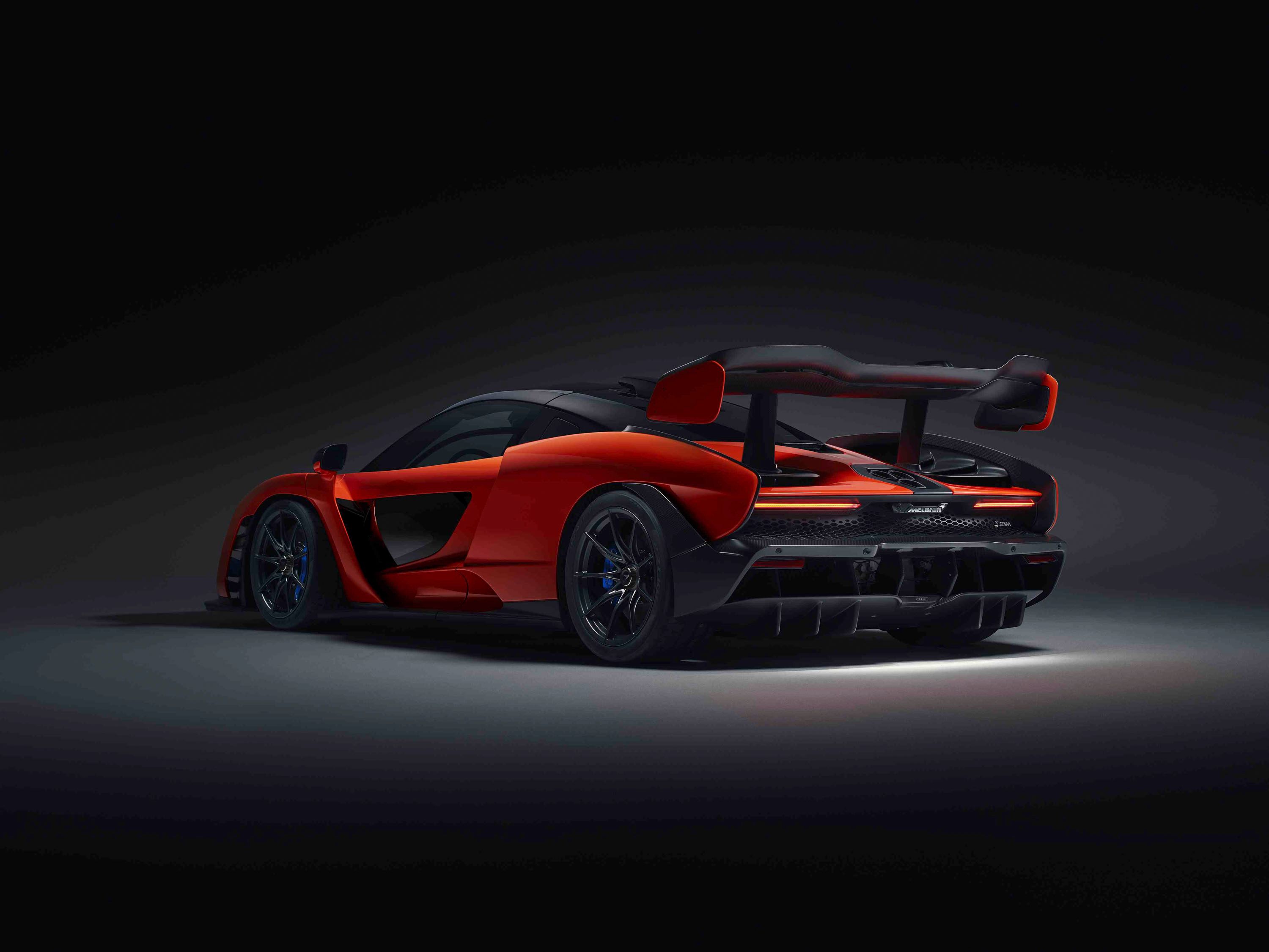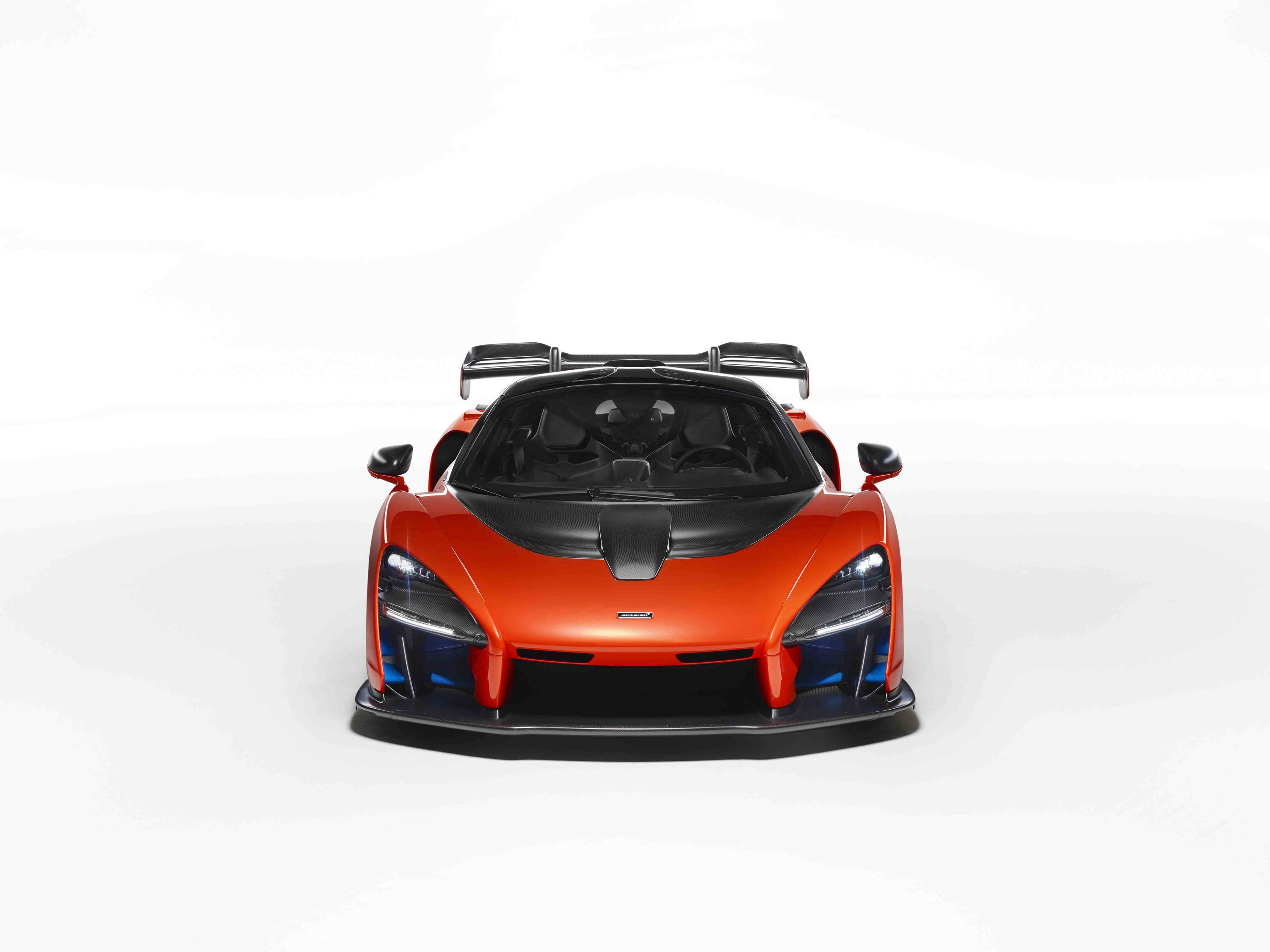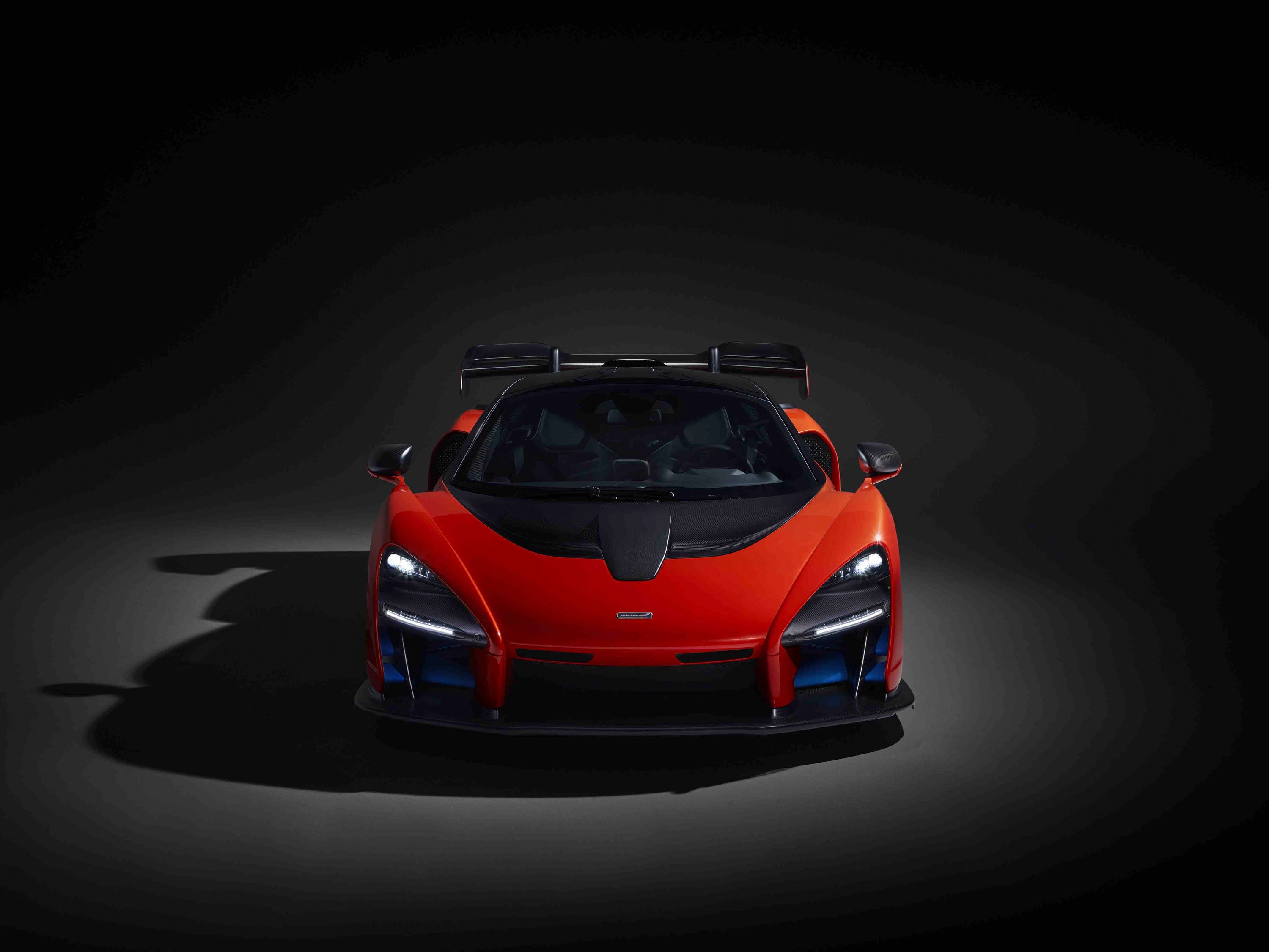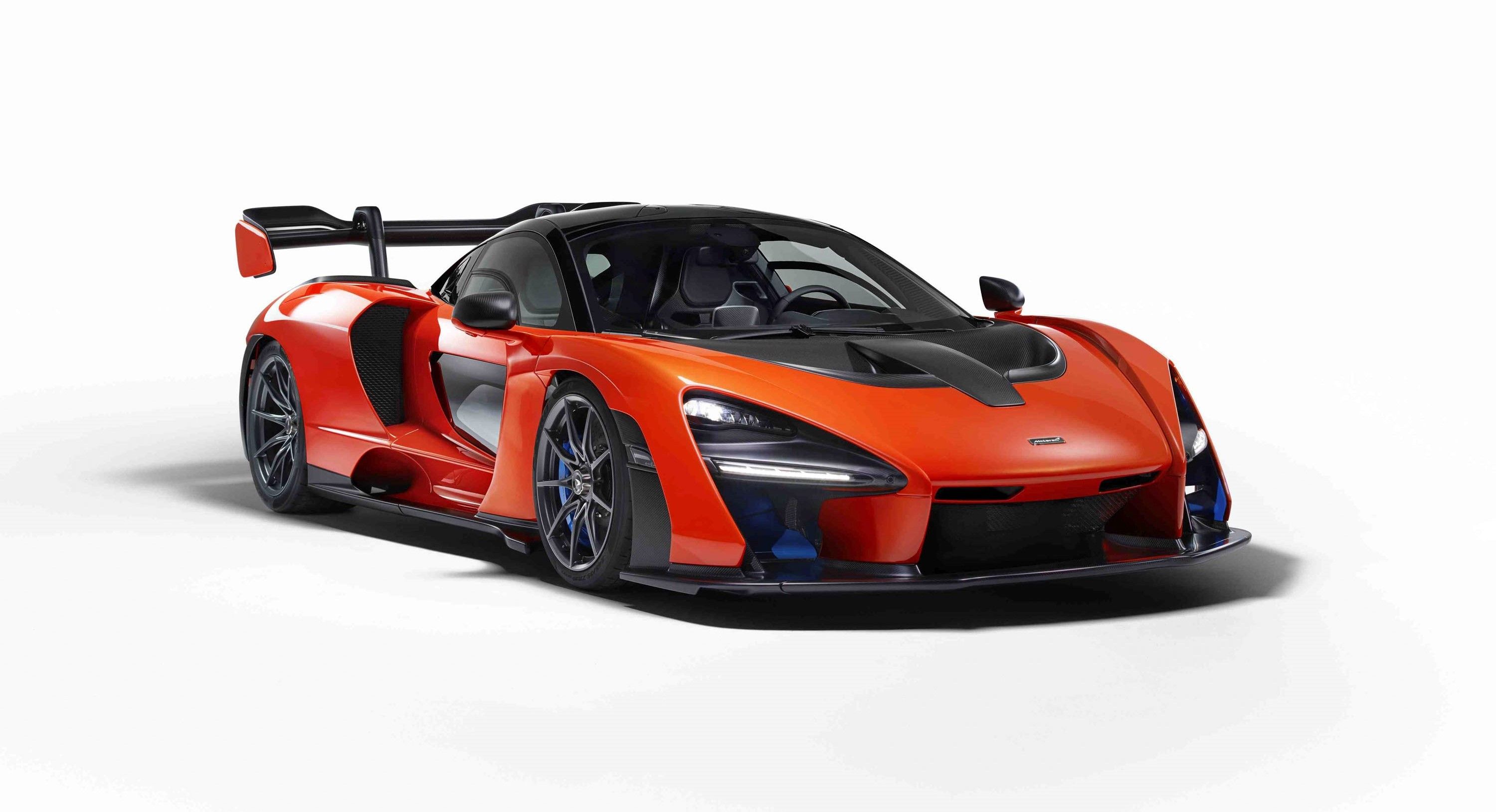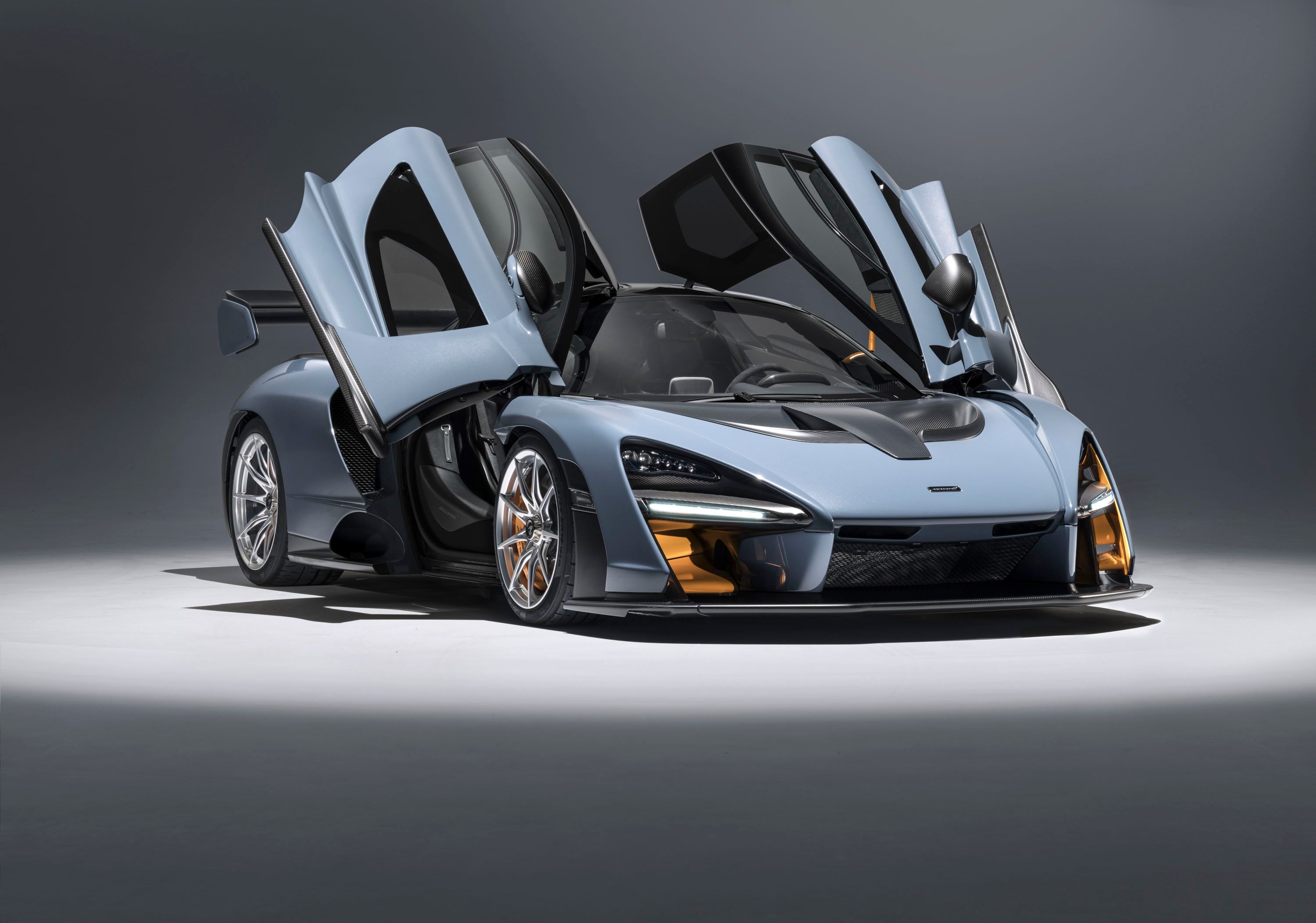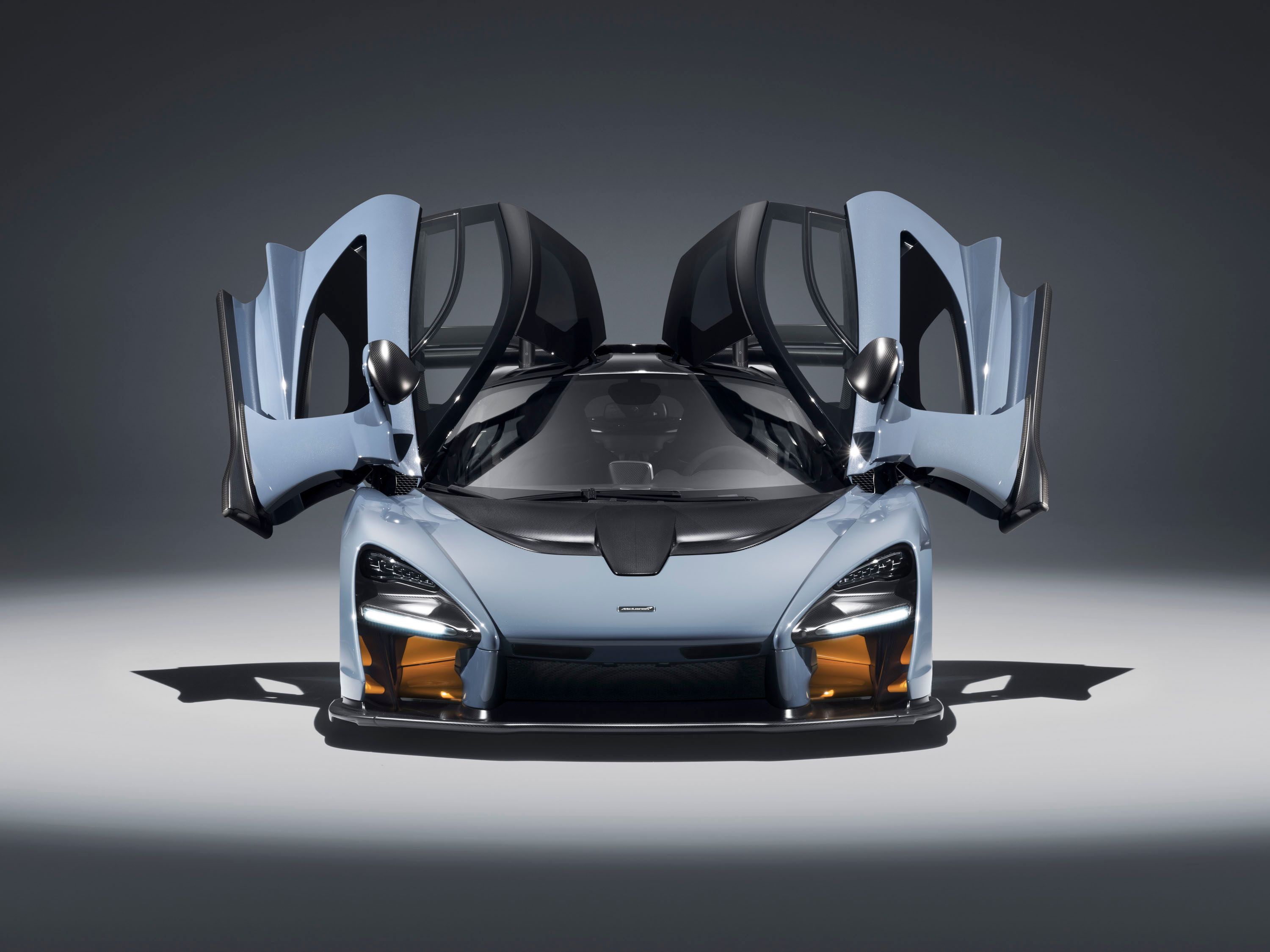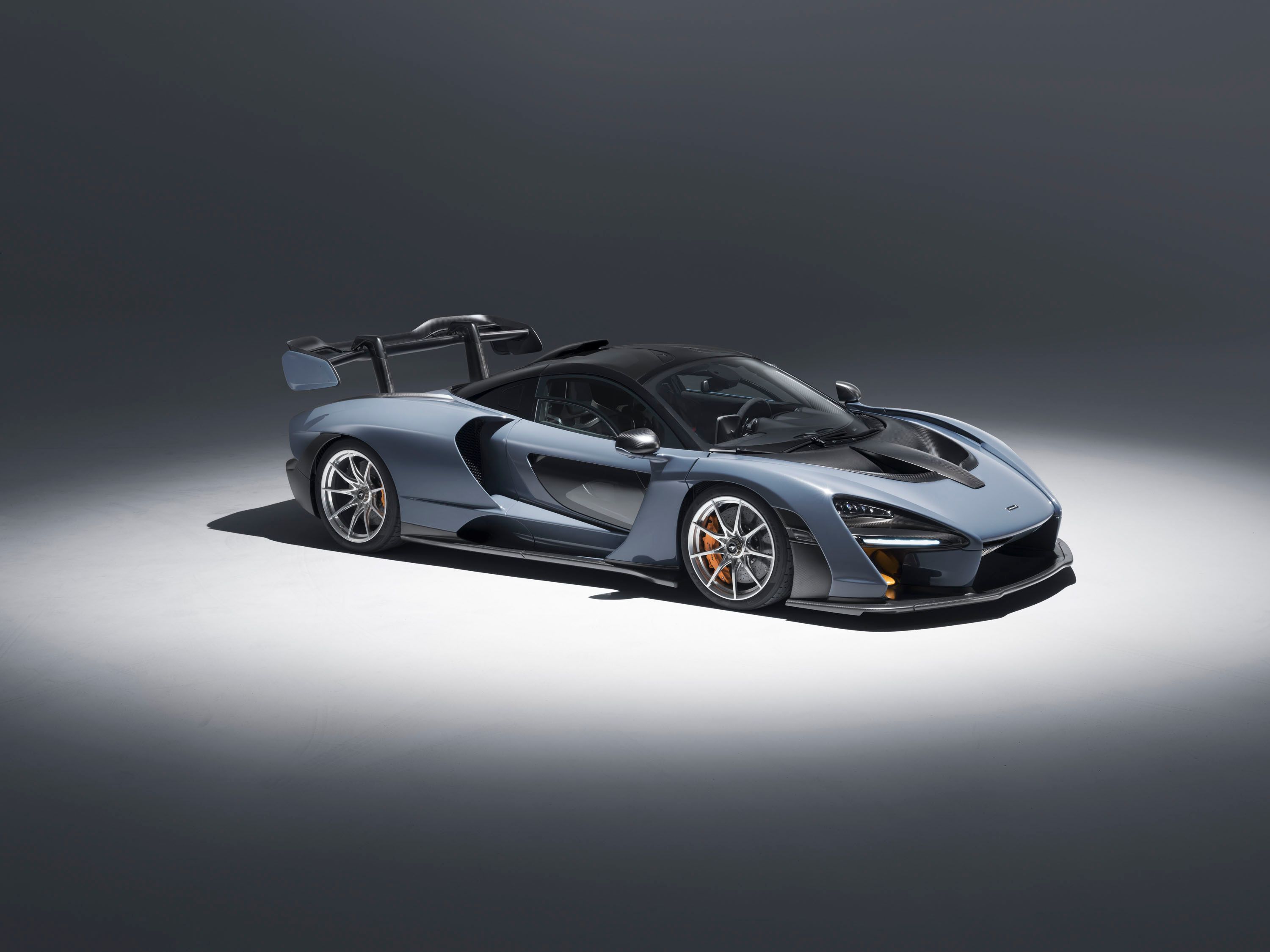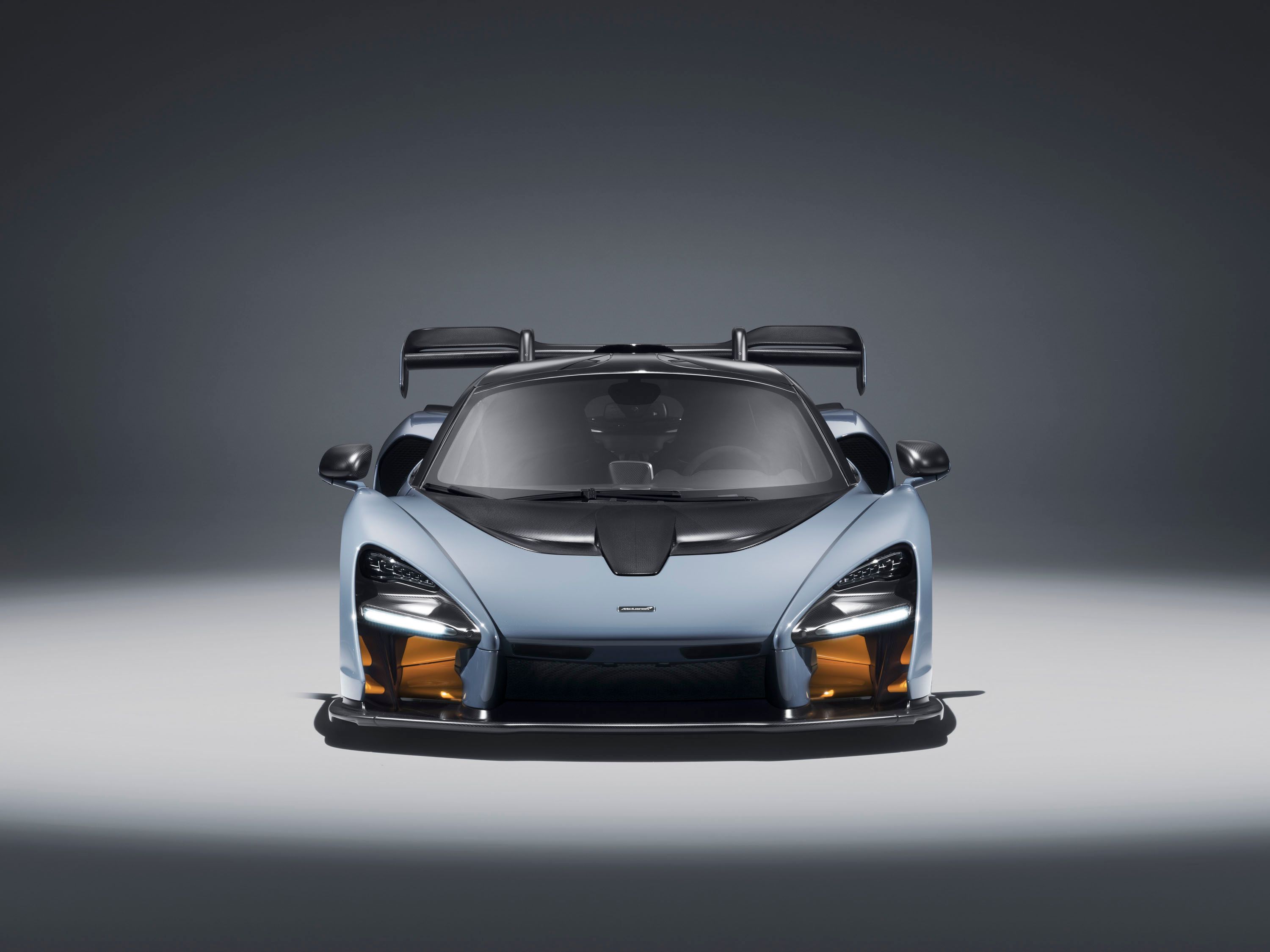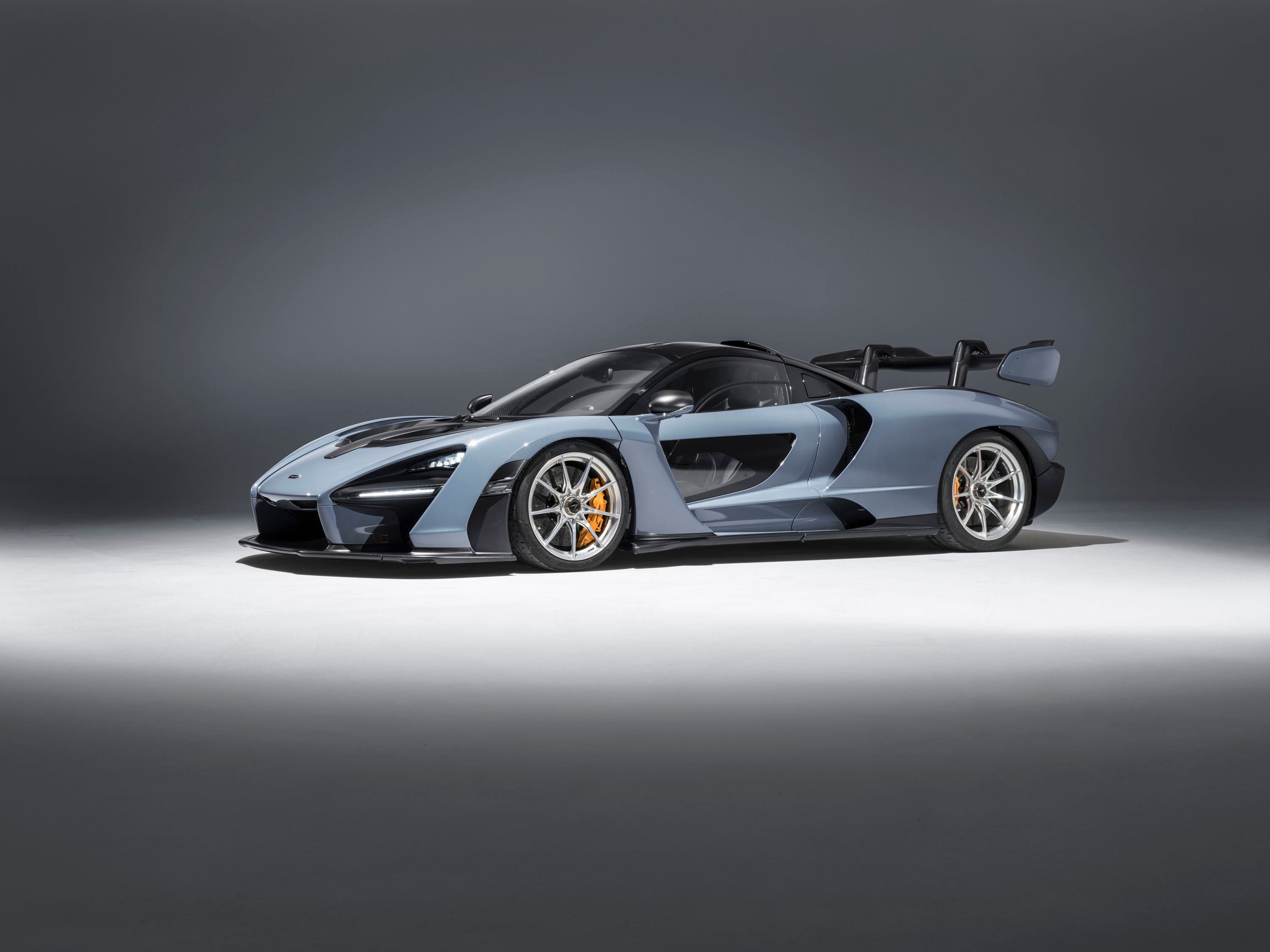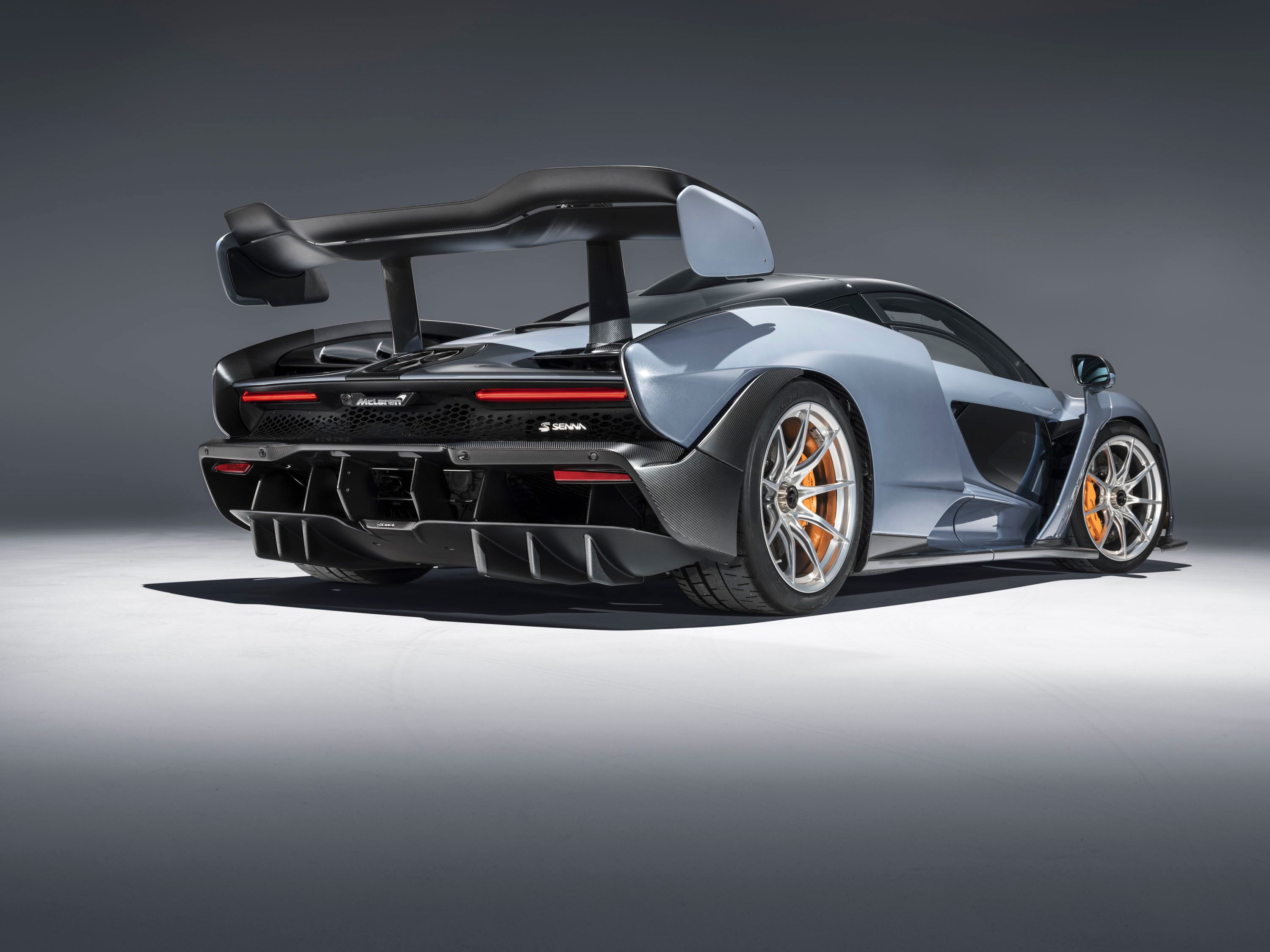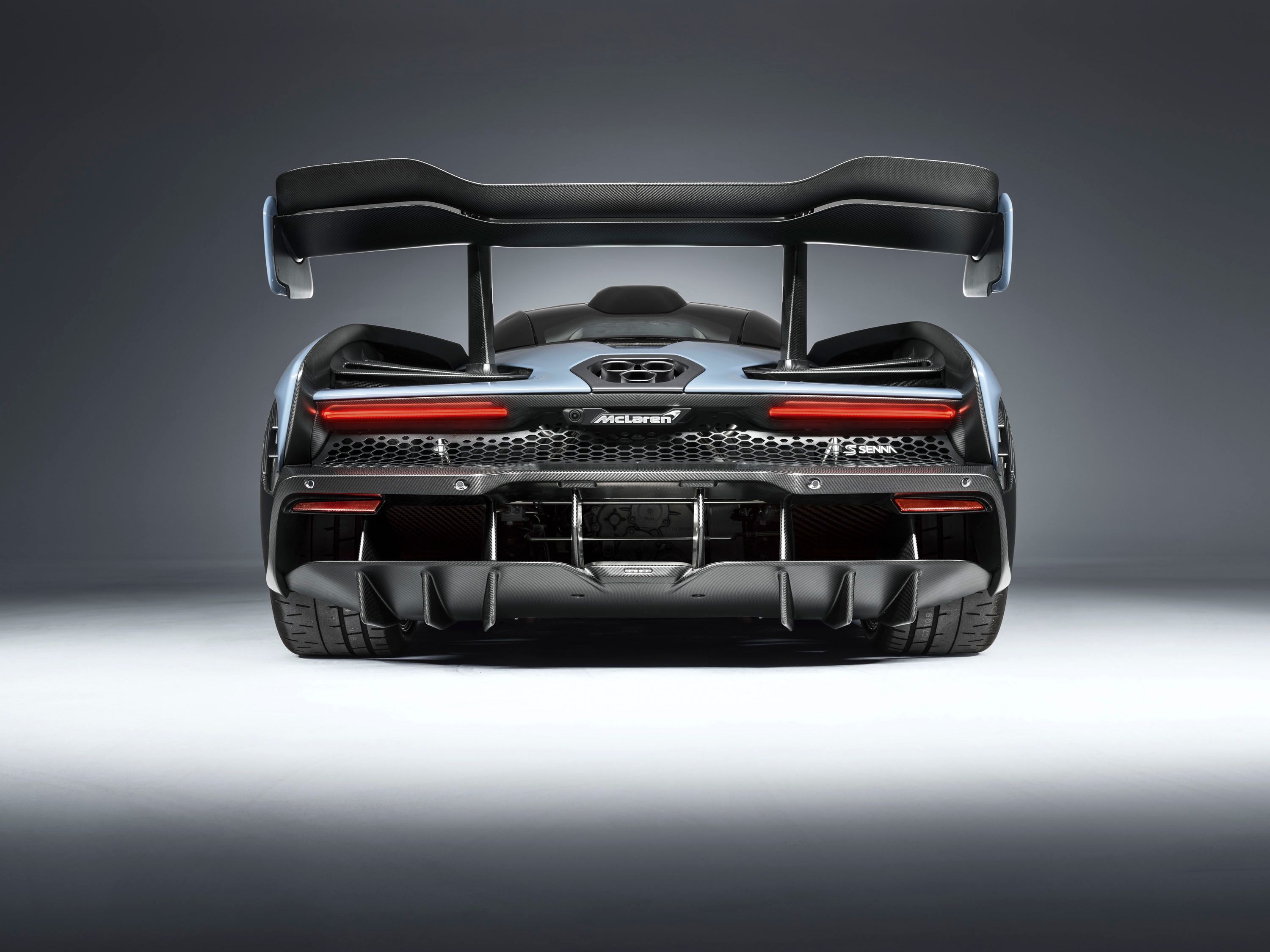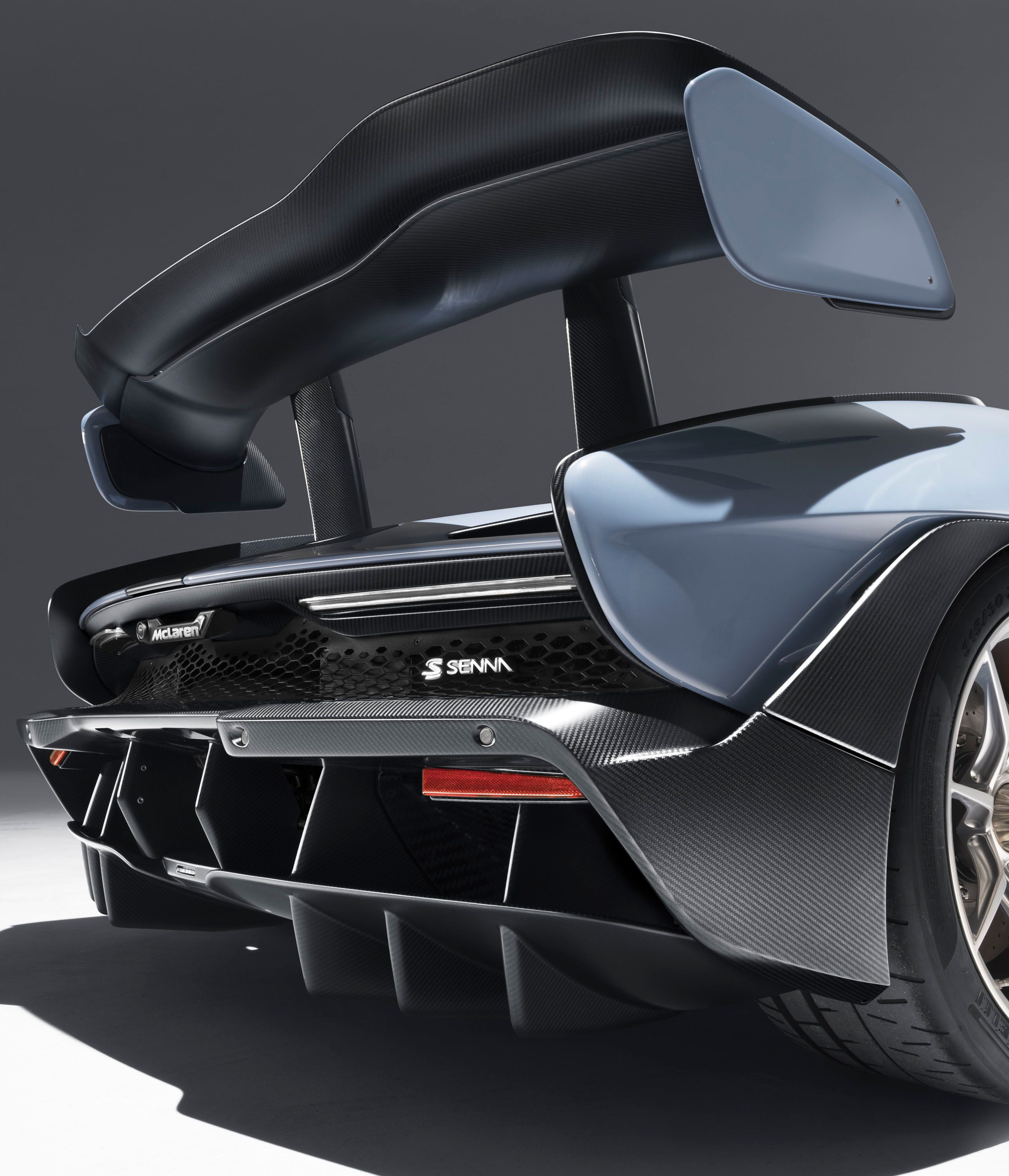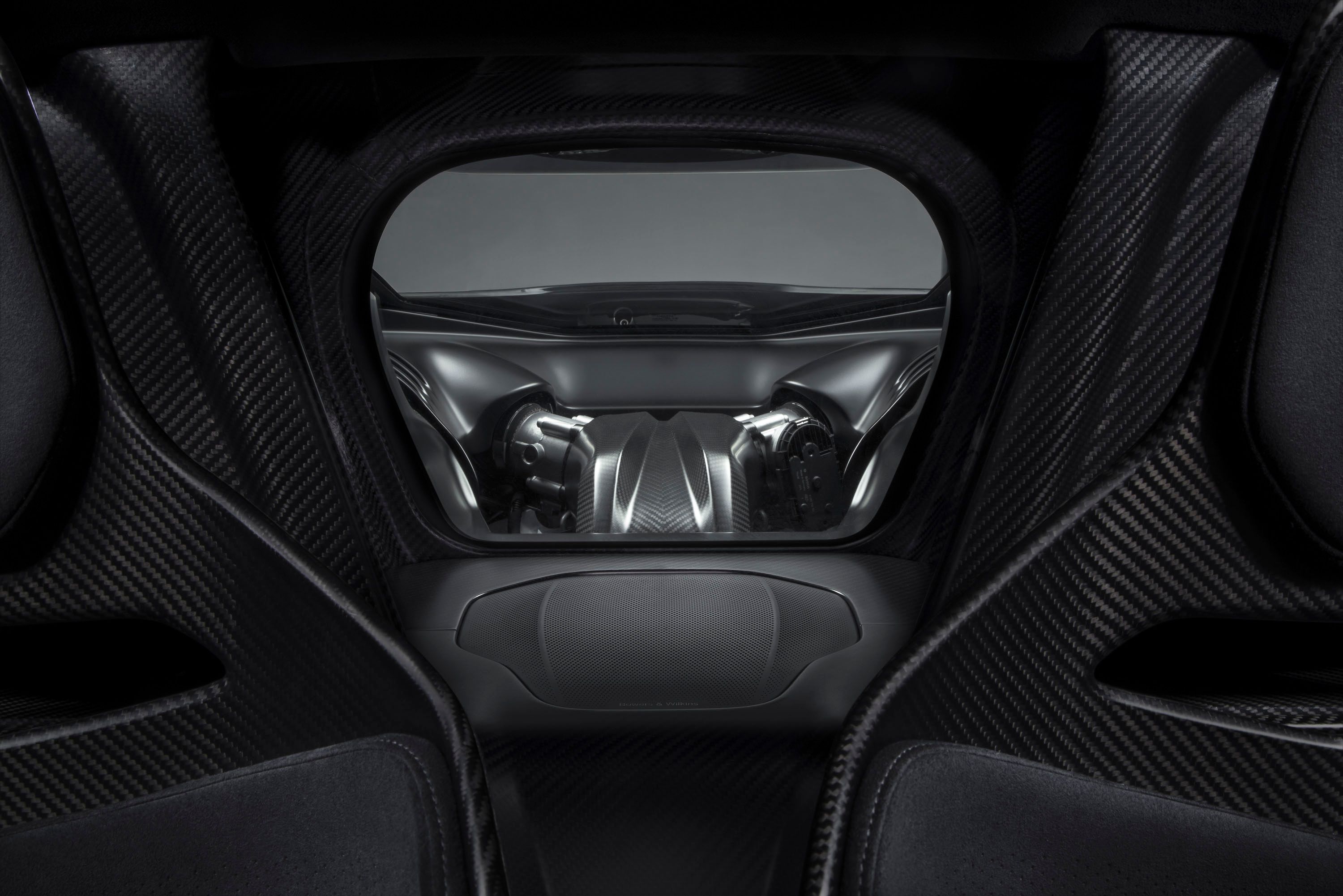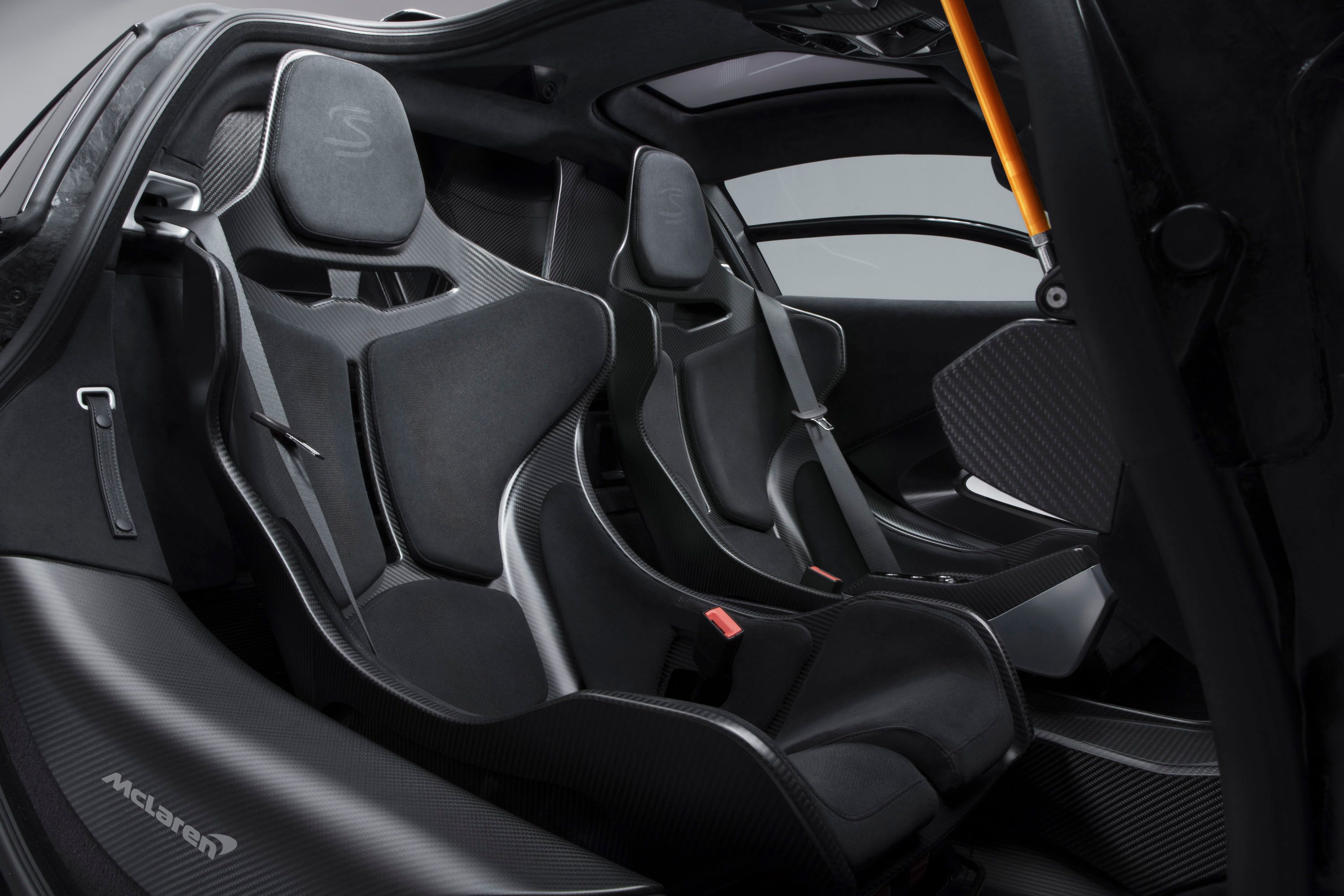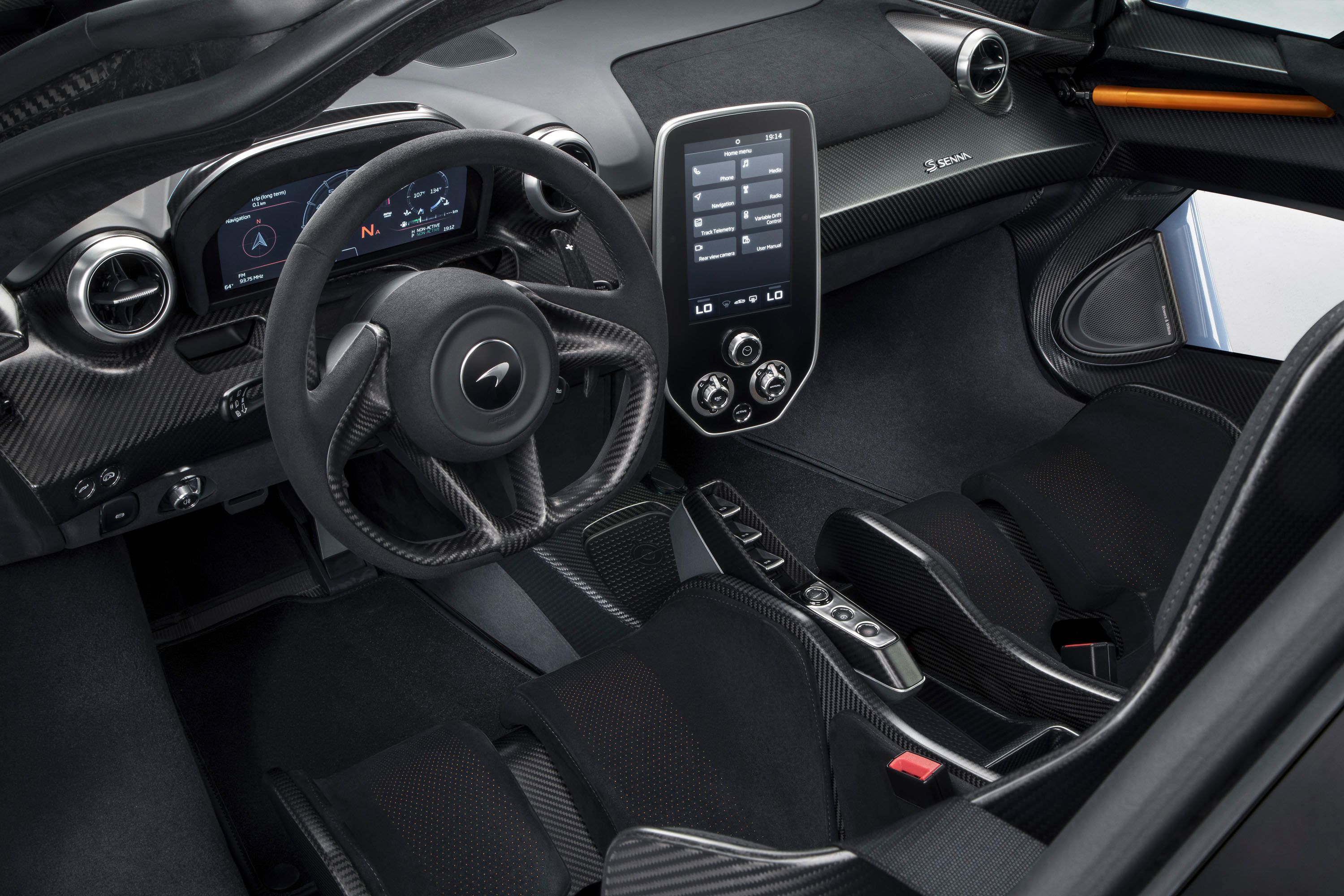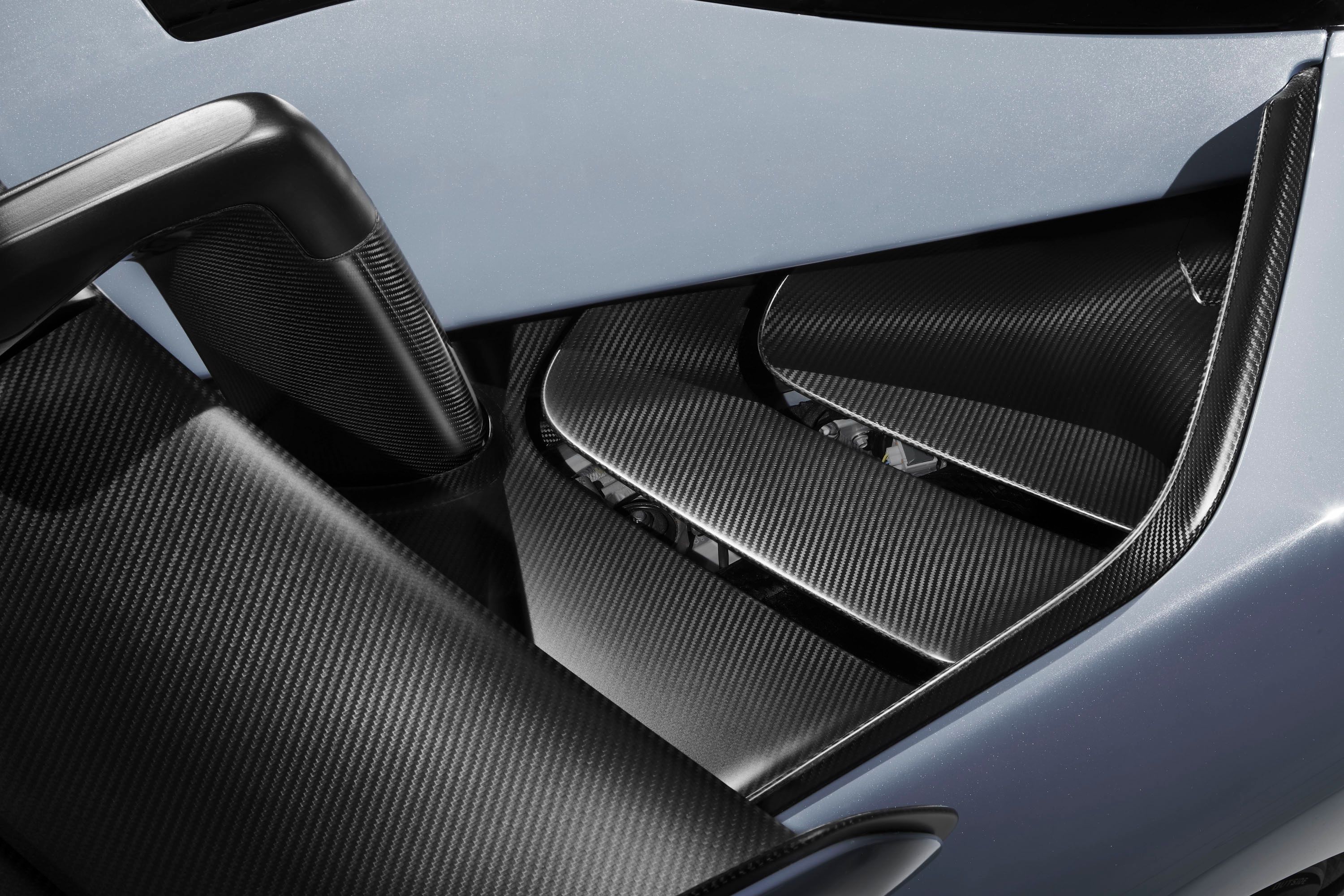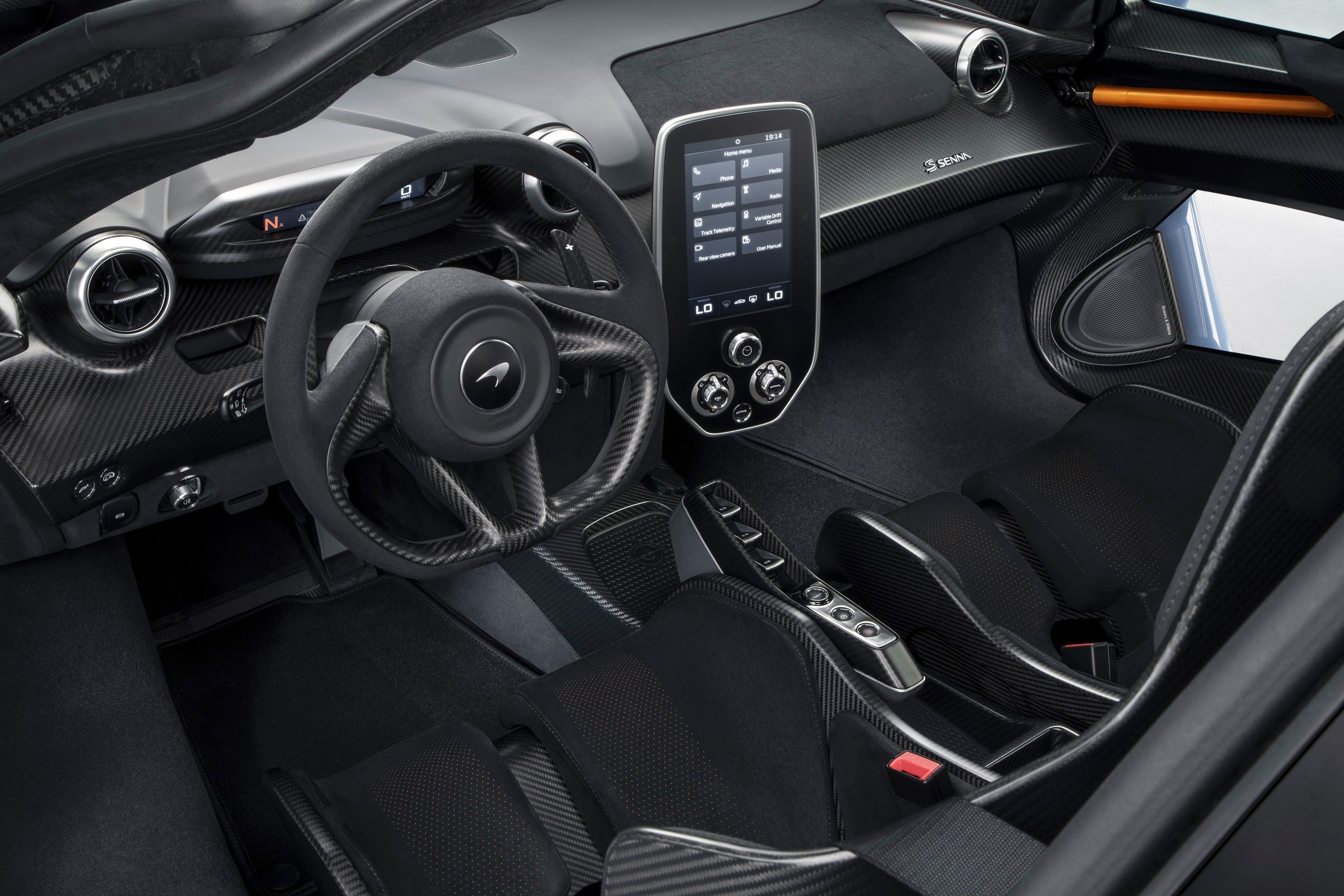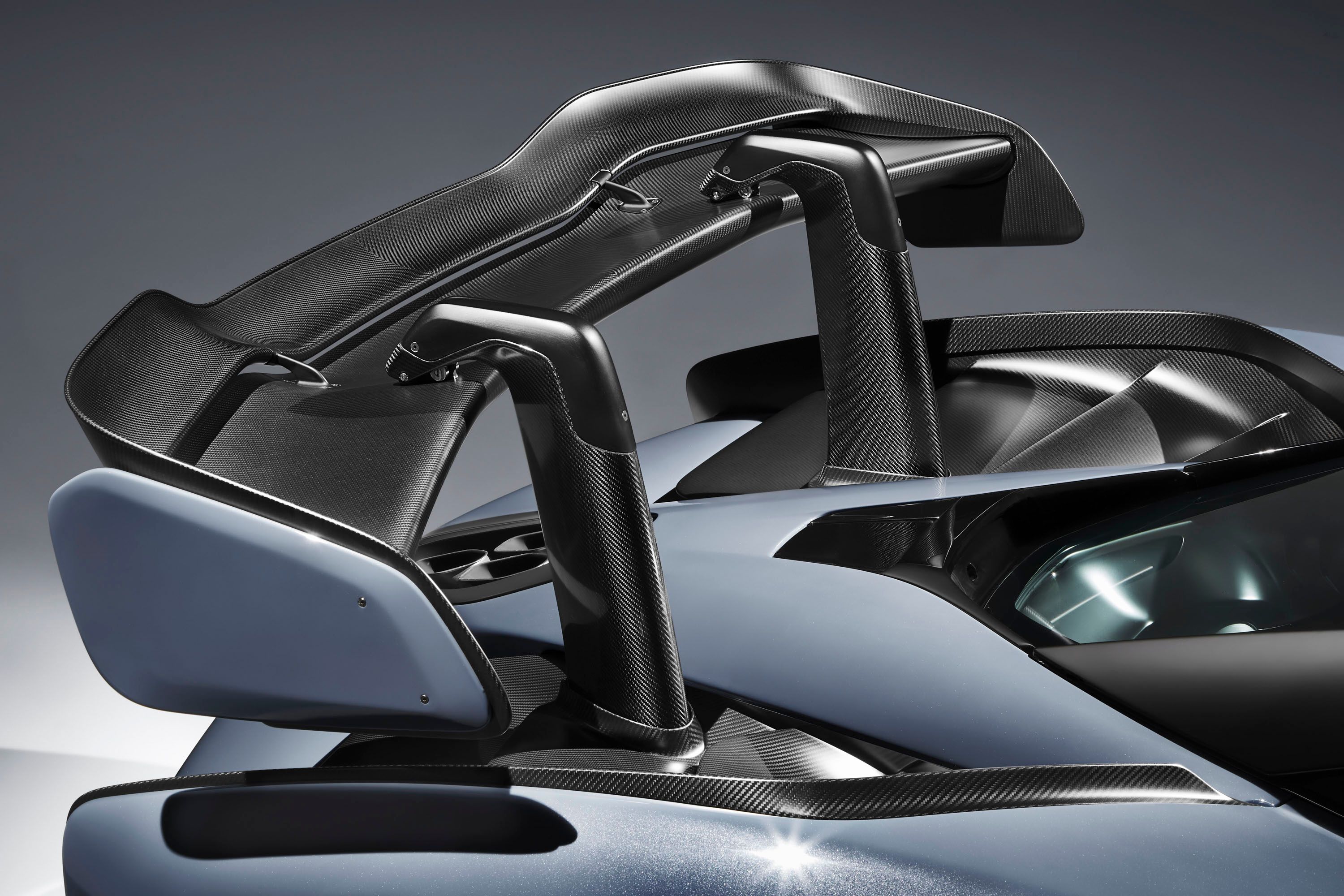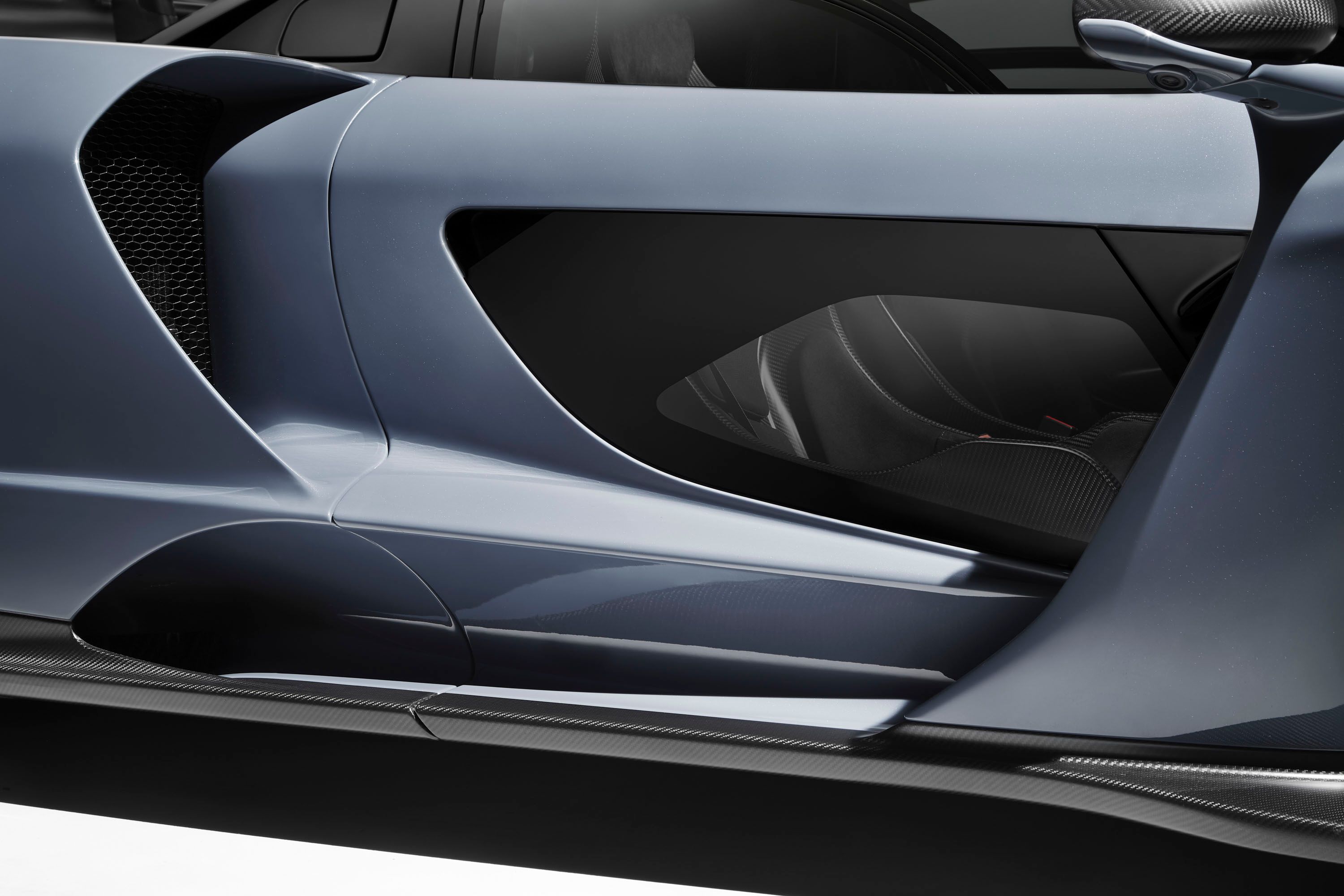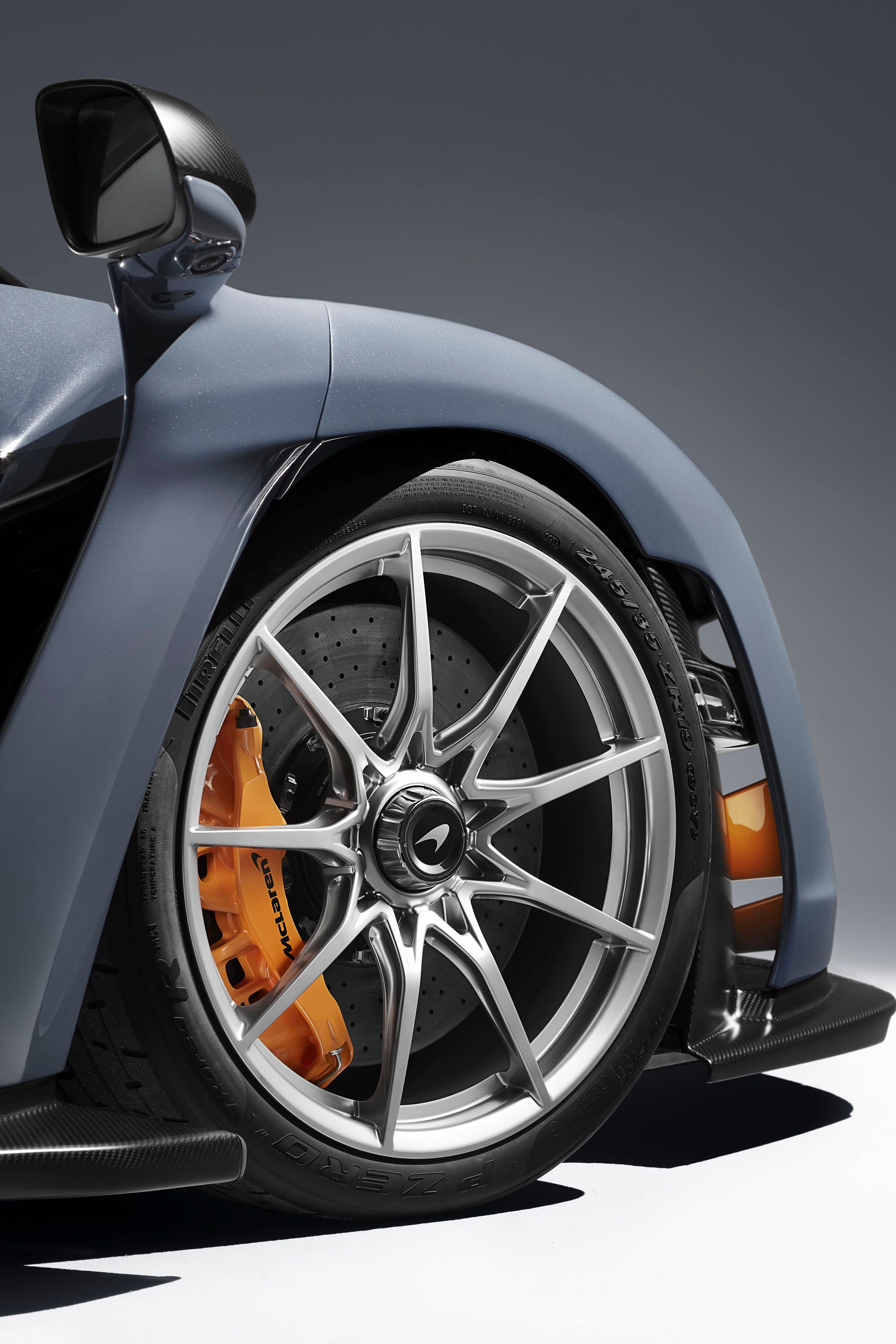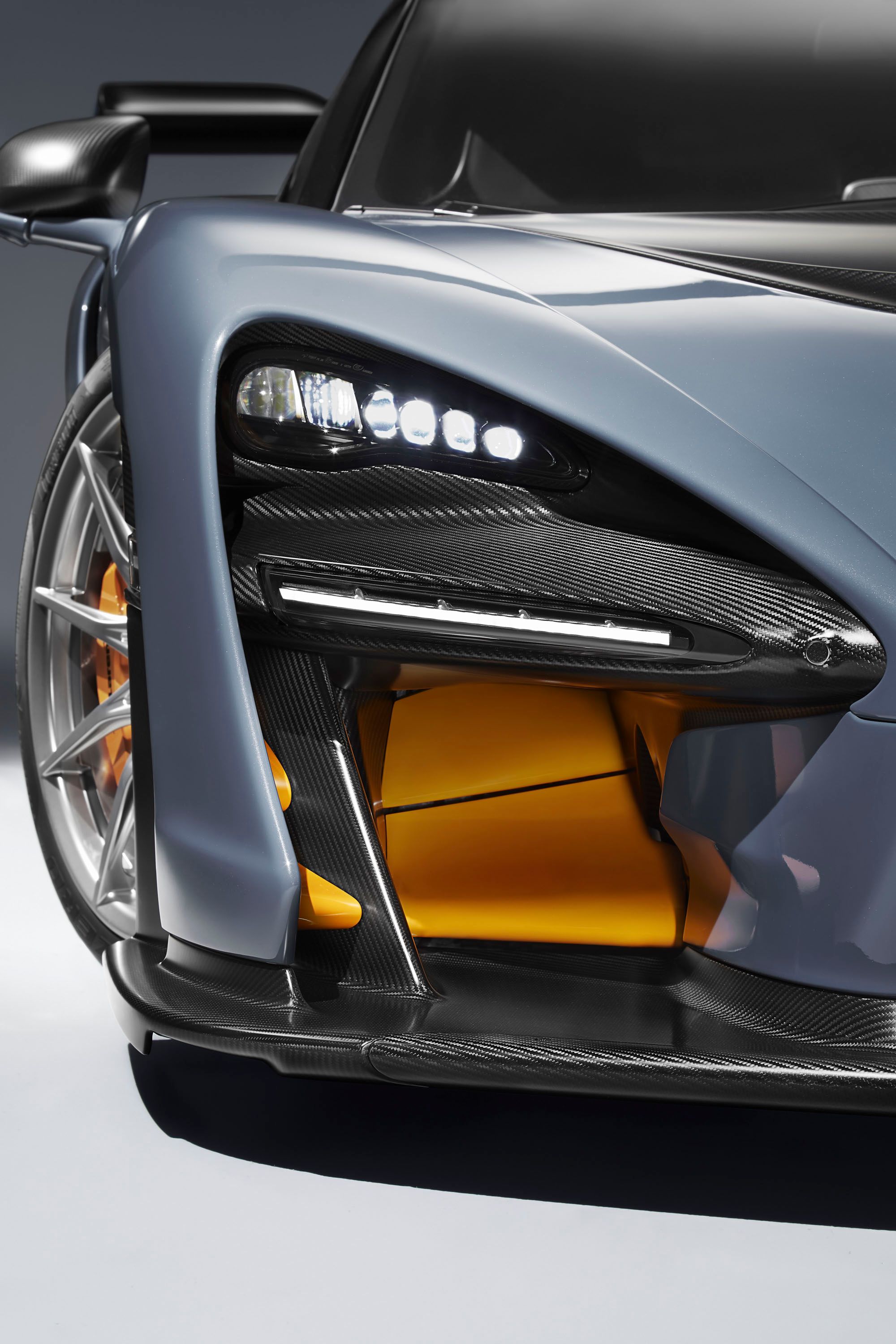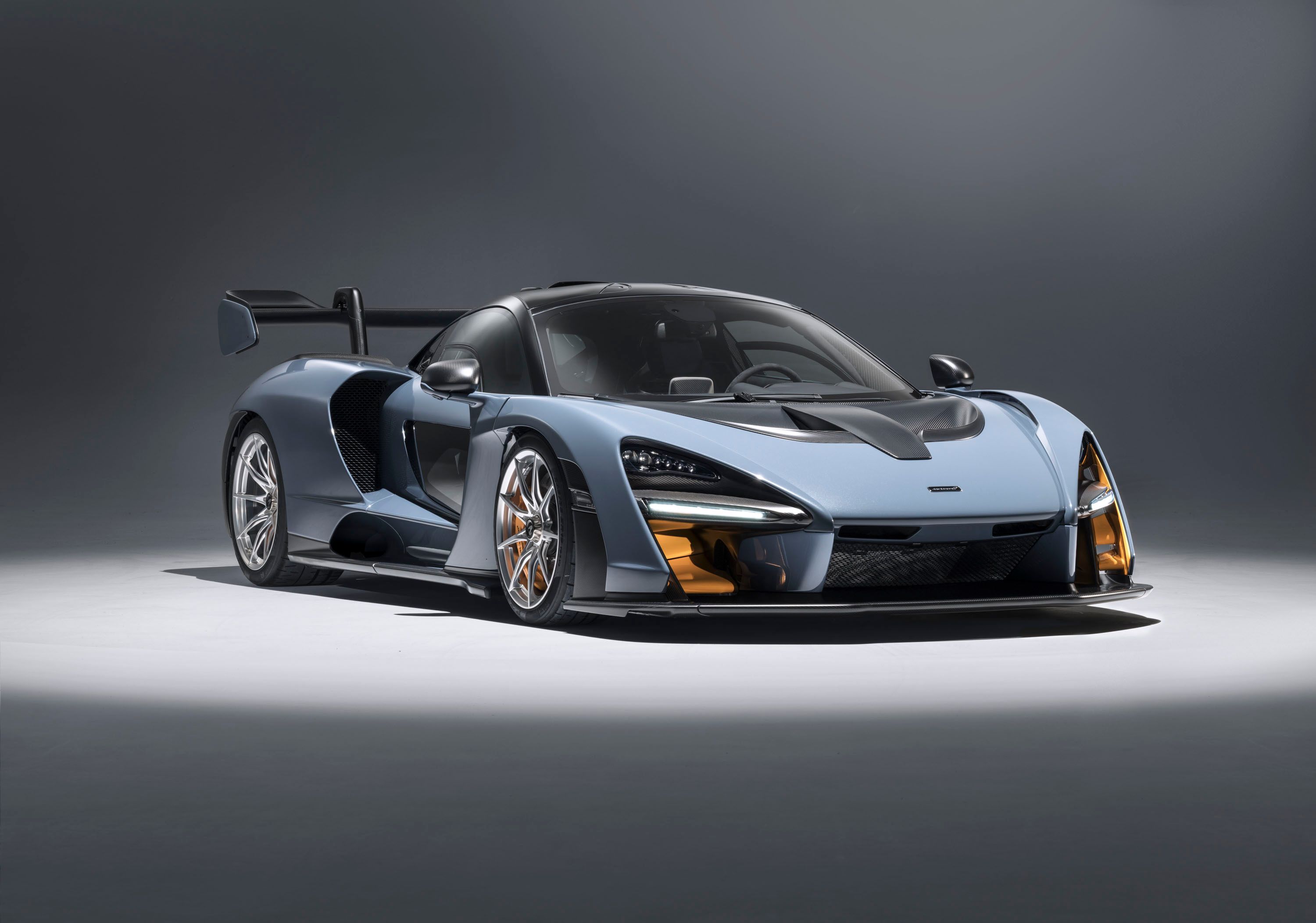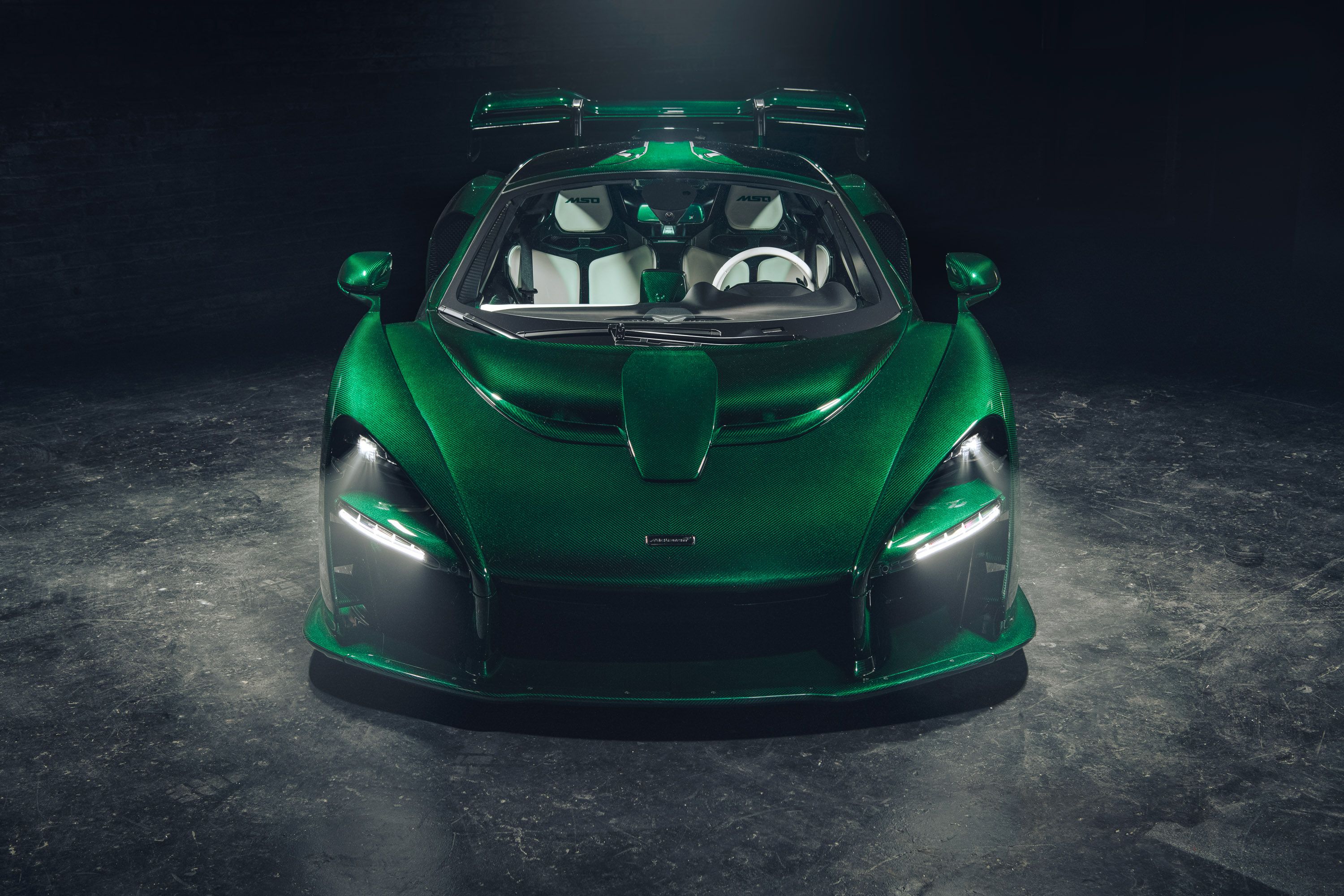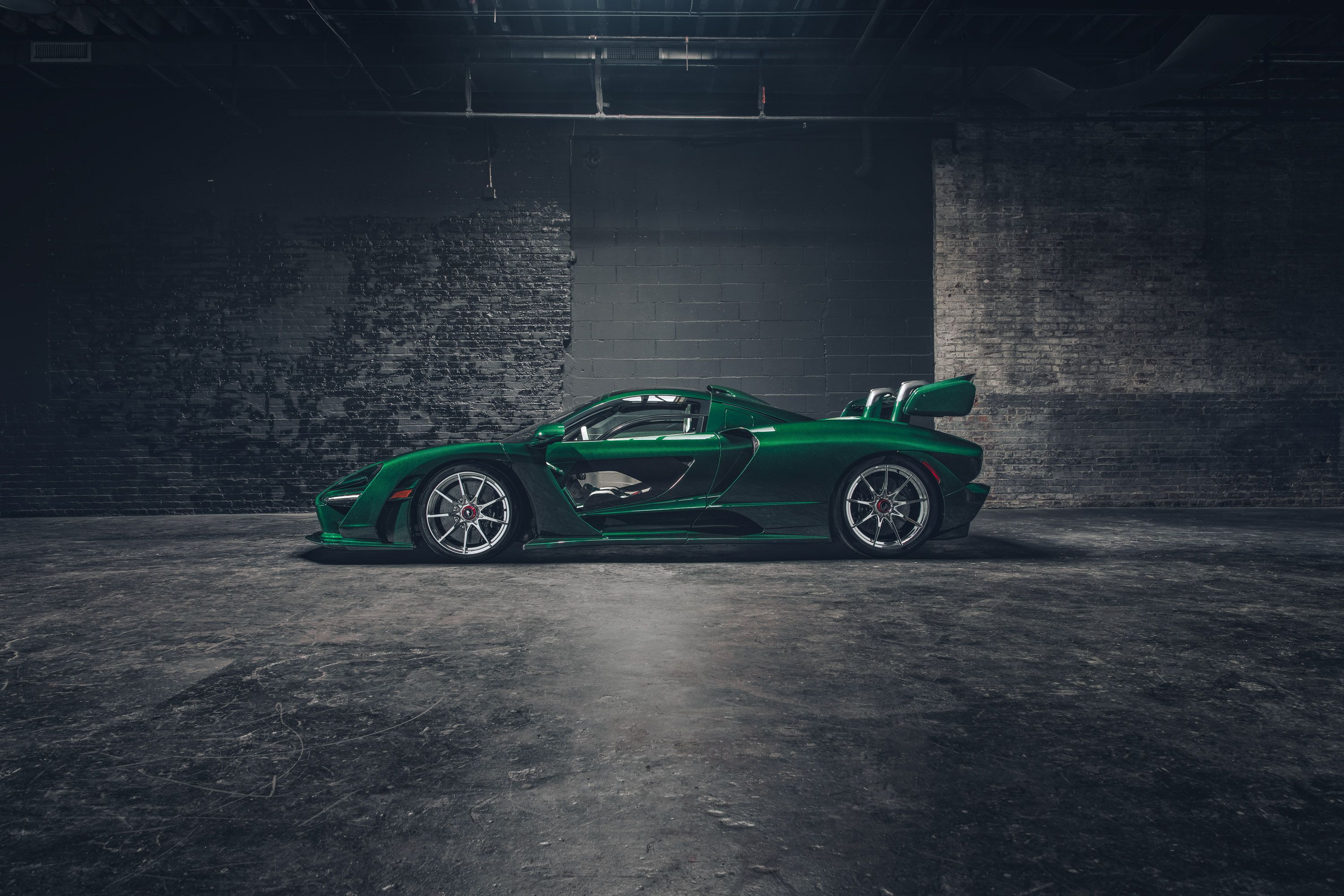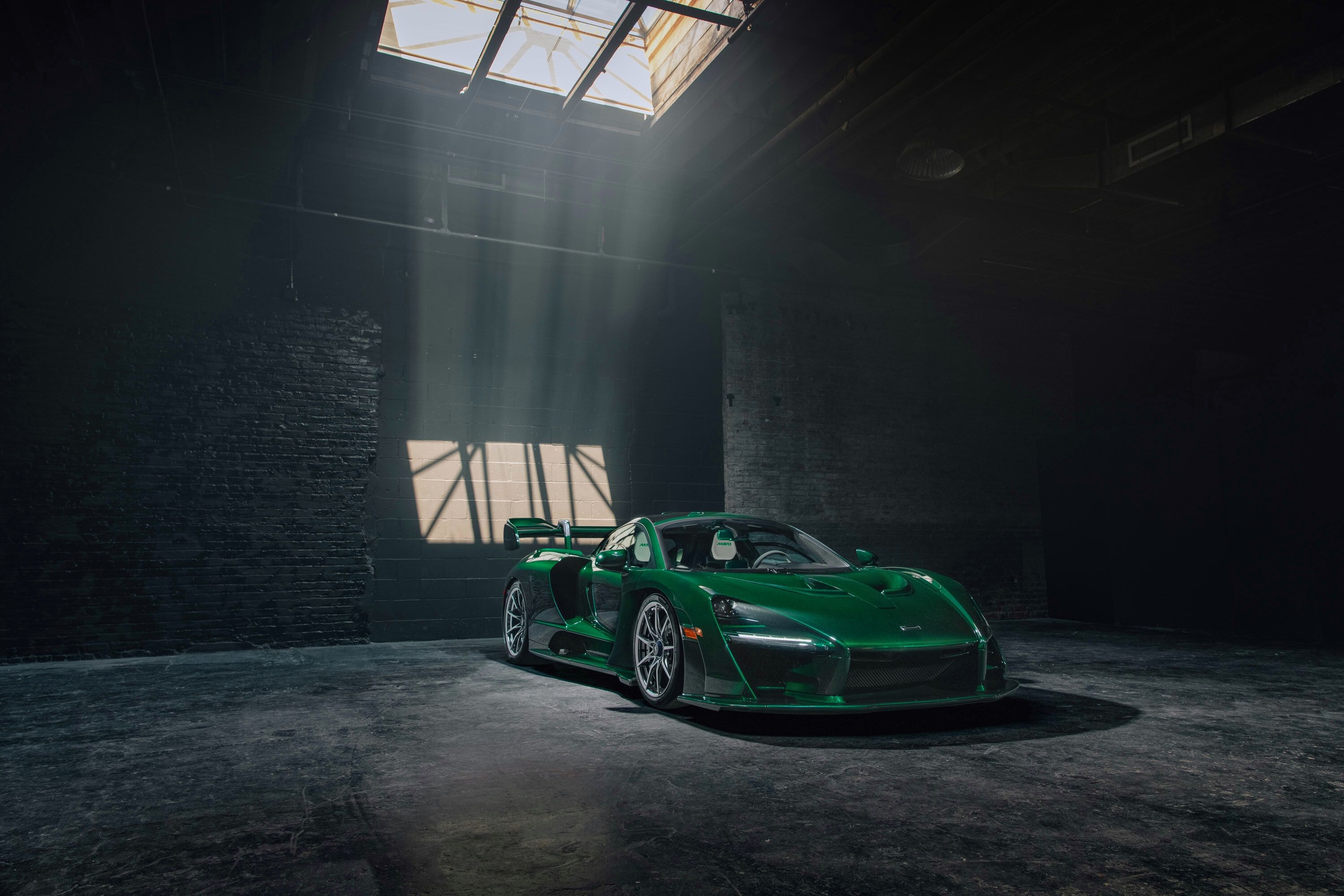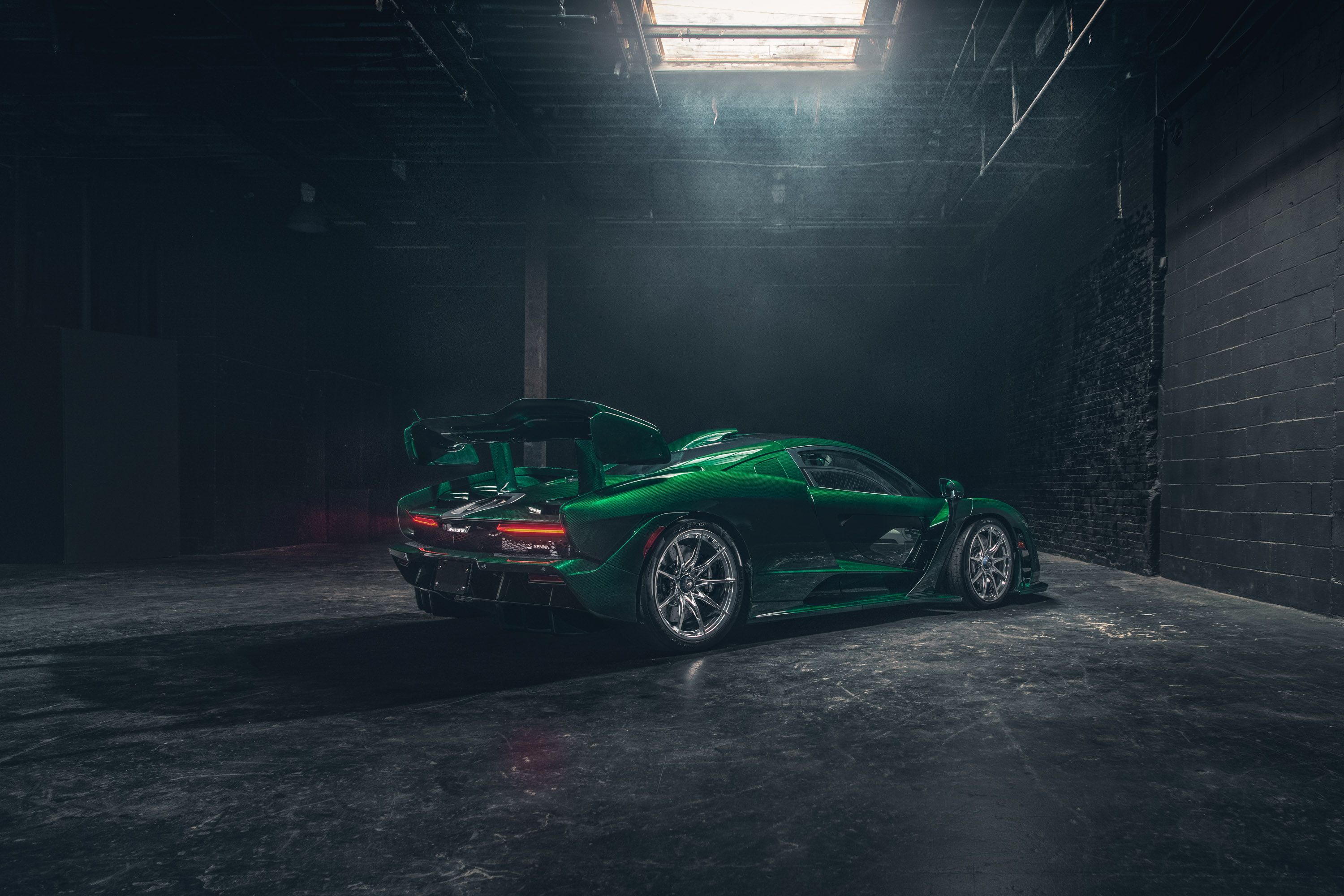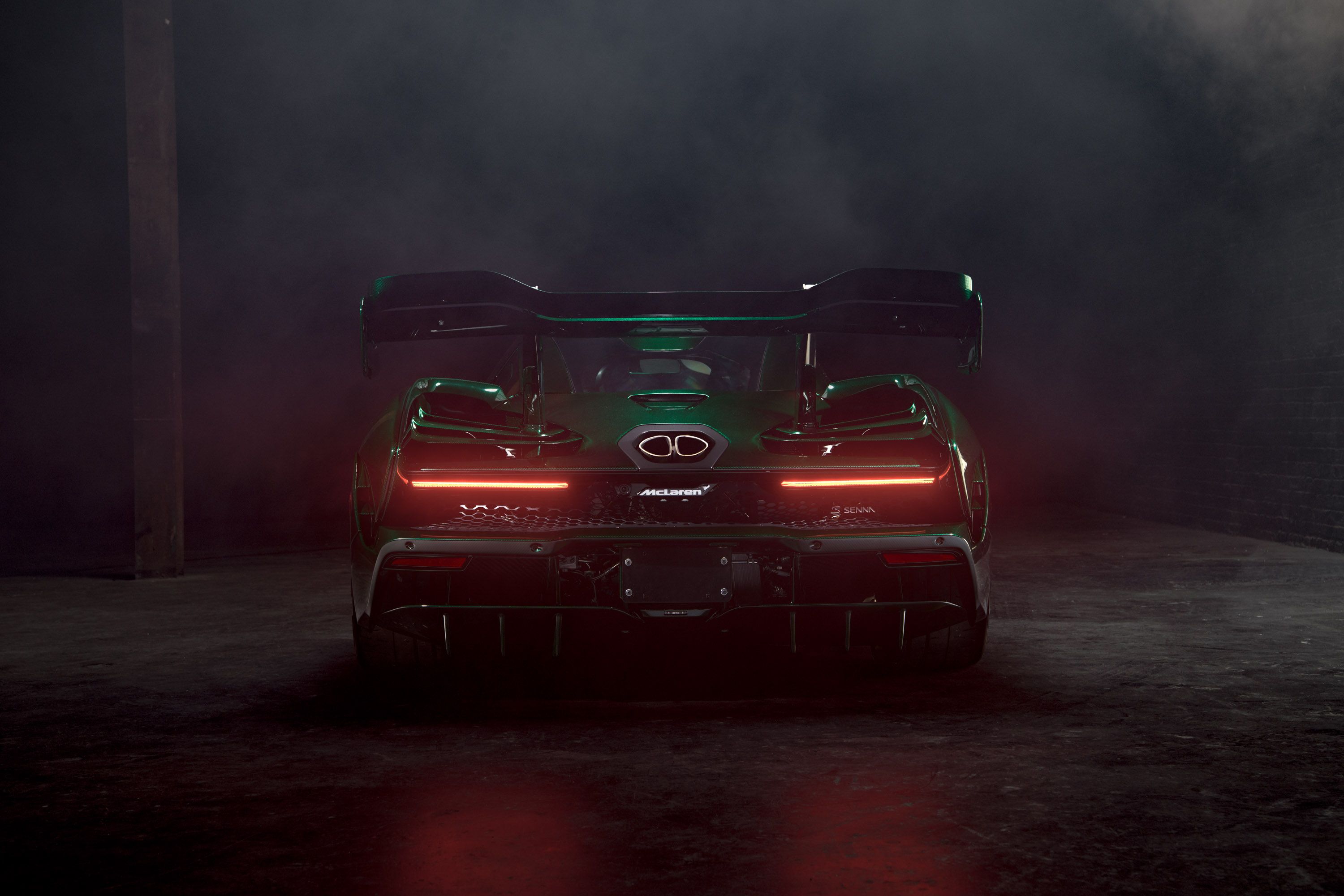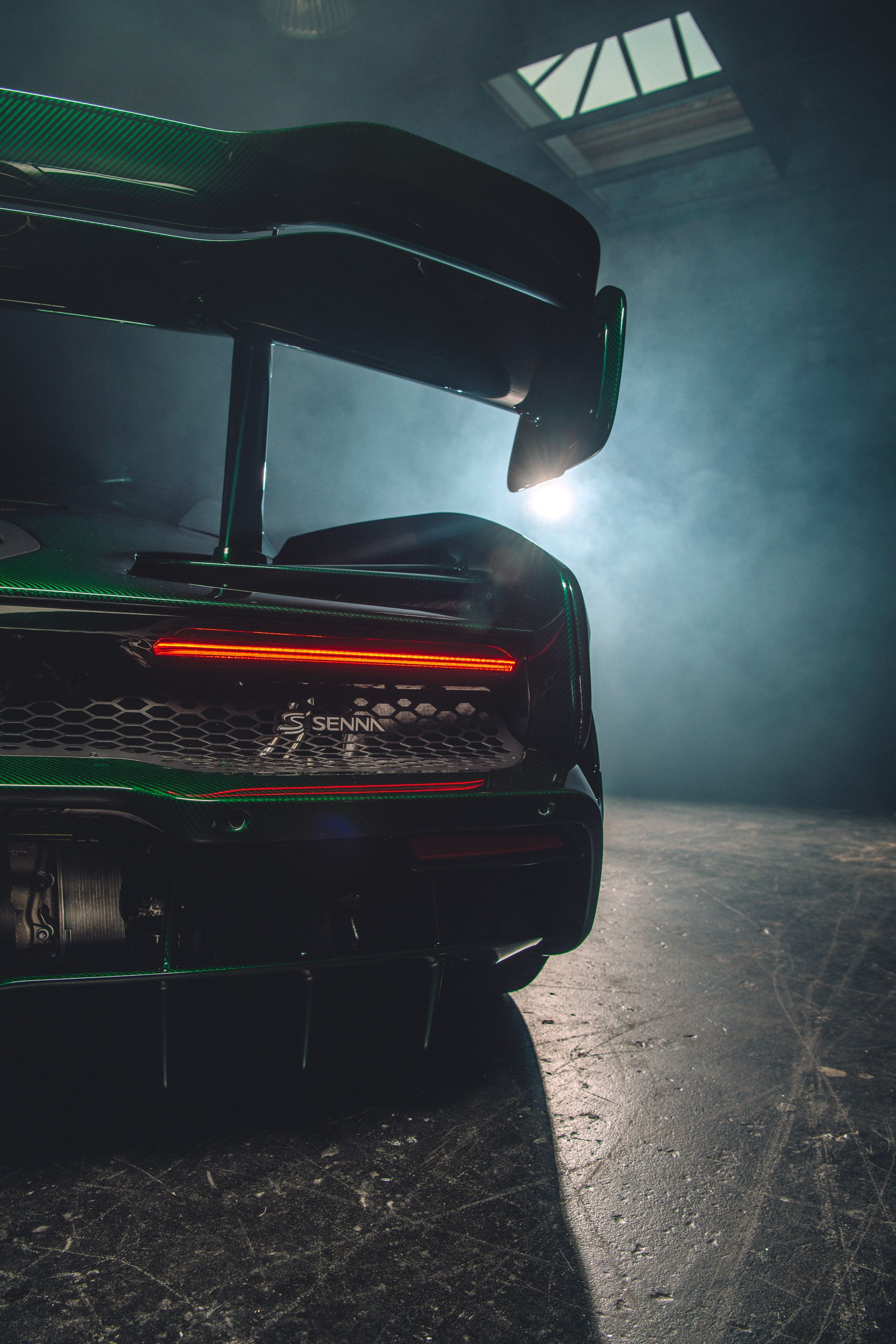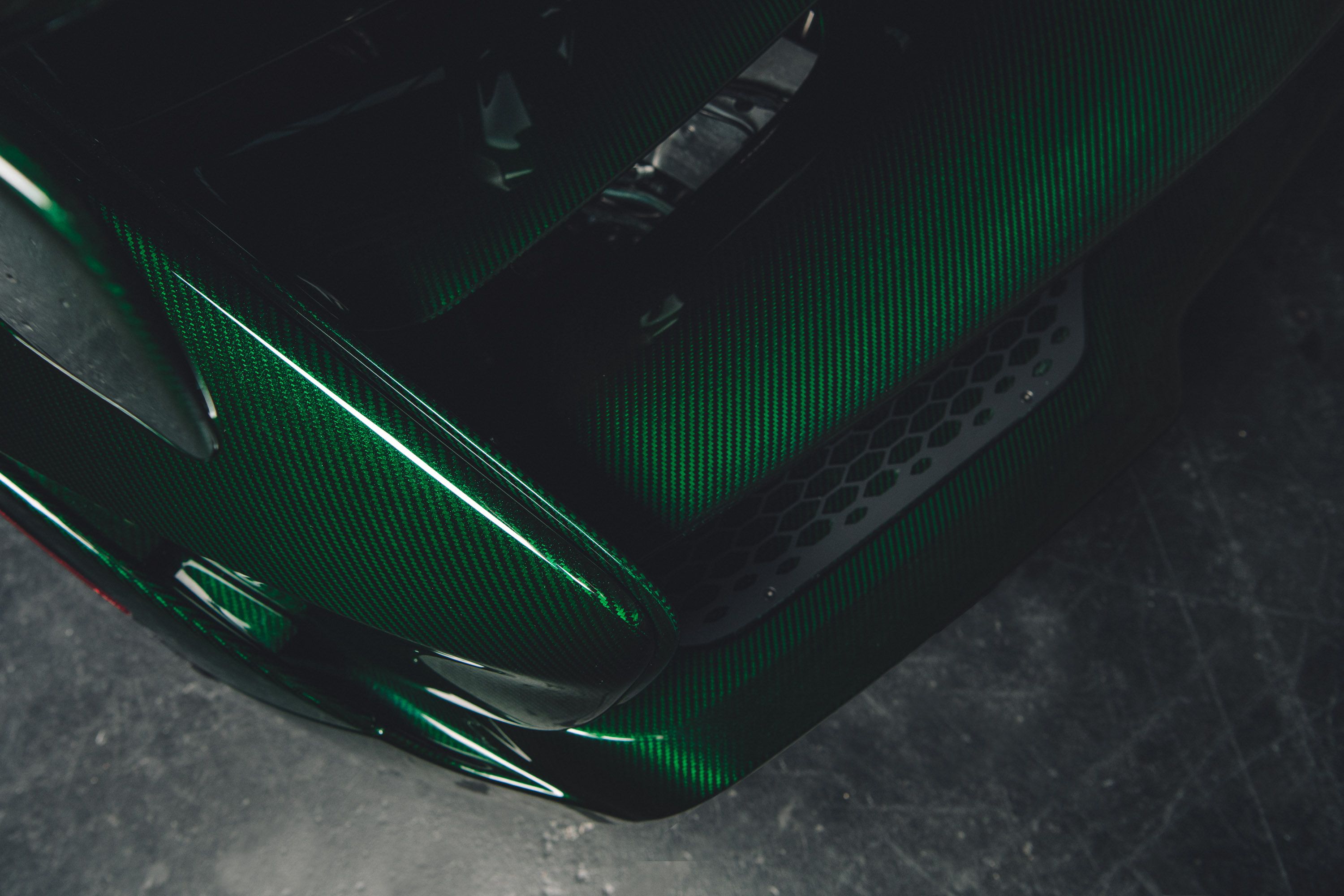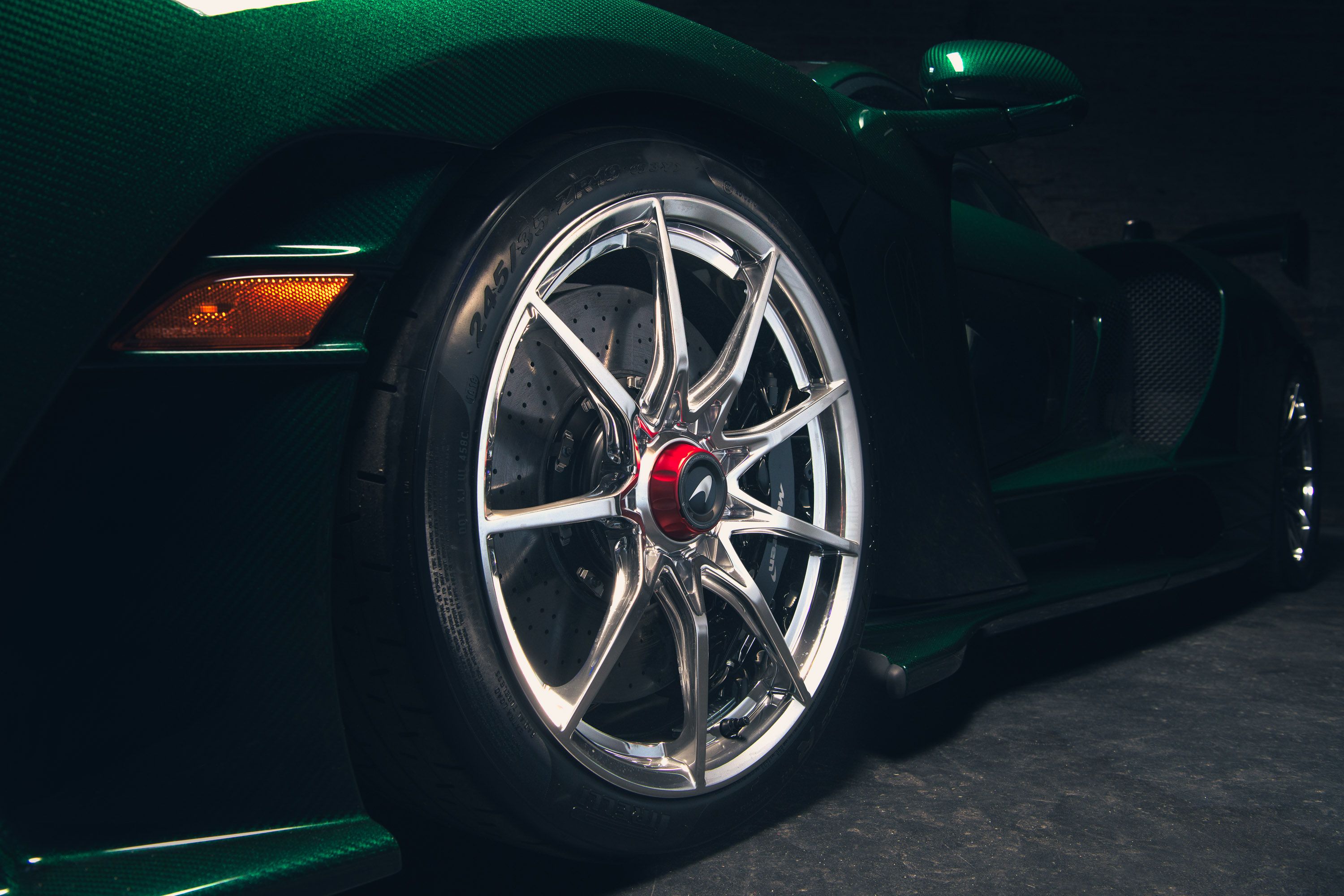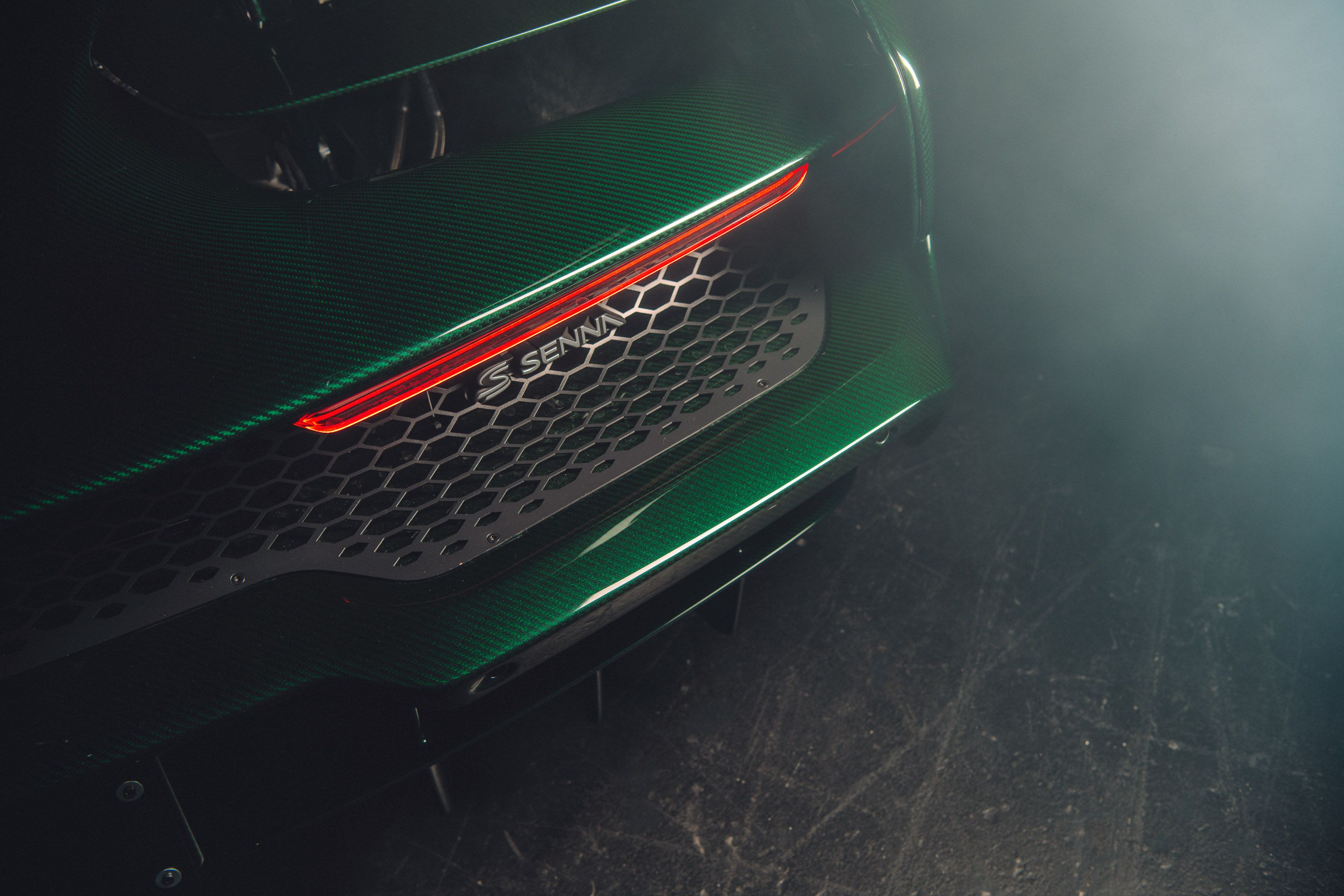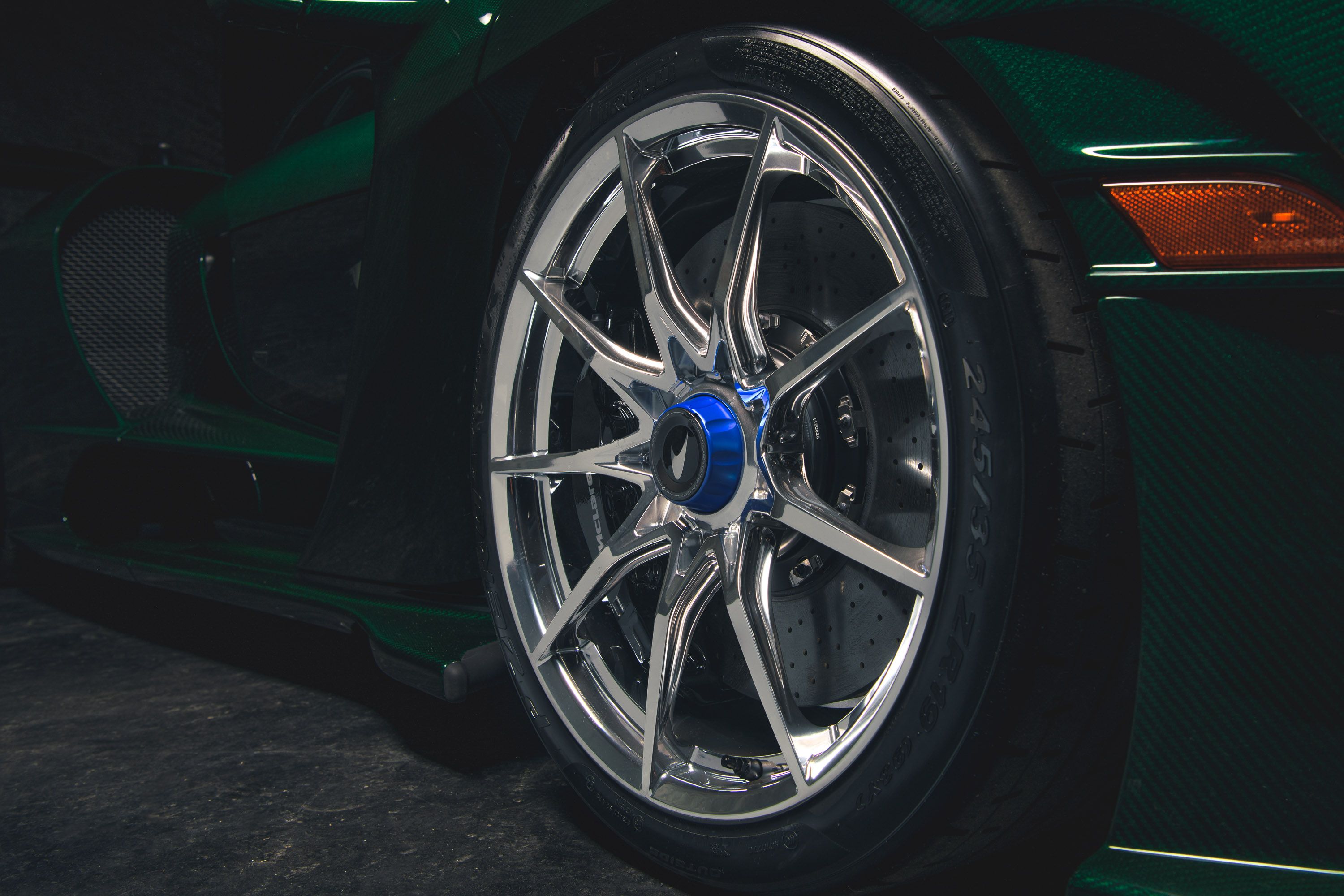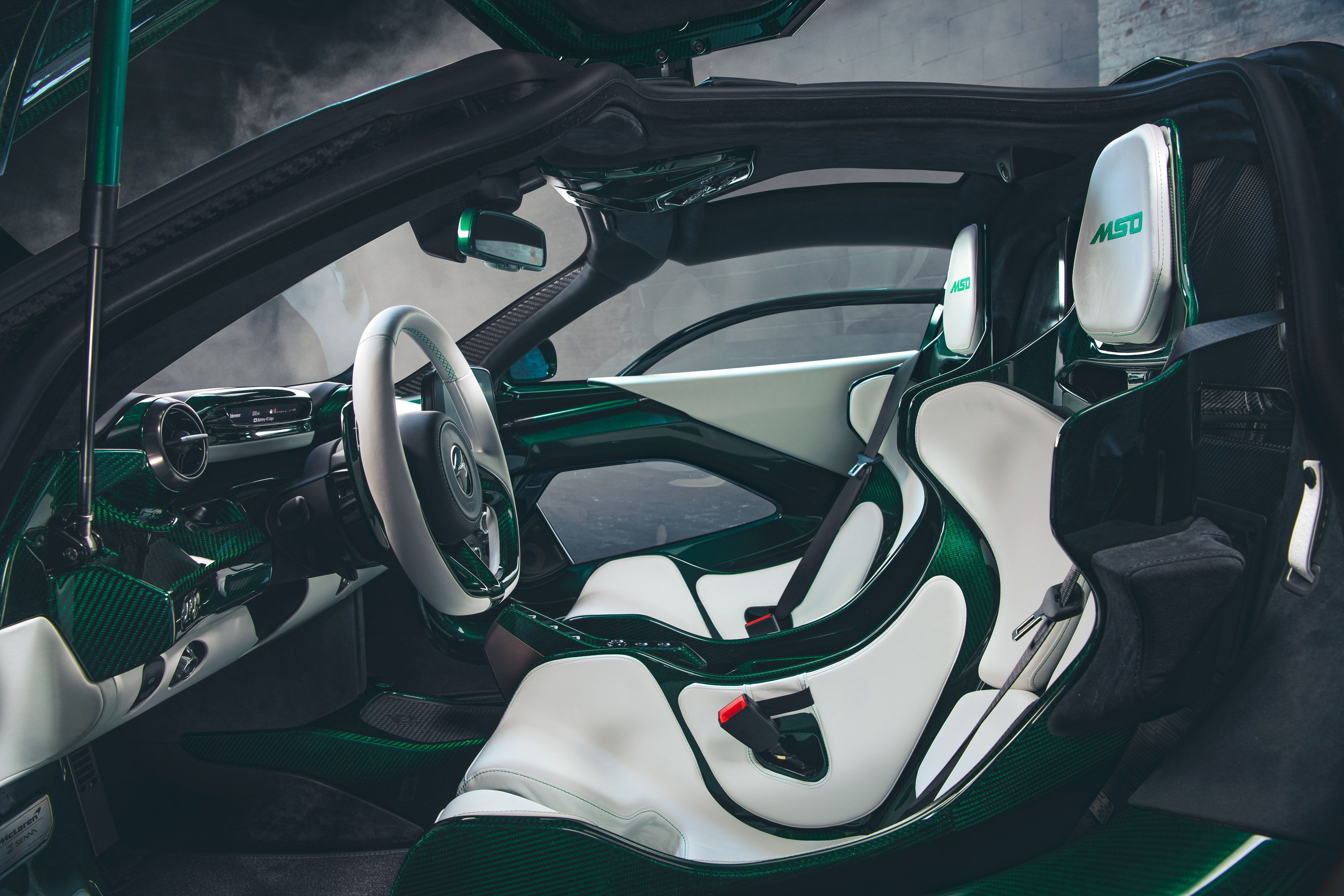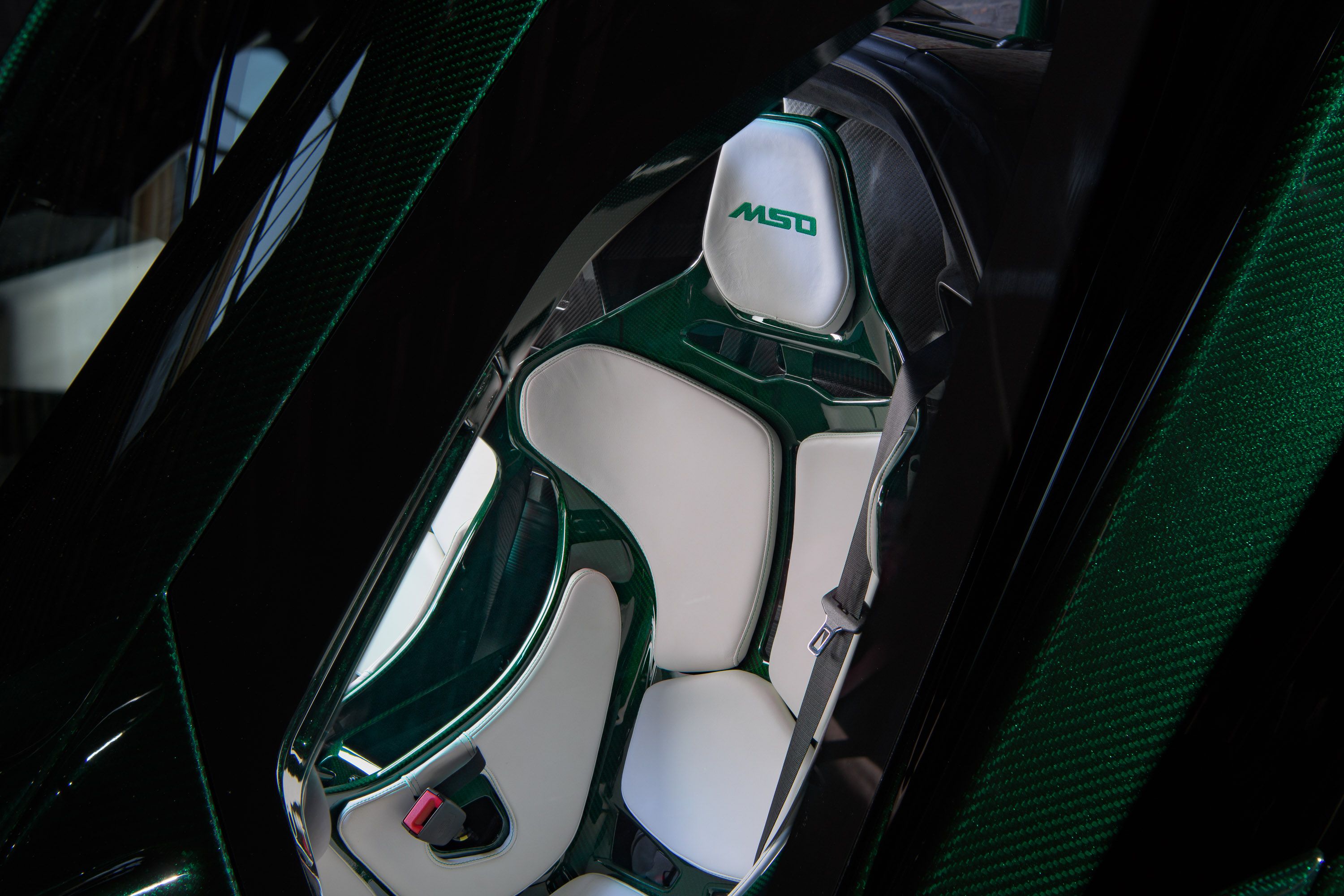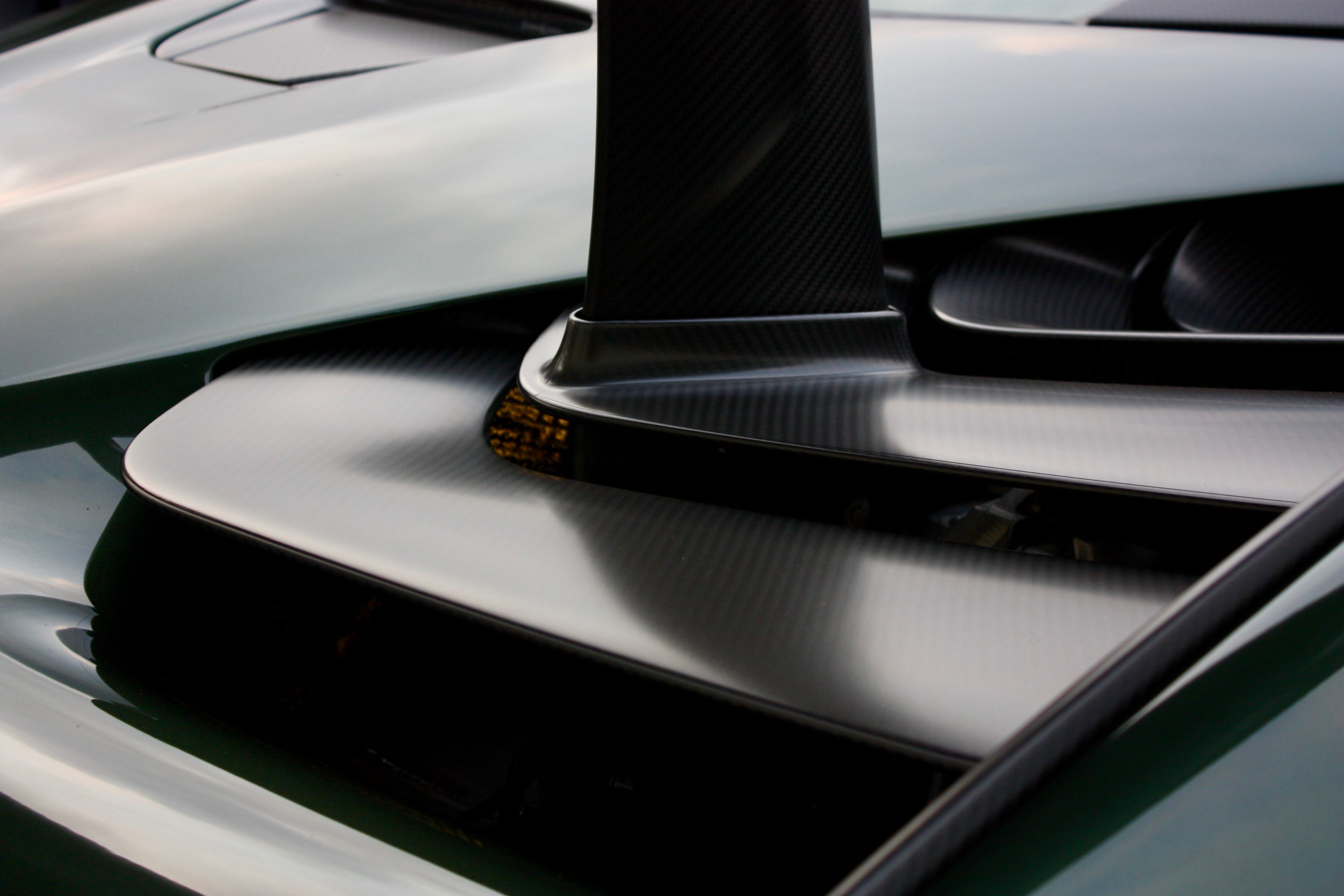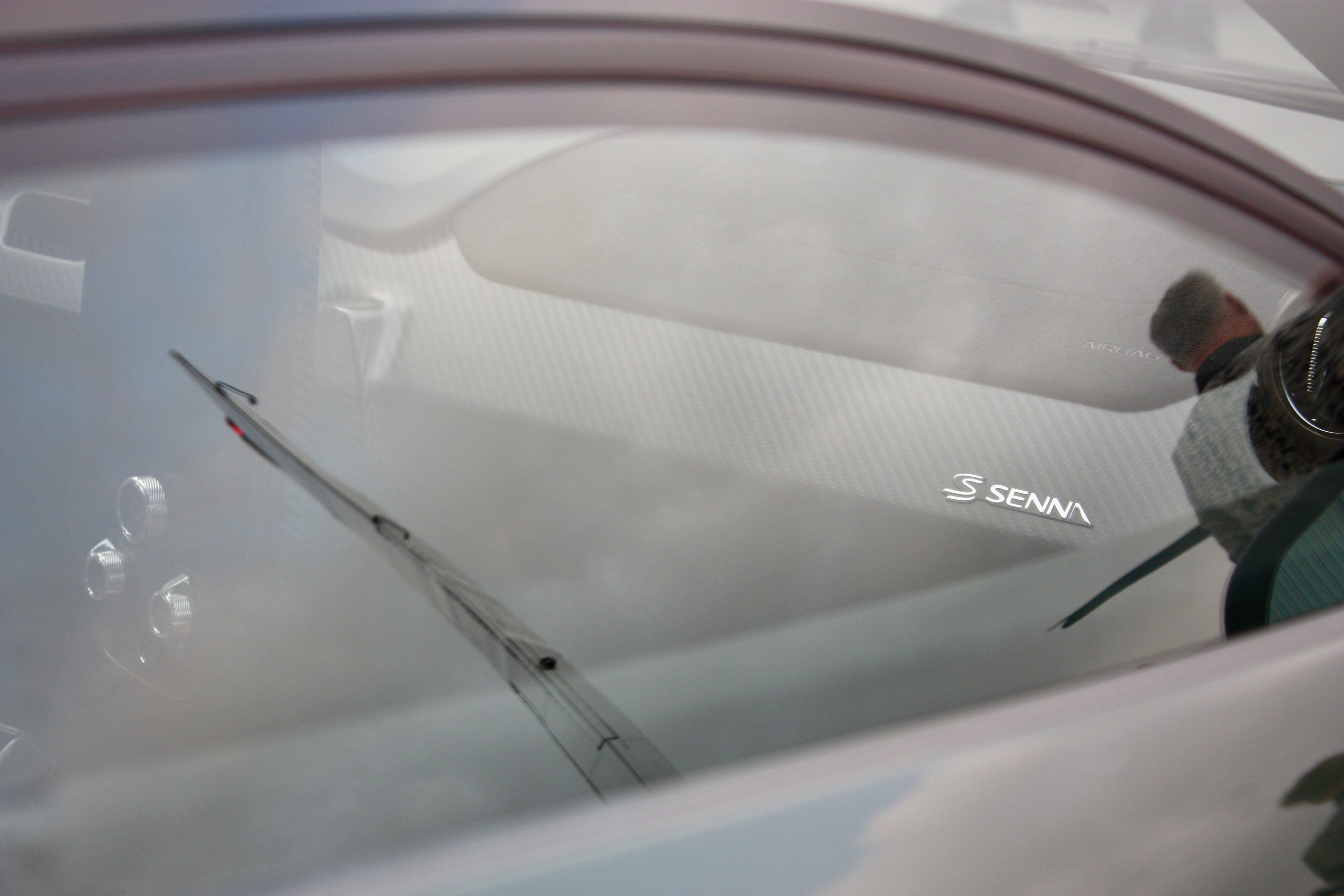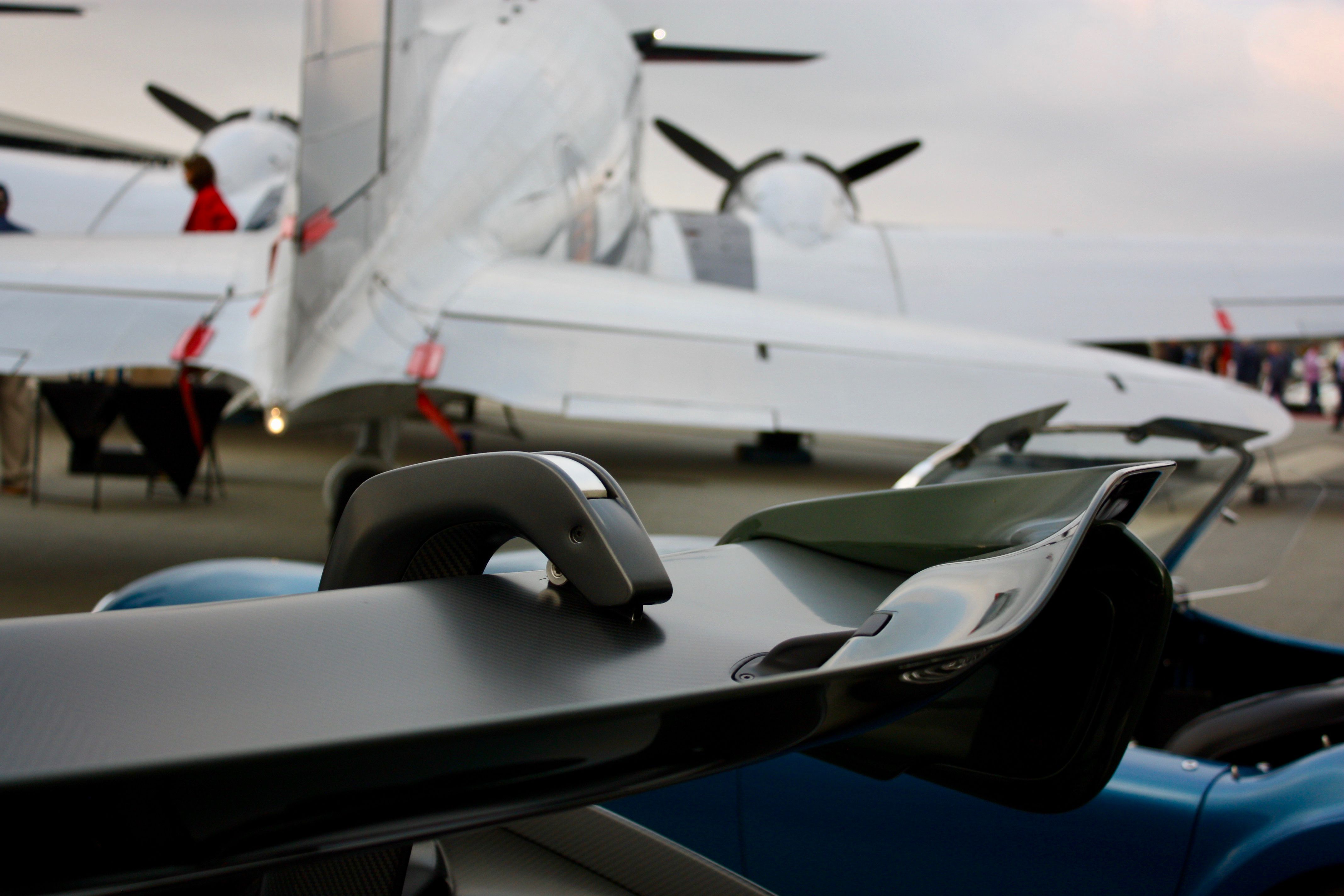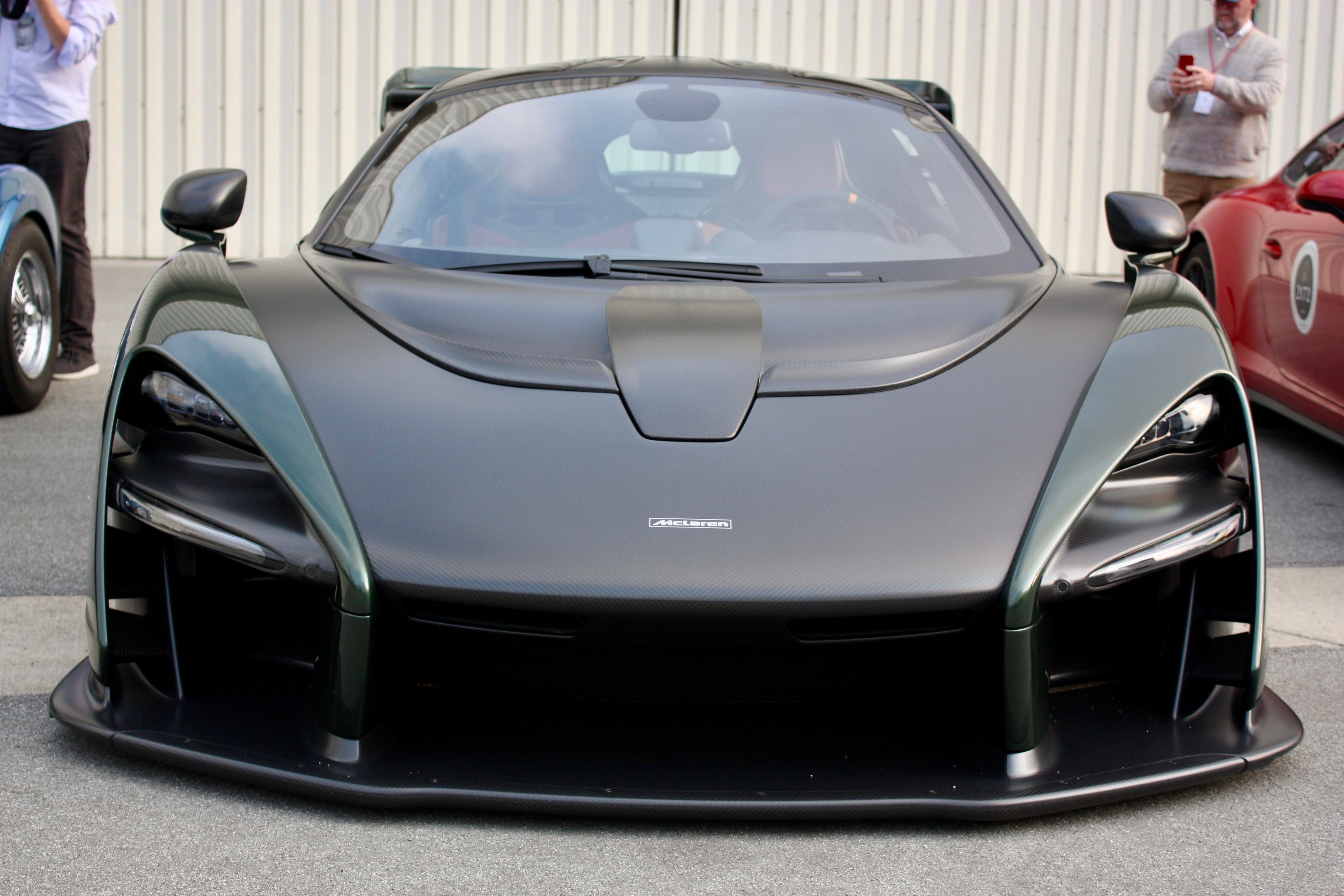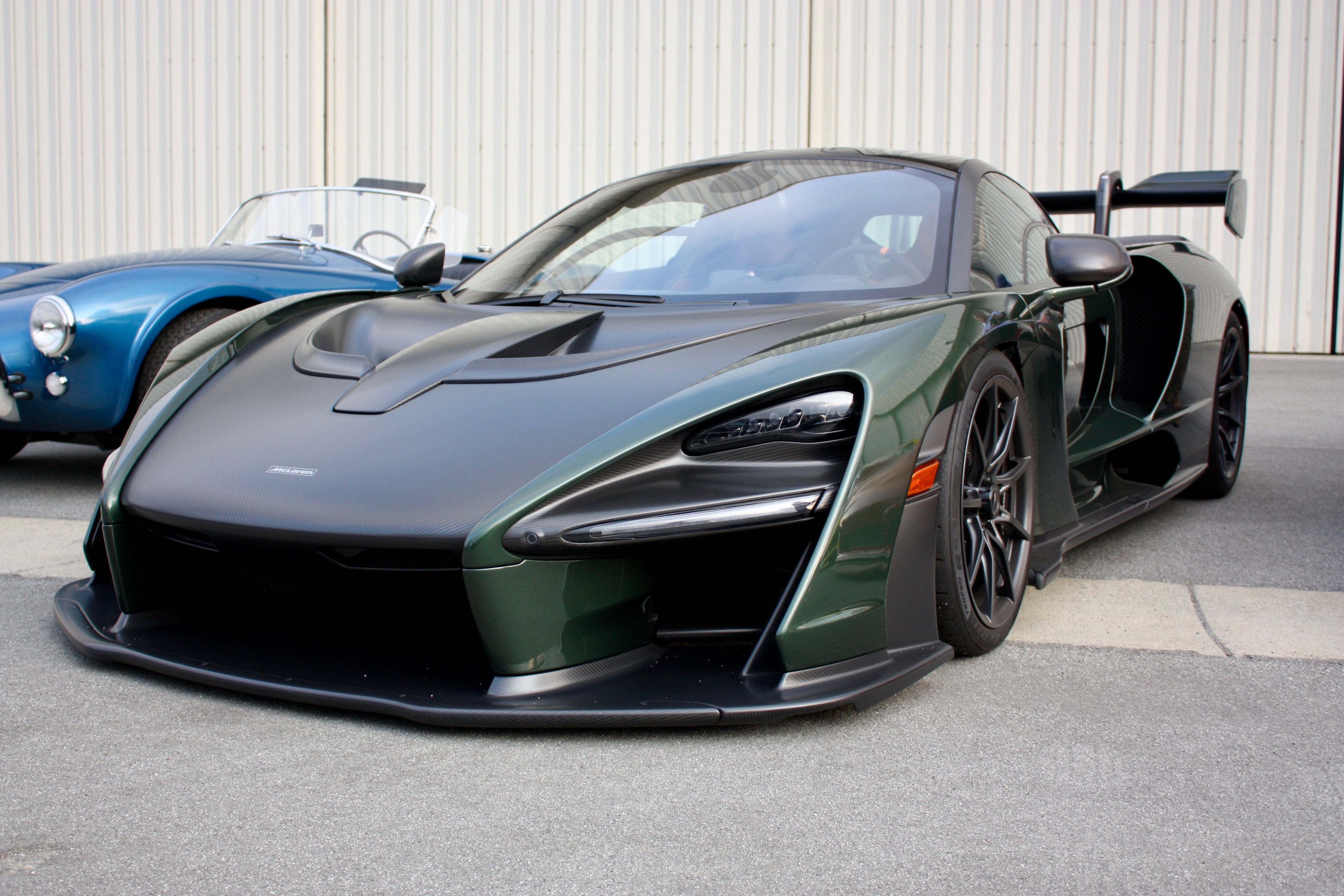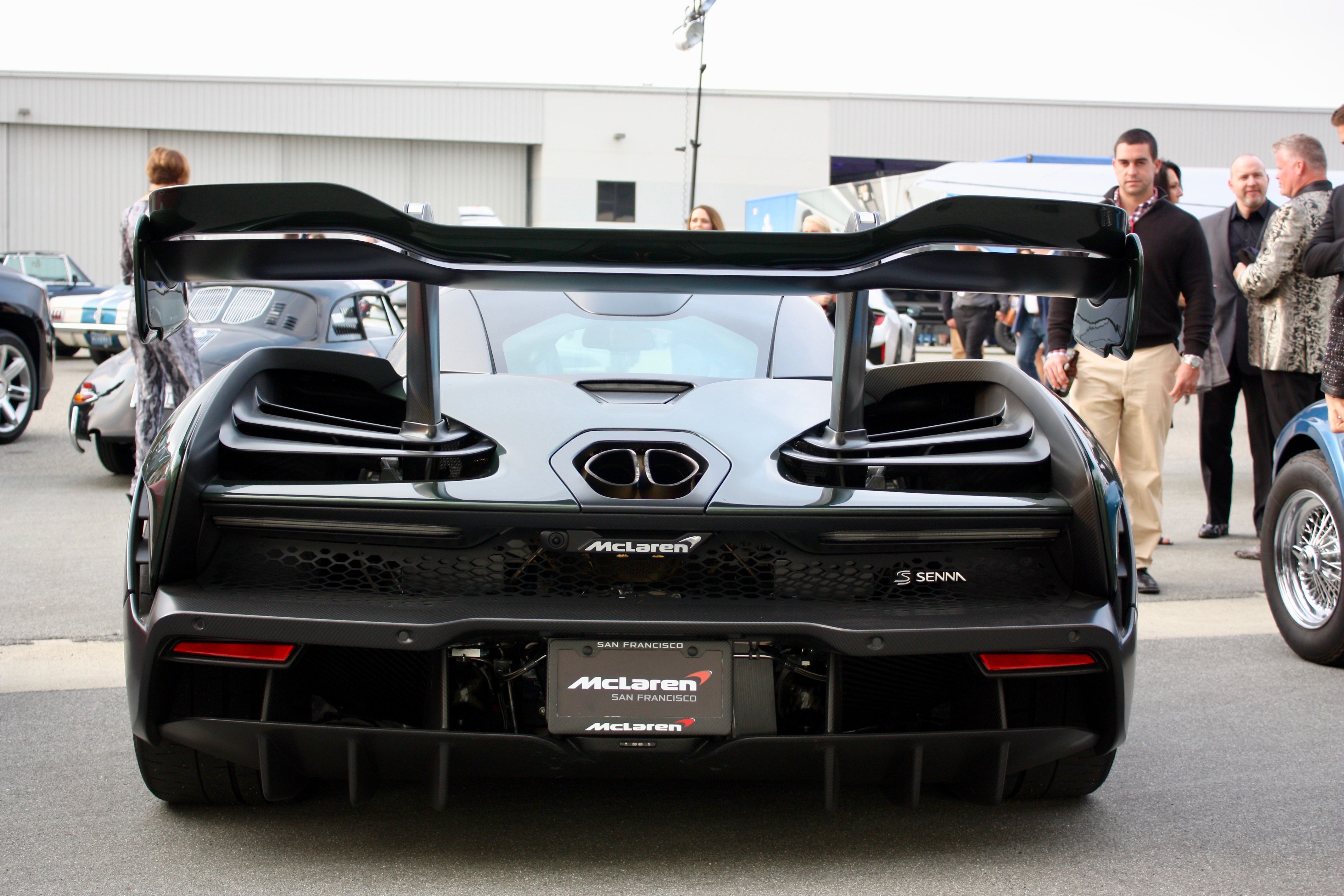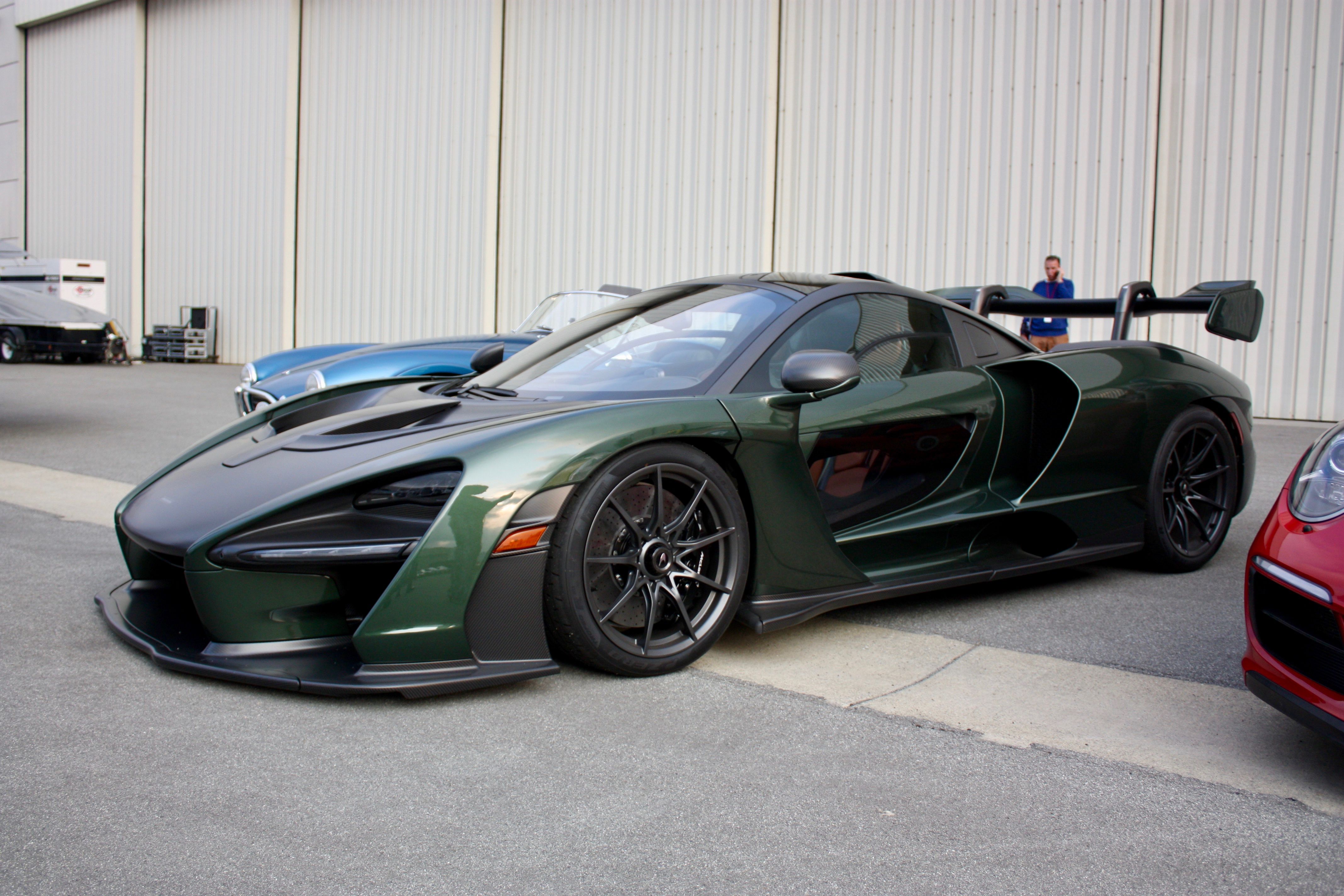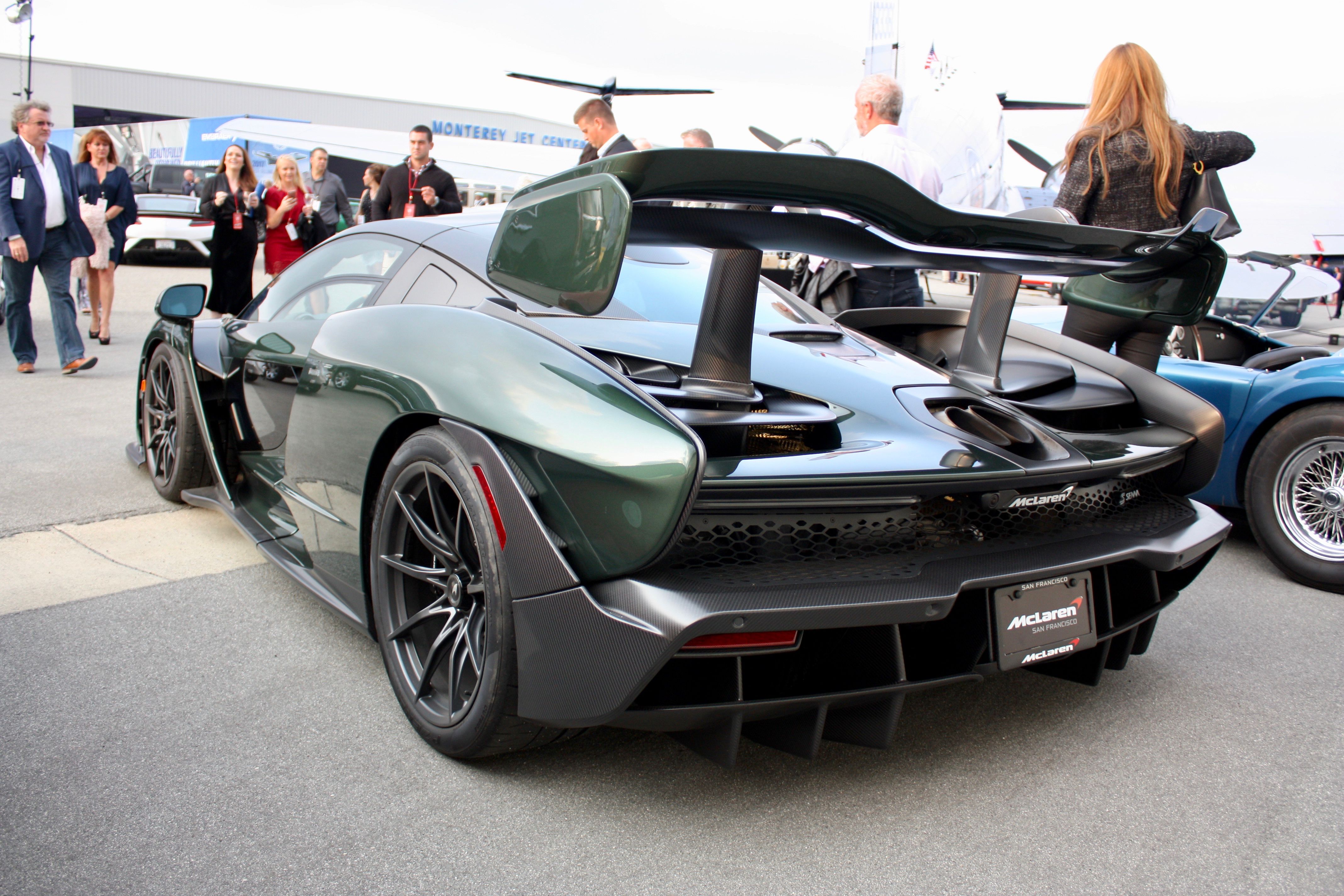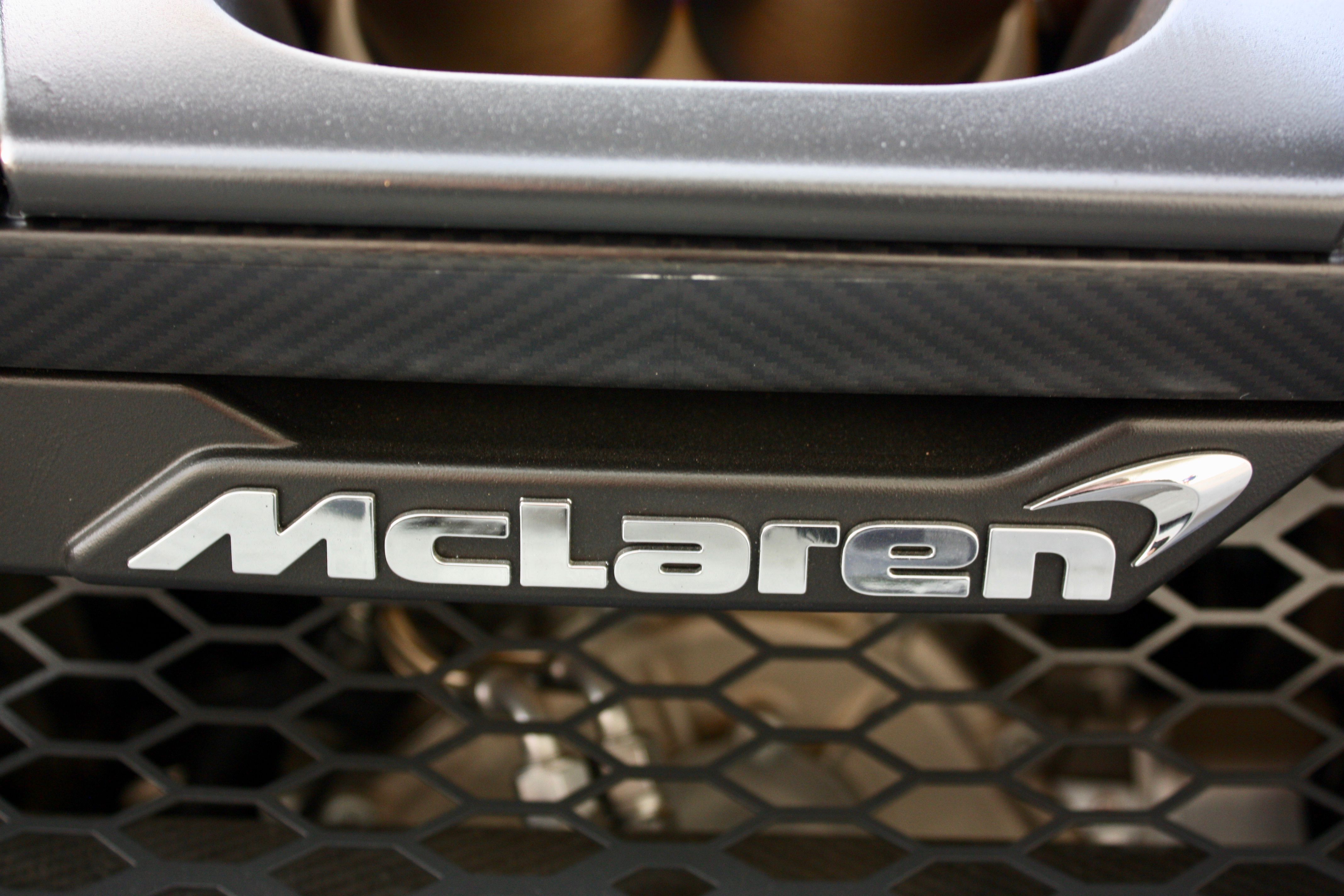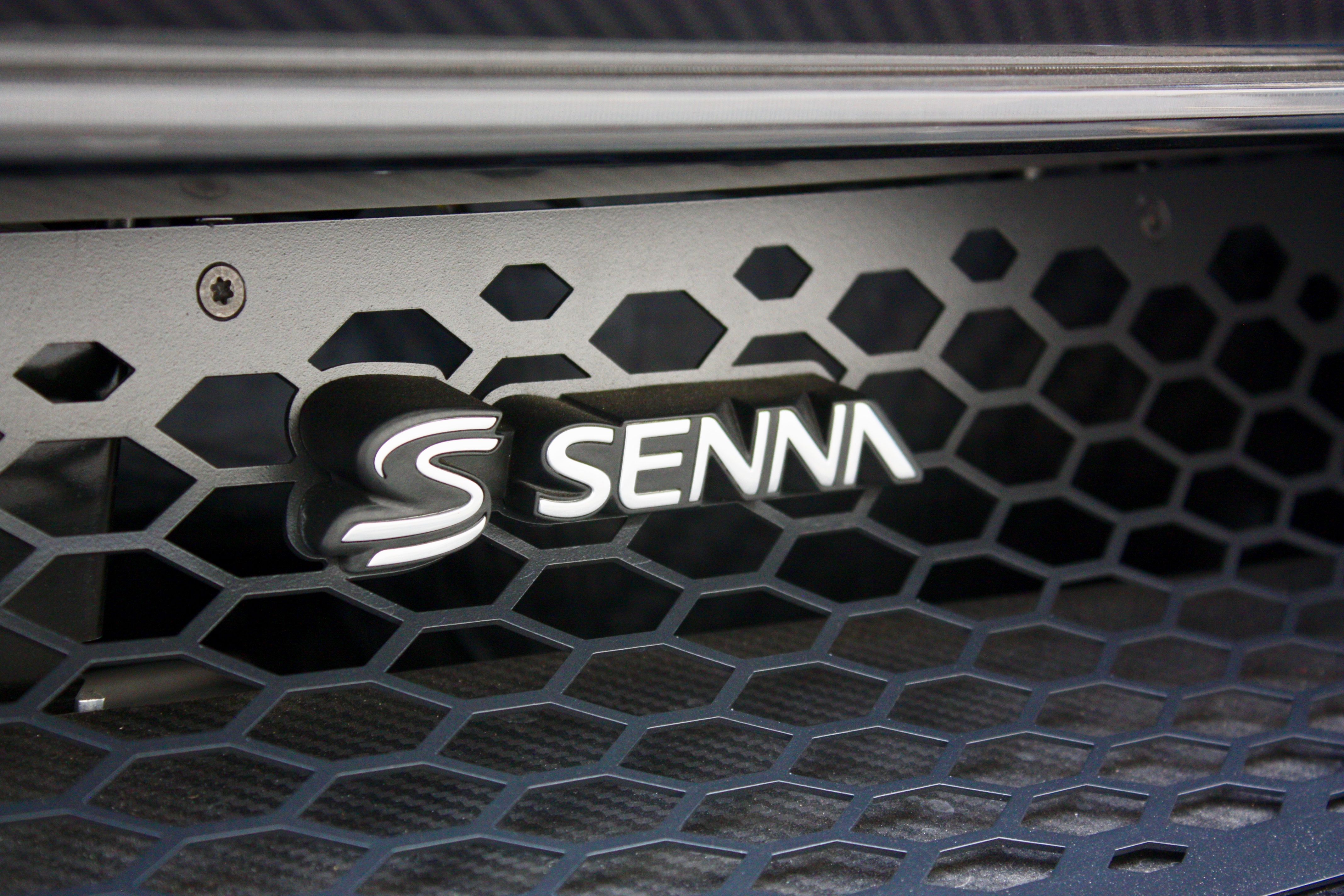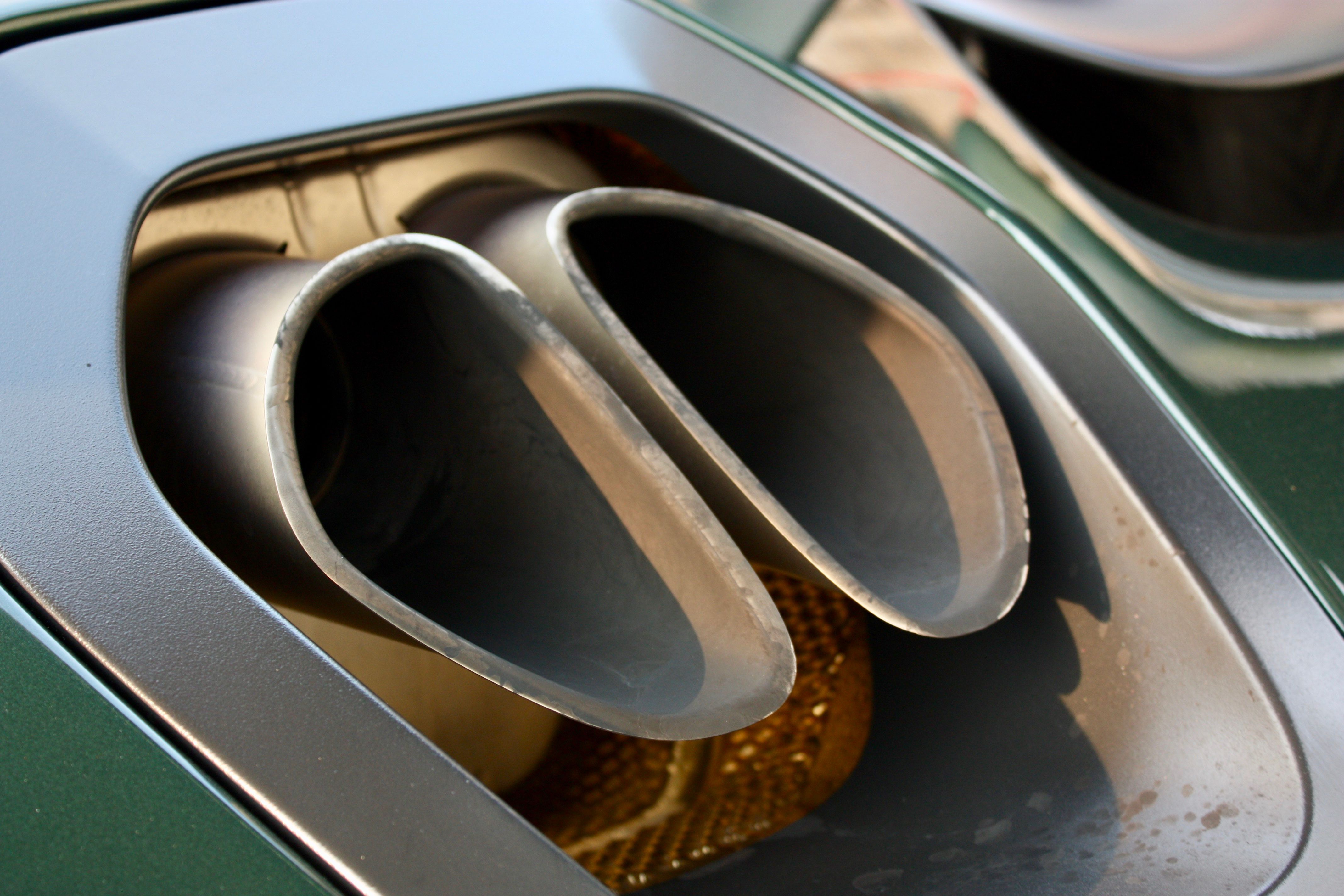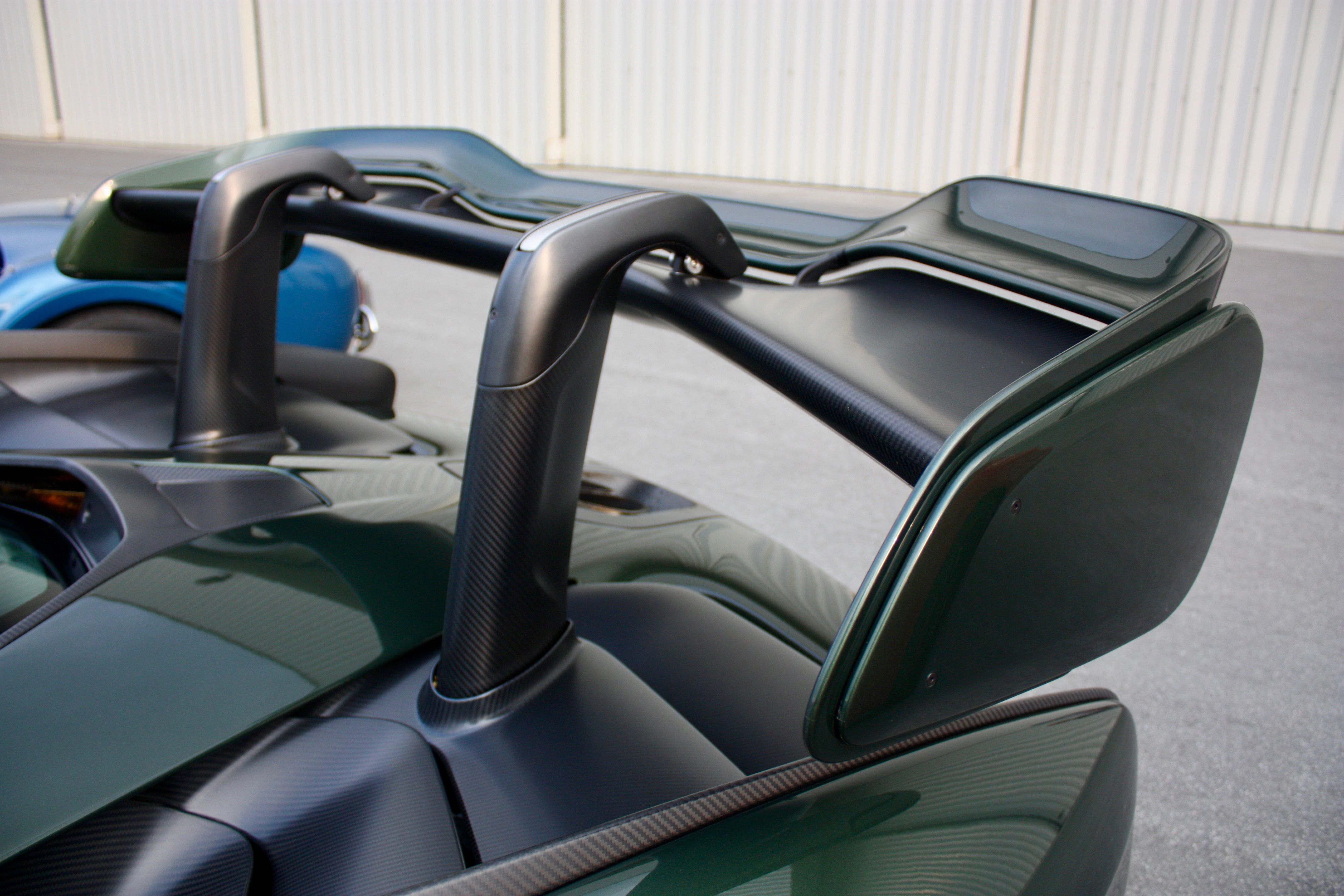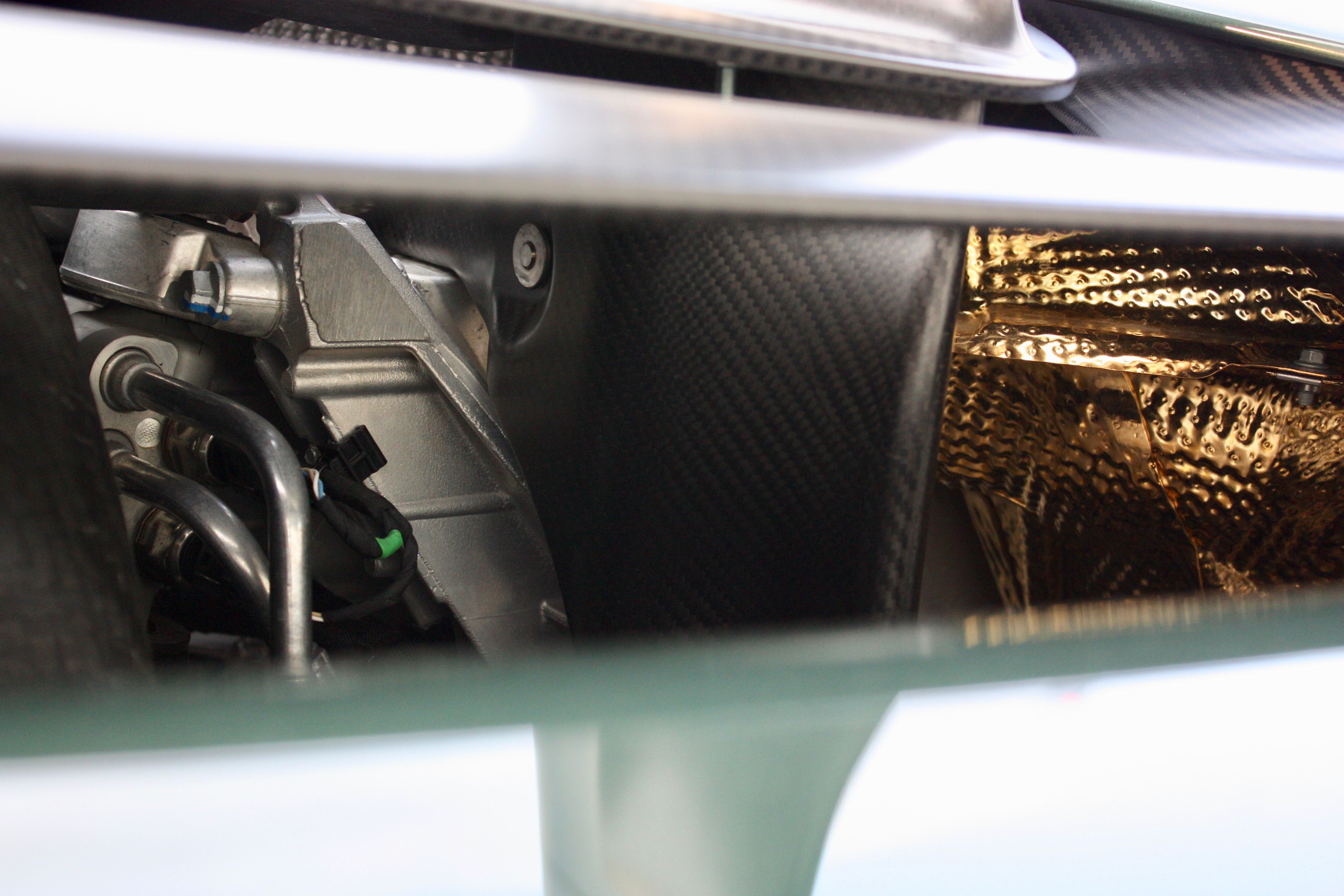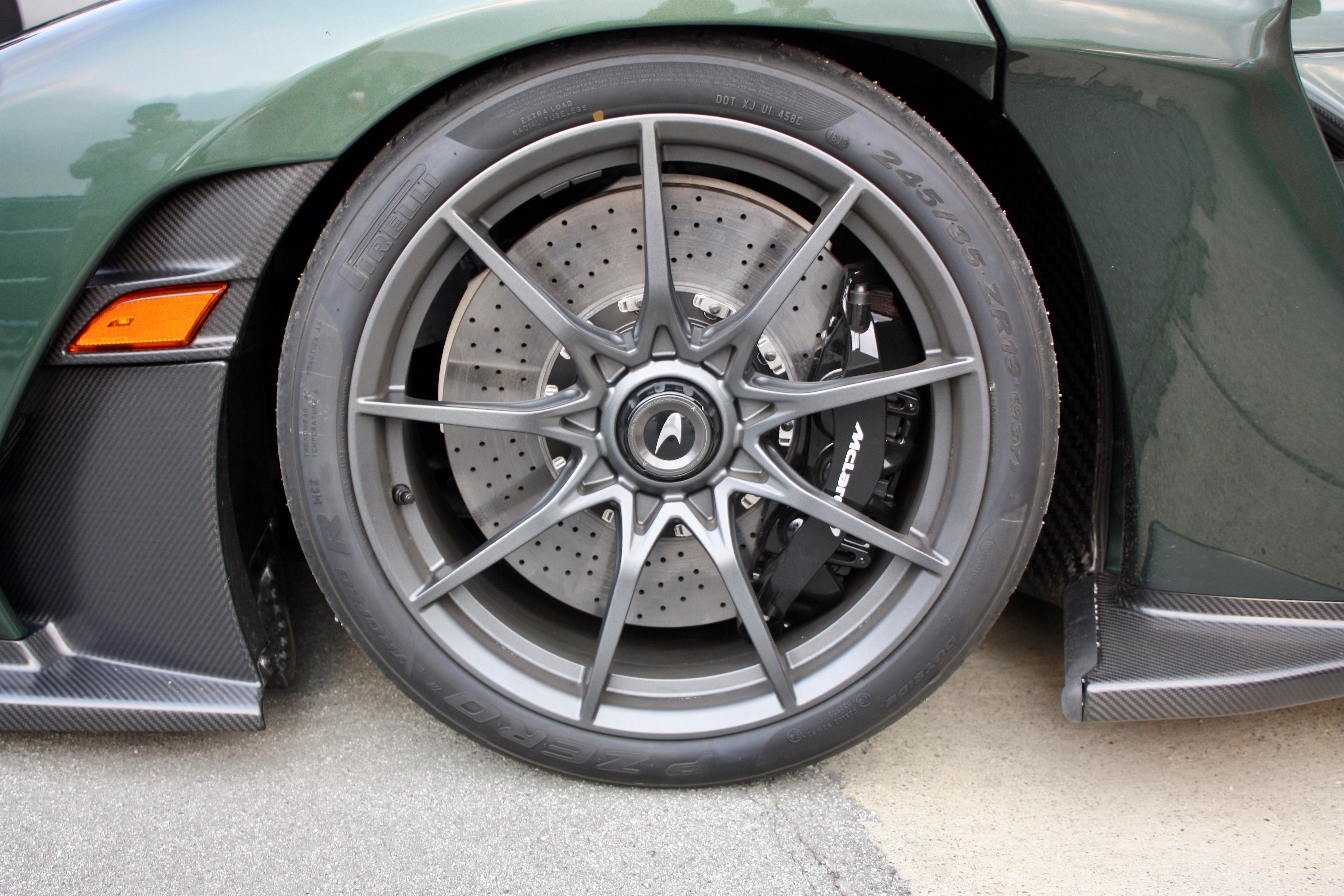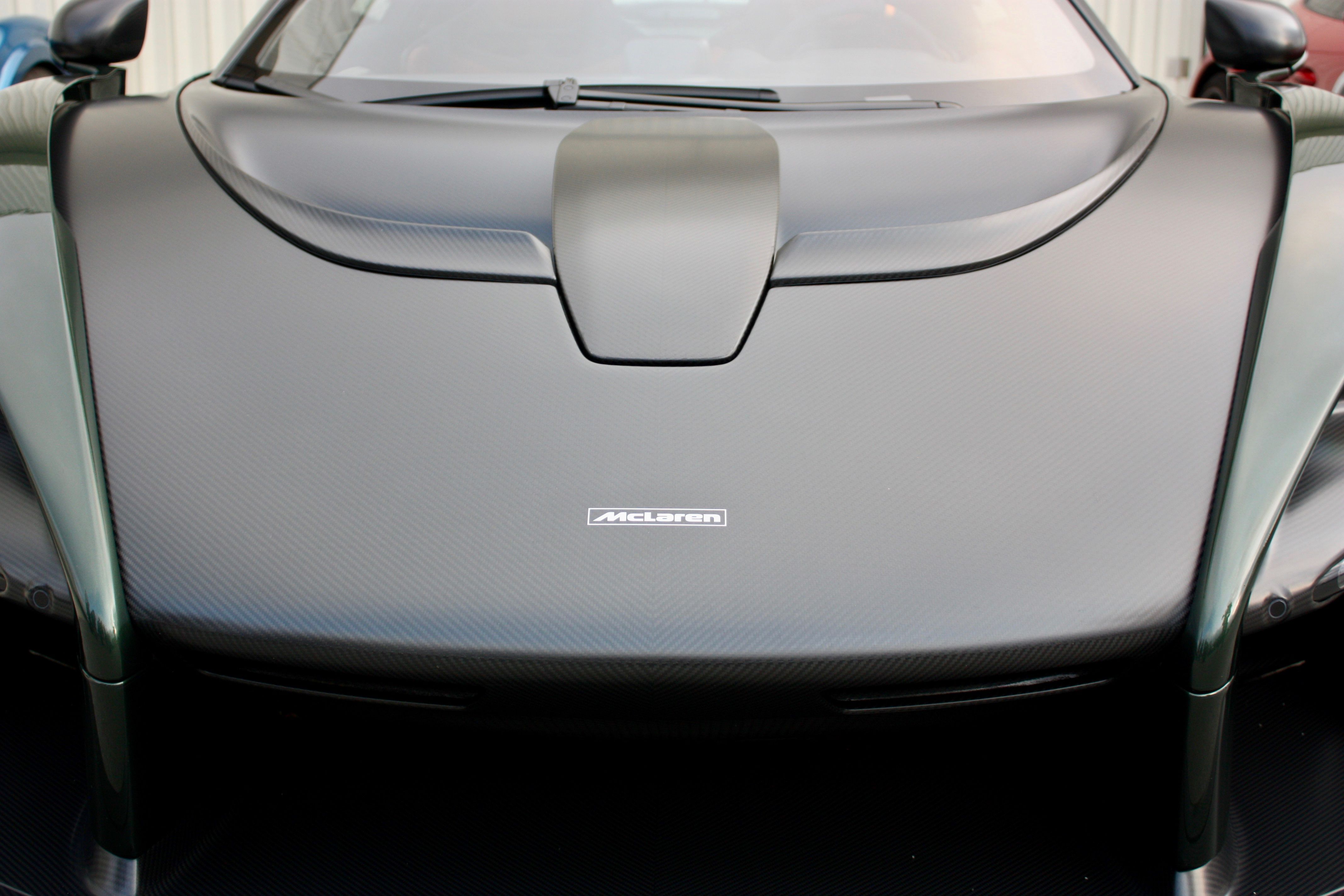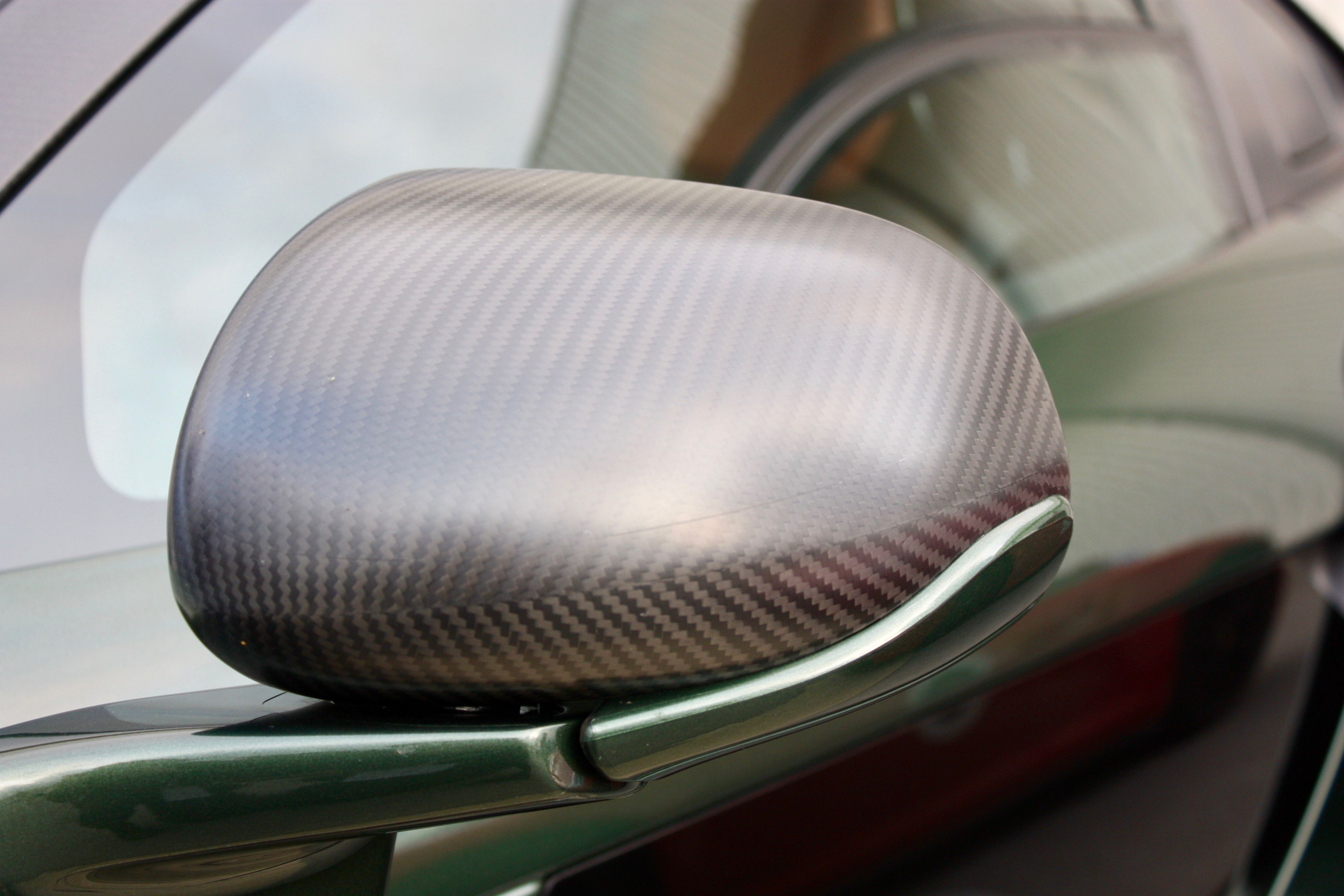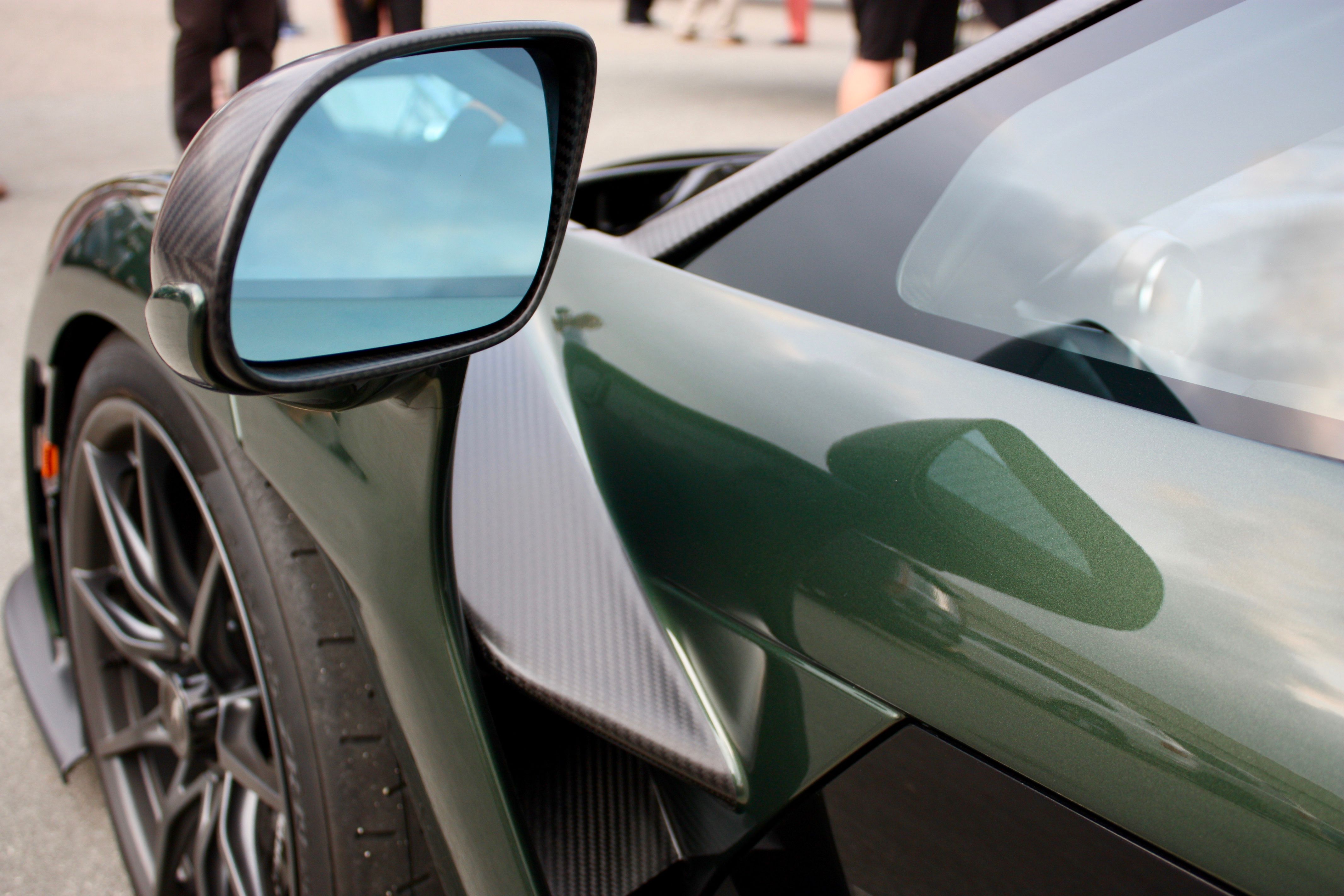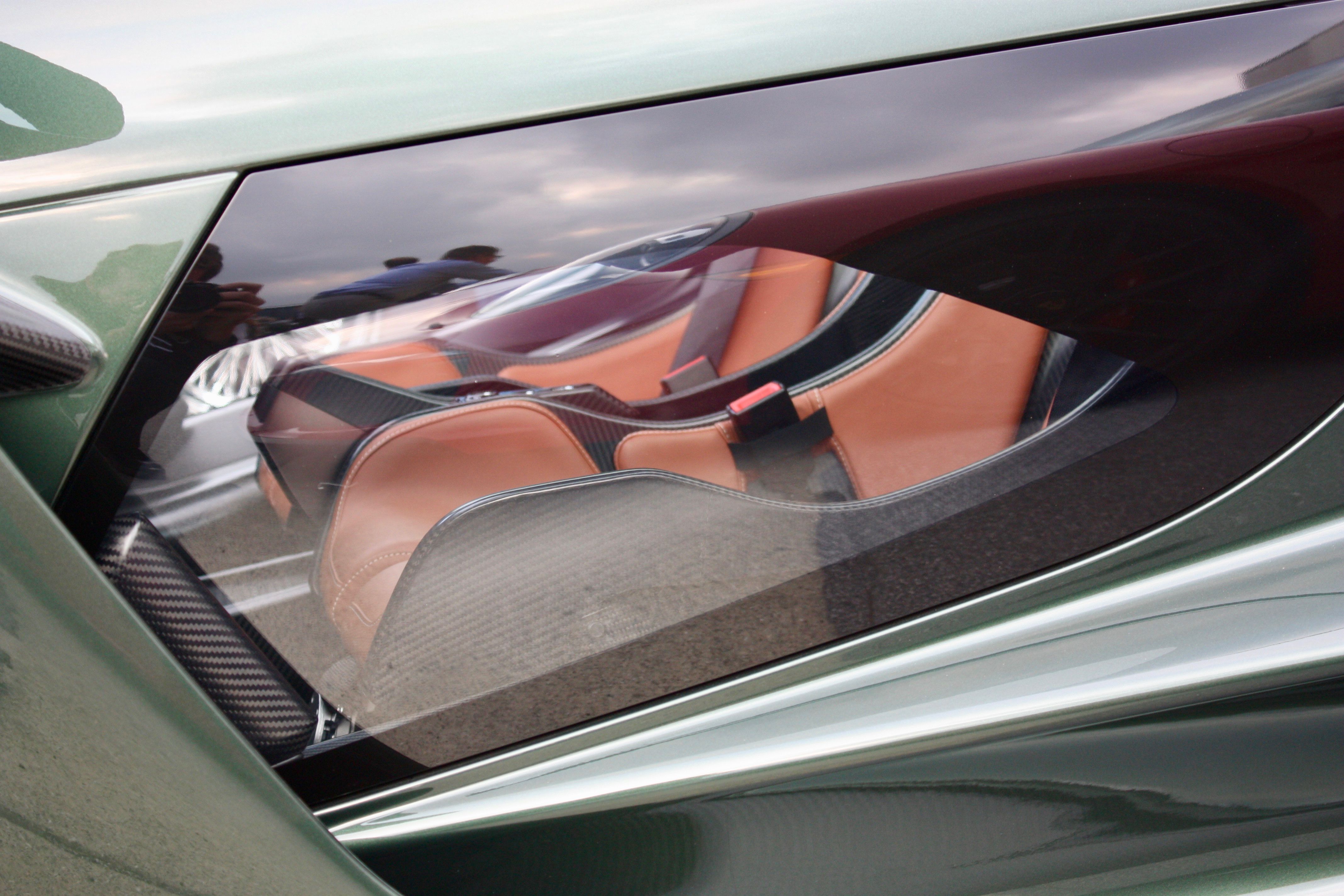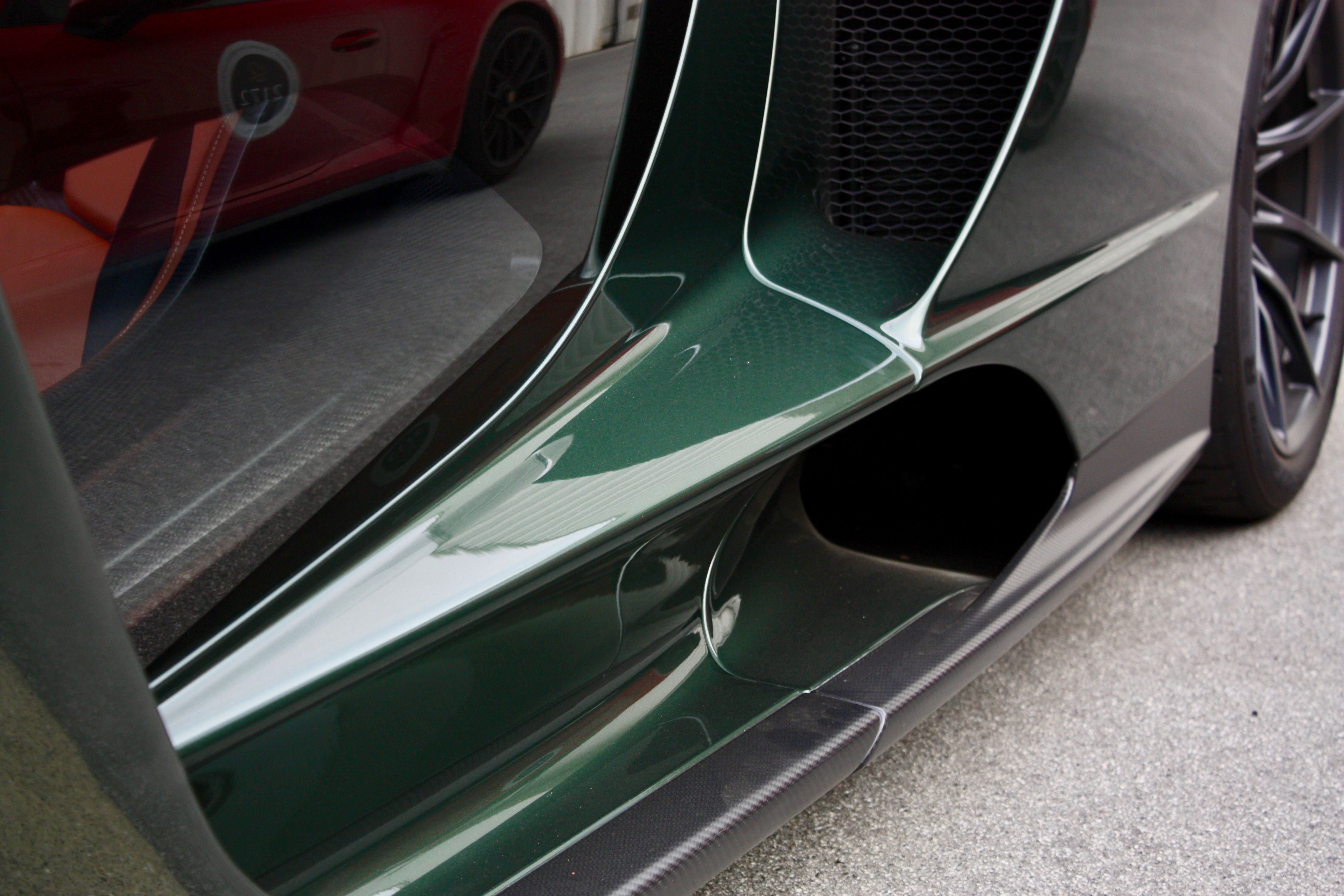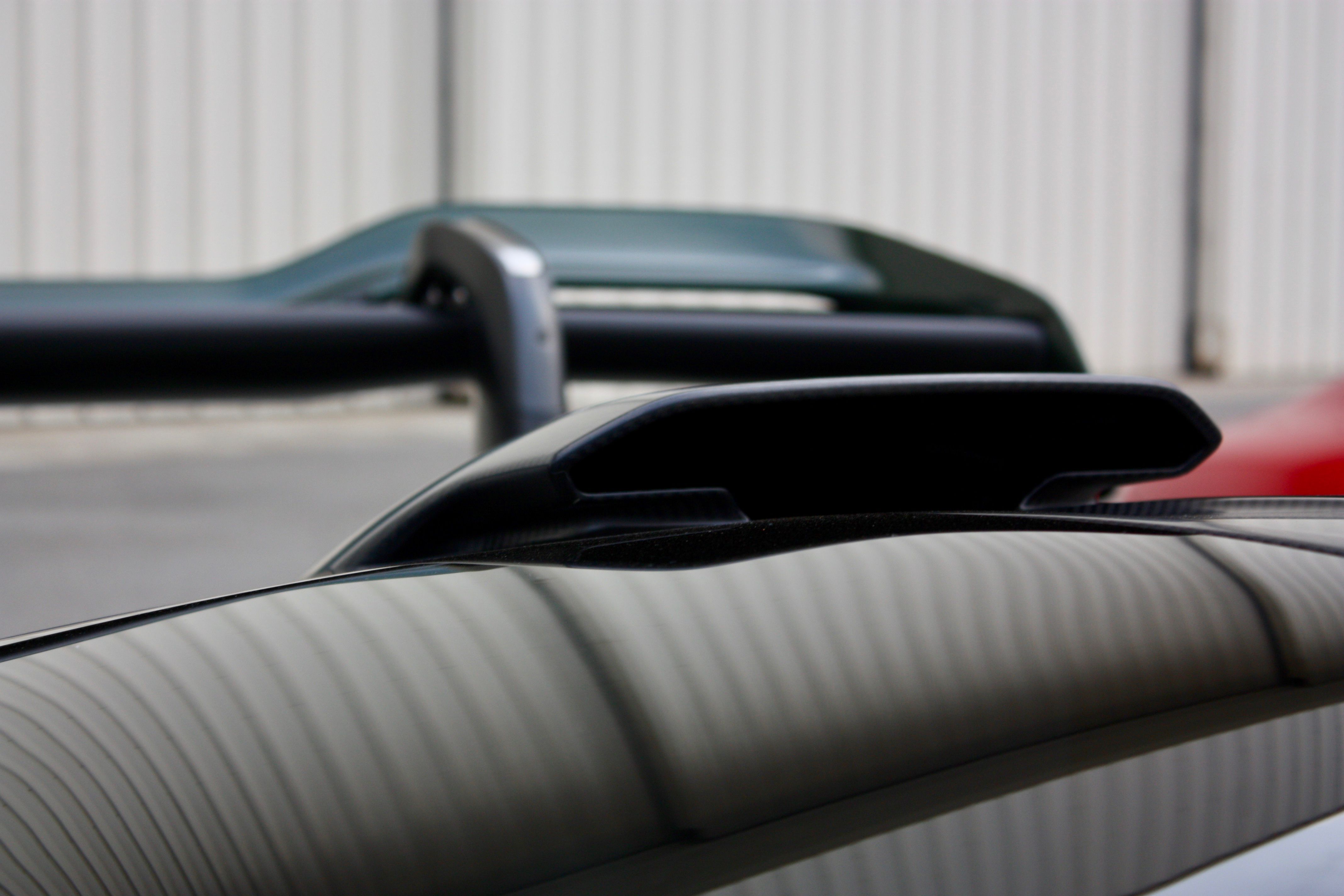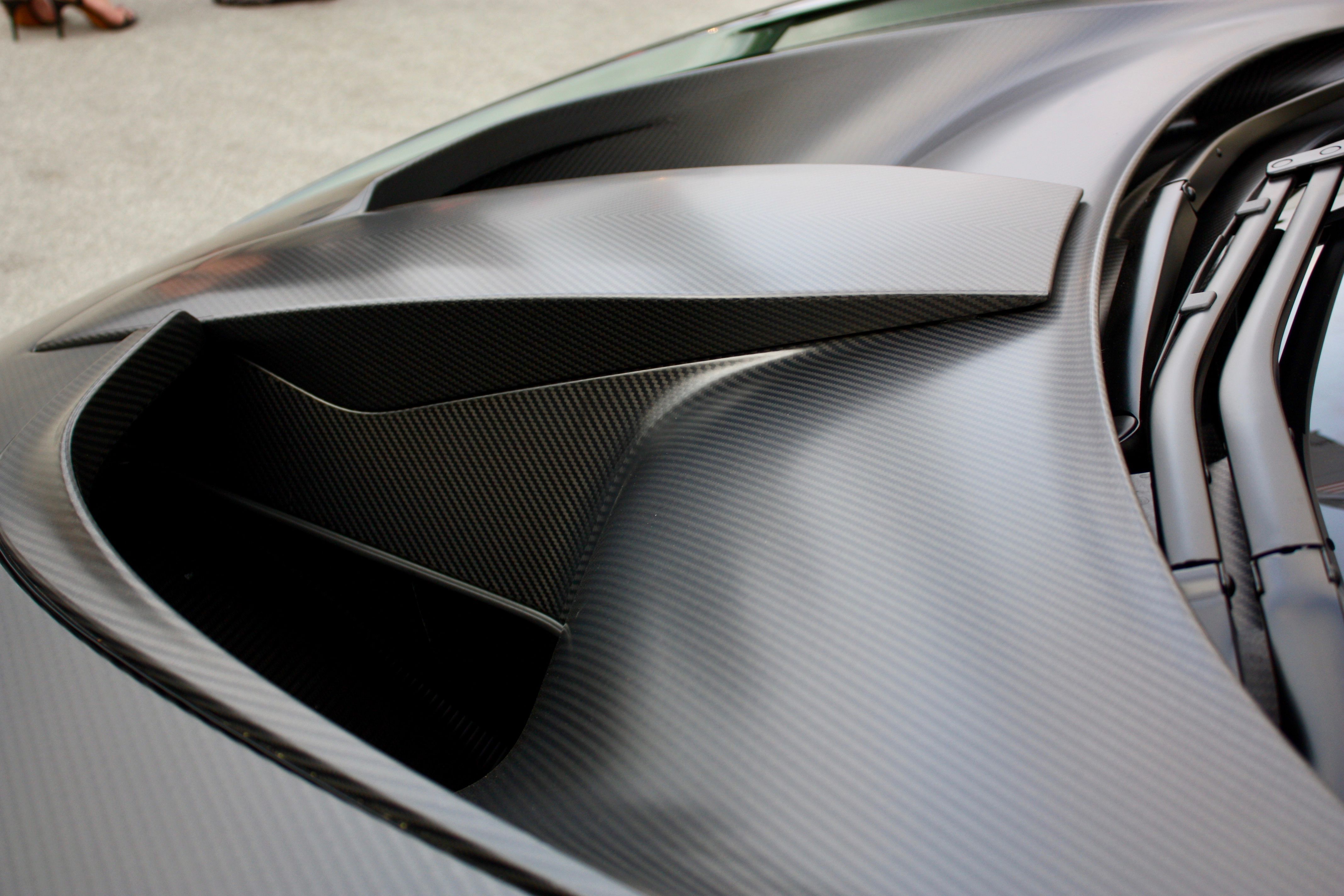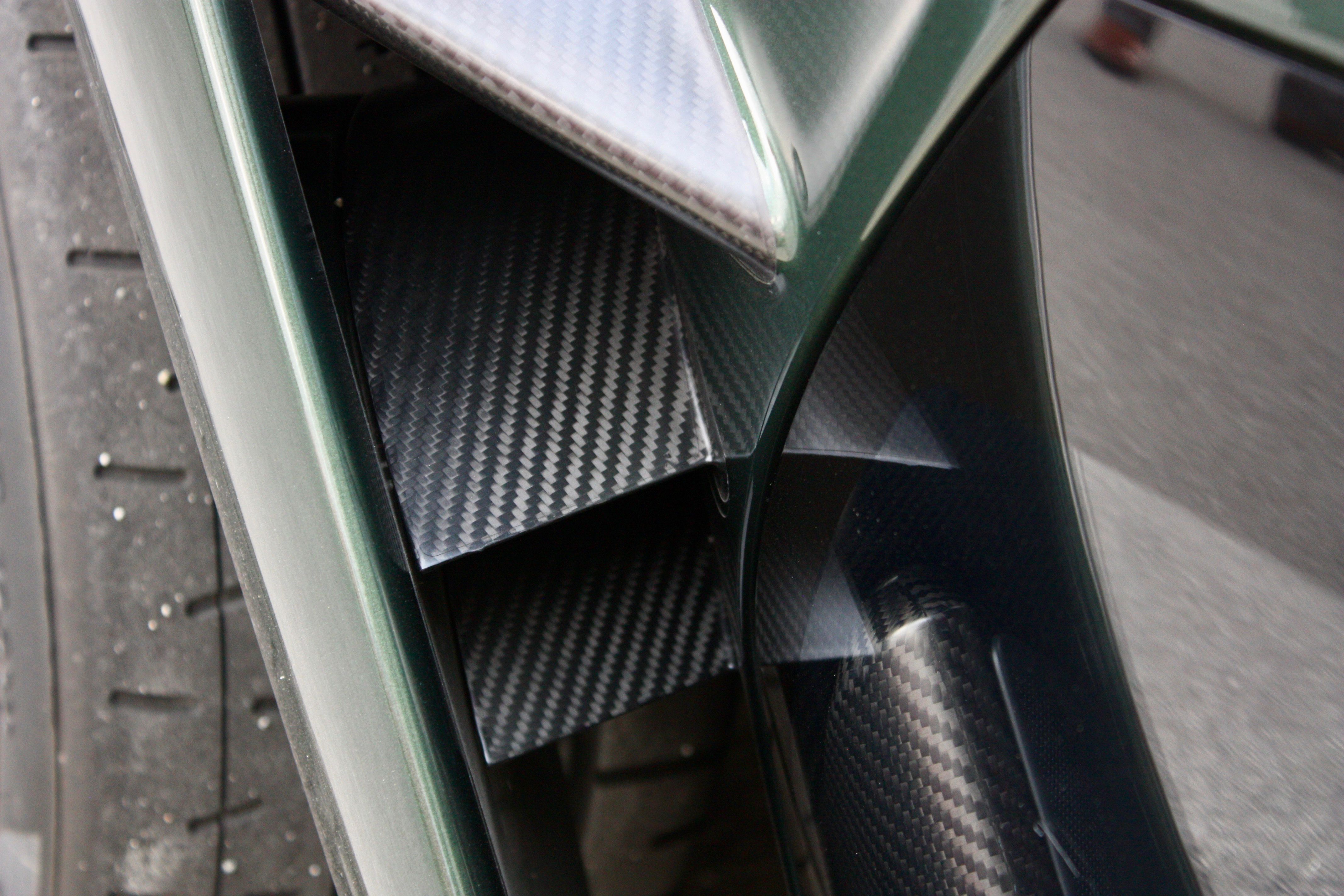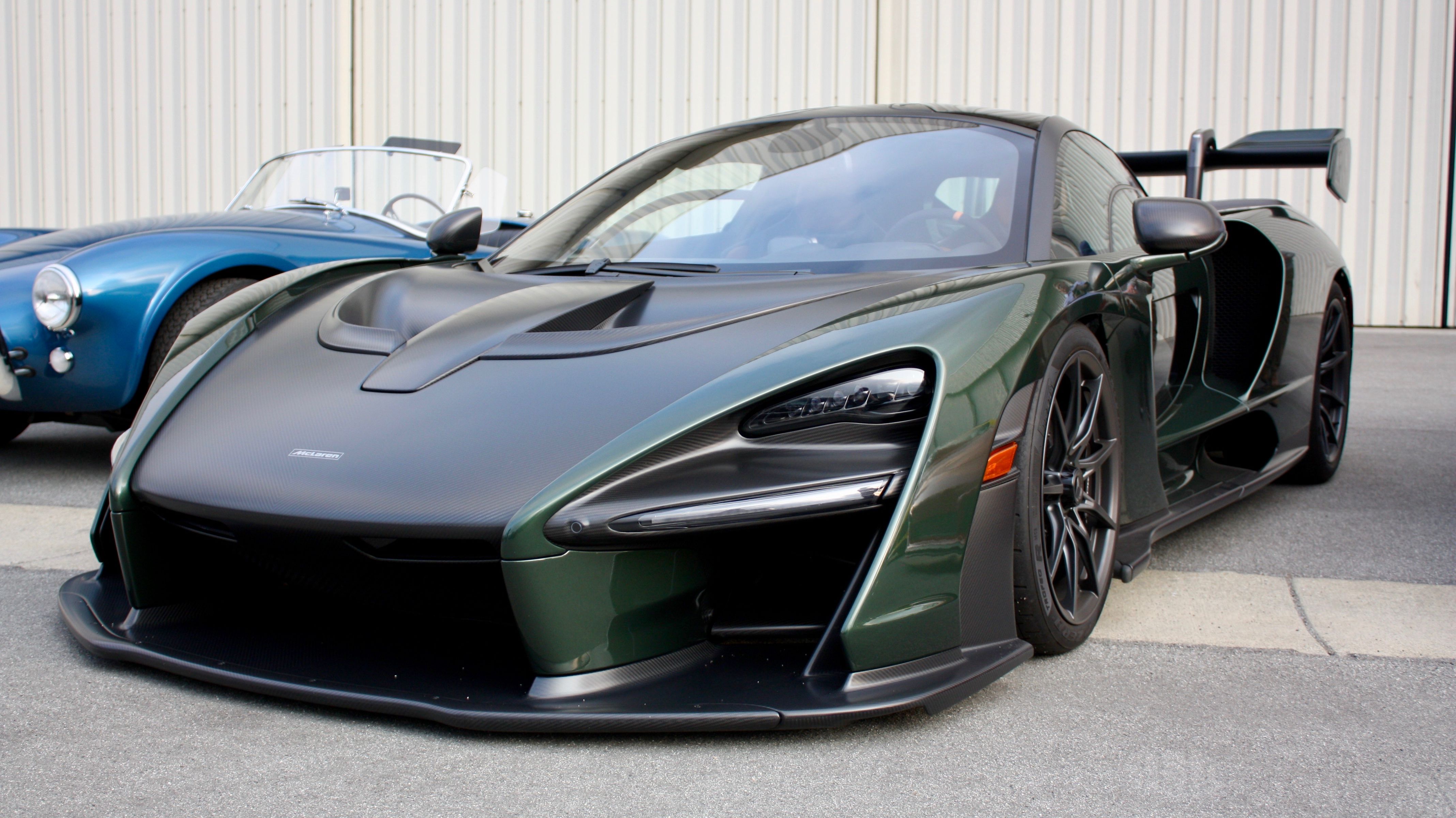A successful race car builder from the 1960s to the 1980s, McLaren began making a name for itself as a road car manufacturer in the early 1990s with the F1. Launched with many benchmarks, including the first carbon-fiber construction, the F1 became one of the most iconic supercars ever made. It was so great that it took McLaren 15 years to gives us a predecessor, the P1, introduced at the 2013 Geneva Motor Show. Four years have passed, and the McLaren Ultimate Series is entering a new era with a brand-new supercar. Codenamed the P15 and in the rumor mill for a couple of years now, the McLaren Senna was unveiled on December 9, 2017, as the company's ultimate road-legal race car.
A unique design that brings together styling cues from the P1, 720S, and new aerodynamic features, the Senna bears the name of F1 driver Ayrton Senna, who drove McLaren Formula One cars for six years, from 1988 to 1993.
While the Senna's aggressive design and aerodynamics aren't surprising, the fact that it's not a hybrid comes as a bit of shock. With its predecessor sporting an electric motor, the new Ultimate Series was expected to have a similar layout. The same goes for the interior, which has a standard left-hand-drive configuration, despite prototypes that have a mid-mounted driver's seat, like the old F1. But this doesn't make the Senna a less spectacular supercar. On the contrary!
Update 8/27/2018: The McLaren Senna may be something of a unicorn to most of the world but we finally managed to catch up with it in the metal at Monterey Car Week 2018. Check out our video and all-new images below.
2019 McLaren Senna
- Make: Array
- Model: 2019 McLaren Senna
- Engine/Motor: V8
- Horsepower: 789
- Torque: 590
- Transmission: Dual-clutch, seven-speed transmission
- [do not use] Vehicle Model: Array
Official video
Exterior
It's basically impossible to describe a car like this with one work, but if I were forced to do it, I'd use "extreme." Actually, make that "extreme!!!" Granted, the P1 and the 720S are also pretty extreme styling-wise, but the Senna just takes things to a new level. Its organic styling cues, the teardrop shape, and the massive rear wing put it in a league of its own.
The front fascia is a significant departure from previous McLaren designs, not so much in aesthetics as in aerodynamics. There are a few recognizable features, like the split hood from the P1 (but in a more aggressive form here) and the slim headlamps carved into the body. But everything else is new. The nose is more angular, and the intake underneath is bigger. The vents under each headlamp make it seem as if the nose simply floats above the splitter.
Things become more extreme onto the sides. Whereas previous McLaren's had a rather traditional design with the body becoming increasingly wider toward the rear, the Senna is narrowed between the front and rear fenders. The shape is somewhat similar to Formula One and IndyCar vehicles, with the wide side skirts acting like side pods. It's pretty much an open wheeler design with full fenders and a closed cockpit. The design may seem radical, but it has nothing to do with styling. Everything was conceived in the wind tunnel. When seen from above, the Senna has a teardrop shape, and all the components seem clipped onto the cabin. The narrower center section also helps with cooling, having enabled McLaren to fit massive vents into the rear fenders and the side skirts.
Around back, the Senna has nothing in common with previous McLarens. While both the P1 and 720S have organic designs with lots of flowing lines, the Senna's rear fascia is all about horizontal features. The deck is pretty flat too, as is the upper side of the diffuser, which sticks out a few good inches from the body. The rear fenders also have a unique design, raising above the decklid to create to create an aerodynamically optimized area. The fenders are backed by prominent gurney flaps that direct air away from the rear deck. The exhaust pipes are placed on the decklid too, facing upward, yet another unique design.
Below, there are slim LED taillights almost hidden underneath the edge of the decklid. The simple design is also the result of intense aero testing, as they minimize interruption to airflow. The double diffuser is just as wide as the rear fascia and uses its unique design to create a low-pressure zone that sucks the car tighter to the ground. The visual drama is completed by the double-element carbon-fiber rear wing. Sitting four feet from the road at its highest point, the wing has almost vertical stanchions and massive side pods. The design is rather unusual for a road car, being closer to something you'd find on a full-fledged race car, but it proves that McLaren made no compromises on its way to finding the best aerodynamics.
Speaking of which, both the front and rear section feature active, carbon-fiber, aerodynamics and McLaren claims they raise downforce and aero control to "an unprecedented level." Specifically, the Senna generates a whopping 800 kg (nearly 1,764 pounds) of downforce at 155 mph. That's 200 kg (441 pounds) more than the P1 at the same speed and 160 kg (353 pounds) more than the Ferrari FXX K Evo achieves at 124 mph! This tremendous amount of downforce improves cornering and enables the driver to break later, turn it later, and accelerate earlier than usual.
All told, the McLaren Senna is dramatic to say the least and, while it's not the prettiest car the British firm has built so far, its aerodynamics and functionality should be superior to the P1 and maybe even the track-only P1 GTR!
Interior
To get inside the cabin, you need to open the F1-inspired dihedral doors that hinge forward and upward, opening with a portion of the roof. This system provides an aperture of sufficient size for drivers and passengers to enter or exit the cockpit even when wearing a helmet and a race suit. It pretty obvious that while road legal, the Senna is aimed at customers who spend a lot of time at the track. The doors have two-piece glass windows for proper insulation, with a fixed top part and a smaller opening section below.
As you'd expect from a top-of-the-league McLaren, the Senna's cockpit is inspired by the world of racing. Carbon-fiber was used extensively on the dashboard, center console, door panels, seats, and even the steering wheel. Unlike other modern supercars, the steering wheel is free of buttons and switches, while driver controls on the center console have been kept to a minimum. Most functions are operated through the vertical infotainment screen attached to the dashboard, which also includes buttons for the manual transmission setup and the ESC system. Further information is available on the Folding Driver Display, which we first saw in the McLaren 720S.
Designed to rotate around its horizontal axis, the Folding Drive Display provides a comprehensive range of information in its regular, upright position, and switches to Slim Display Model to show only essential data on a small strip, just line in a race car. The idea is to keep the driver focused on the important info while driving at the track, which makes a lot of sense in a car like the Senna.
The carbon-fiber seats have heavy bolstering. The can be had in either Alcantara or leather and have an "S" letter embossed on the headrests. They don't look very comfortable for cruising, but they provide the utmost lateral support on twisty race tracks.
Storage space is restricted to a chamber behind the seats, with just enough room for two helmets and race suits. Yup, that's far from practical, but as a customer, you should feel lucky that McLaren made an effort to add a bit of room in there. The Brits almost removed the second seat, so space for two helmets is actually a bit of a compromise.
Another interesting feature lies atop the cabin and has to do with the experience of driving a road-legal race car. The "snorkel" intake on the roof produces "precisely tailored high-frequency" sounds that make the cockpit come alive under full throttle. In addition, low-frequency sounds from the engine are transferred into the cockpit through unique engine mounts. The double-walled rear structure of the carbon fiber Monocage absorb these vibrations and amplify every change in engine revs, making it seem almost as if the powerplant is "sitting alongside the driver."
Sounds exciting but, unfortunately, not many of us will get to experience that anytime soon.
Drivetrain
Much like its predecessor, the Senna is built around a carbon-fiber tub. It's called the Monocage III, and it's a further development of the structure in the 720S, itself an upgrade over the P1's. McLaren claims it's the strongest monocoque it has built. It's also incredible light and contributes to a supercar that tips the scales at an impressive 1,198 kg (2,641 pounds). It's a bit heavier than the F1, which weighed in at 1,138 kg (2,509 pounds), but it's very impressive for a modern supercar.
Power comes from an upgraded version of the twin-turbo, 4.0-liter V-8 engine that McLaren introduced in the 720S. On top of the upgraded components, the powerplant also gained lighter internals. Although the successor to the P1 was expected to be a hybrid, there's no electric motor in the Senna. The decision is somewhat awkward given McLaren's aim to electrify its entire lineup, but maybe the Brits are planning another supercar with a gasoline-electric combo.
But despite not being backed by an electric motor, the V-8 is plenty powerful, being rated at 789 horsepower and 590 pound-feet of torque. That’s an extra 79 horsepower and 22 pound-feet of twist over the 720S. Compared to the P1 in gasoline-only mode, it’s a 62-horsepower and 59-pound-foot upgrade. However, the Senna is actually 114 horsepower and 133 pound-feet below the P1’s total hybrid rating. It’s a bit disappointing that a brand-new supercar is less powerful than its predecessor, but the better power-to-weight ratio (659 horsepower per tonne vs. 647) and the superior aerodynamics make the Senna quicker and more agile.
The sprint from 0 to 60 mph comes in 2.7 seconds, a tenth-second quicker than the P1. Charging to 124 mph takes 6.8 clicks, a full second quicker than the awesome 720S. The quarter-mile time is equally impressive at 9.9 seconds, while stopping from 124 mph takes only 100 meters (328 feet). Top speed is rated at "only" 211 mph, six mph below the P1. The Senna is also a half-second slower from 0 to 186 mph, but this decrease is normal given the extreme downforce.
Beyond the power rating, the V-8 uses motorsport-honed dry sump lubrication and a flat-plane crankshaft. A dual-clutch, seamless-shift, seven-speed transmission delivers the power to the rear wheels. The fully automatic mode is default, but the driver can choose full manual control of gear shifts via carbon-fiber paddles mounted behind the steering wheel.
|
McLaren Senna |
McLaren 720S |
McLaren P1 |
McLaren P1 Hybrid |
|
|
Engine |
4.0-liter V-8 |
4.0-litre twin-turbo V-8 |
3.8-litre twin-turbo V8 |
3.8-litre twin-turbo V8 plus electric motor |
|
Horsepower |
789 HP |
710 HP @ 7,500 RPM |
727 HP @ 7,500 RPM |
|
|
Torque |
590 LB-FT |
568 LB-FT @ 5,500 RPM |
531 LB-FT @ 4,000 RPM |
|
|
Combined output |
903 HP |
|||
|
Combined torque |
1,100 LB-FT |
|||
|
Transmission |
Dual-clutch, seven-speed transmission |
7 Speed SSG |
dual-clutch seven-speed gearbox |
dual-clutch seven-speed gearbox |
|
Weight |
2,641 LBS |
2,828 Lbs |
3,075 Lbs |
3,075 Lbs |
|
0 to 60 mph |
TBA |
2.8 seconds |
2.8 seconds |
2.8 seconds |
|
Top Speed |
TBA |
212 mph |
217 mph |
217 mph |
Suspension and Brakes
The Senna rides on a RaceActive Chassis Control II hydraulic suspension that works in conjunction with the front and rear active aerodynamics system. The double-wishbone features hydraulically interconnected dampers and hydraulic anti-roll bars instead of the conventional mechanical units. The whole system is a further development of the variable stiffness and ride height technology first seen in the McLaren P1
The stiffness is controlled using a kinetic roll system, while a new Race mode lowers the ride height, lowers the center of gravity, and stiffens the suspension.
Stooping power comes from a new, advanced braking system with carbon-ceramic discs. The wheels, which are limited to just one design with a race-spec center nut, come wrapped in bespoke Pirelli P Zero Trofeo R tires. Made specifically for the McLaren Senna, these tires were designed for the race track but approved for road use.
Prices
Pricing for the McLaren Senna starts from £750,000 including taxes in the United Kingdom. This converts to around $1 million as of December 2017, but we'll have to wait for official pricing for the U.S. market for an exact figure.
Interestingly enough, the Senna costs less than the P1, which retailed from £866,000 in the U.K. Having said that, it's likely that U.S.pricing for the Senna will be lower than the P1, so expect it to fetch less than $1.35 million. I'd venture to say that the supercar will start from around $1.15 million.
Production of the Senna will be limited to 500 units, which is 125 more than the P1, which was built in 375 examples. According to McLaren, the entire production run is already sold out. The official debut will take place at the Geneva Motor Show in March 2018.
Competition
Finding competitors for the Senna is a difficult task. While there are plenty of powerful supercars out there, like the Ferrari 812 Superfast and the Bugatti Chiron, none are as capable at the track as the Senna. The Aston Martin Vulcan would have what it takes to give the McLaren a run for its money, but you can't drive it on public roads. This leaves us with just two high-profile supercars that have yet to be launched for sale as of December 2017.
Aston Martin Valkyrie
Developed with input from Formula One genius Adrian Newey, the Valkyrie is as innovative as the Senna. It has aggressive aerodynamics, F1-inspired styling, and loads of unique features that you can't see on other production cars. And it's road legal. Wild-looking on the outside, the Valkyrie is very simple on the inside, where Aston Martin took the same no-nonsense approach as McLaren. This car is made almost entirely of carbon-fiber and, unlike the Senna, it's being designed to deliver a 1:1 power-to-weight ratio. Specifics aren't yet available, but it's safe to assume that the Valkyrie will crank out more than 1,000 horsepower and hit 60 mph from a standing start in only 2.5 seconds. Power is supposed to come from a 6.5-liter V-12 engine, but it's not yet known whether it will be part of a hybrid drivetrain or not. Production will be limited to "between 99 to 150 vehicles," including the prototypes and the 25 track-only cars, so it will be quite the rare gem. It will be more expensive than the McLaren too, as it will cost more than the Vulcan, which retails for a whopping $2.3 million.
Read our full story on the 2018 Aston Martin Valkyrie.
Mercedes-AMG Concept One
AMG's very first supercar project isn't supposed to arrive until 2019, but we already know a few things about it. Styling-wise, the most noticeable thing about it is that it doesn't look like a Mercedes. Second; it's not as radical as the Senna and the Valkyrie, but this isn't a bad thing if you like more subdued designs. Still, it's supposed to have race-like aerodynamics and downforce for solid performance on the track. And yes, it will be road legal too. The interior follows the same "form follows function" ethos with a clutter-free dashboard and a simple center console. But unlike the competition, it has massive displays in the center stack and the instrument cluster. The steering wheel is a tad more complicated too. Just like the Senna and the Valkyrie, there's carbon-fiber almost everywhere you look. Motivation comes from a Formula One drivetrain that combines a 1.6-liter V-6 with an electrically-boosted turbocharger and an electric motor connected to the crankshaft. Total system output is expected to exceed 1,000 horsepower. Unlike the competition, the Concept One will also be able to run on electricity alone, albeit for only 15 miles or so.
Read our full review of the 2020 Mercedes-AMG Concept One.
Conclusion
Although some performance ratings sit below previous supercars built by the British firm, the McLaren Senna is definitely the most radical supercar ever built. The aerodynamics seem to be out of this world, and the power-to-weight ratio is downright tremendous. To the extent that the Senna doesn't need to be more powerful than its predecessor. Yeah, sure, I'm surprised that the Senna isn't McLaren's most powerful vehicle yet, but power isn't always everything, especially in the case of cars that need to perform well on the track too. And the Senna was designed to do just that. It's a race car that somehow is legal to use on public roads, and not many companies can do that. Yes, the Bugatti Chiron, for instance, is more powerful and has the higher top speed, but it simply sucks at the track. It wasn't built to race, and it doesn't have the ability to do so. As a race-ready vehicle for the road, the Senna is a unique car at this point, and the fact that it looks so radical only makes it that much better. Over to you, Ferrari.
A Tribute to Ayrton Senna
The car is named after Ayrton Senna, one of the world's greatest Formula One drivers. Senna raced Formula One cars for 11 years, six of which it spent with McLaren. The Brazilian joined McLaren in 1988, after four years with Toleman and Lotus, when the British firm was racing Honda engines. Senna went on to win his first championship with McLaren in 1988 while finishing the 1989 season in second position. Two more titles followed in 1990 and 1991, helping McLaren become one of the most prominent F1 constructors at the time. His 1992 season was less impressive with a fourth-place finish, while in 1993 he lost the championship to Alain Prost. In 1994, Senna made the switch to Williams. The Brazilian driver died following a crash at the San Marino Grand Prix, when his car left the racing line at nearly 200 mph, running into a concrete wall. McLaren has won a total of eight constructors' championship between 1974 and 1998, four of them scored with Ayrton Senna in the team.
“Our family is extremely proud of the naming of the new Ultimate Series McLaren Senna. This is the first project that really connects with Ayrton’s racing spirit and performance. The McLaren Senna honors my uncle because it is so utterly dedicated to delivering a circuit experience that allows a driver to be the best they can possibly be. There is an absolute, seamless connection between car and driver and this pure engagement, these sensory cues that a driver responds to and relies upon, ensure an experience so focused and immersive that you are left in awe of the depths of excellence the McLaren Senna possesses," said Bruno Senna, racing driver and McLaren ambassador.
References
McLaren 720S
Read our full review on the 2018 McLaren 720S.
McLaren P1
Read our full review on the McLaren P1.
Read more McLaren news.


